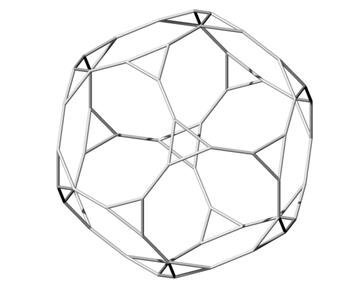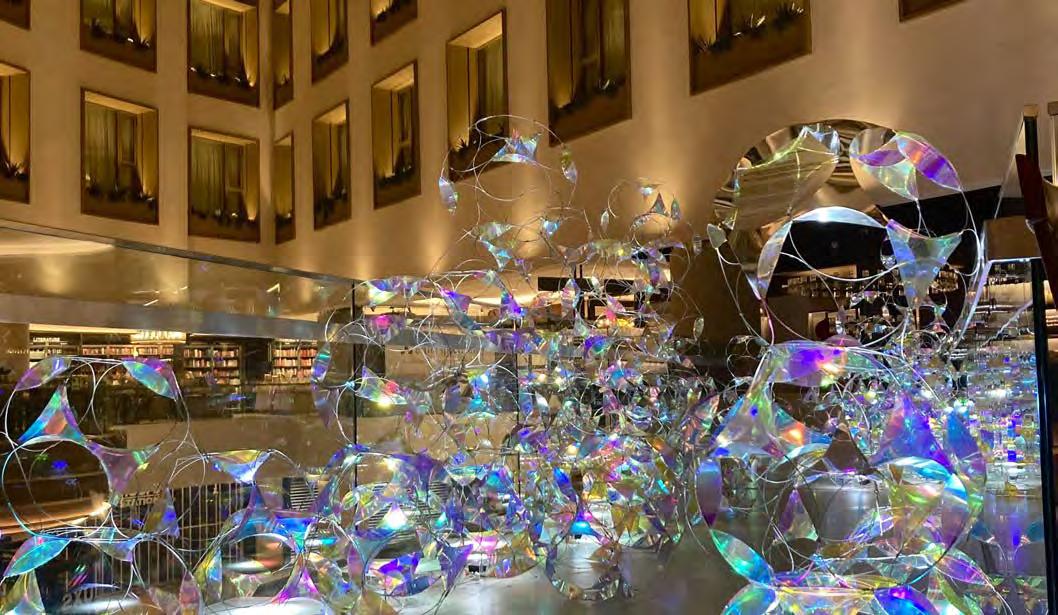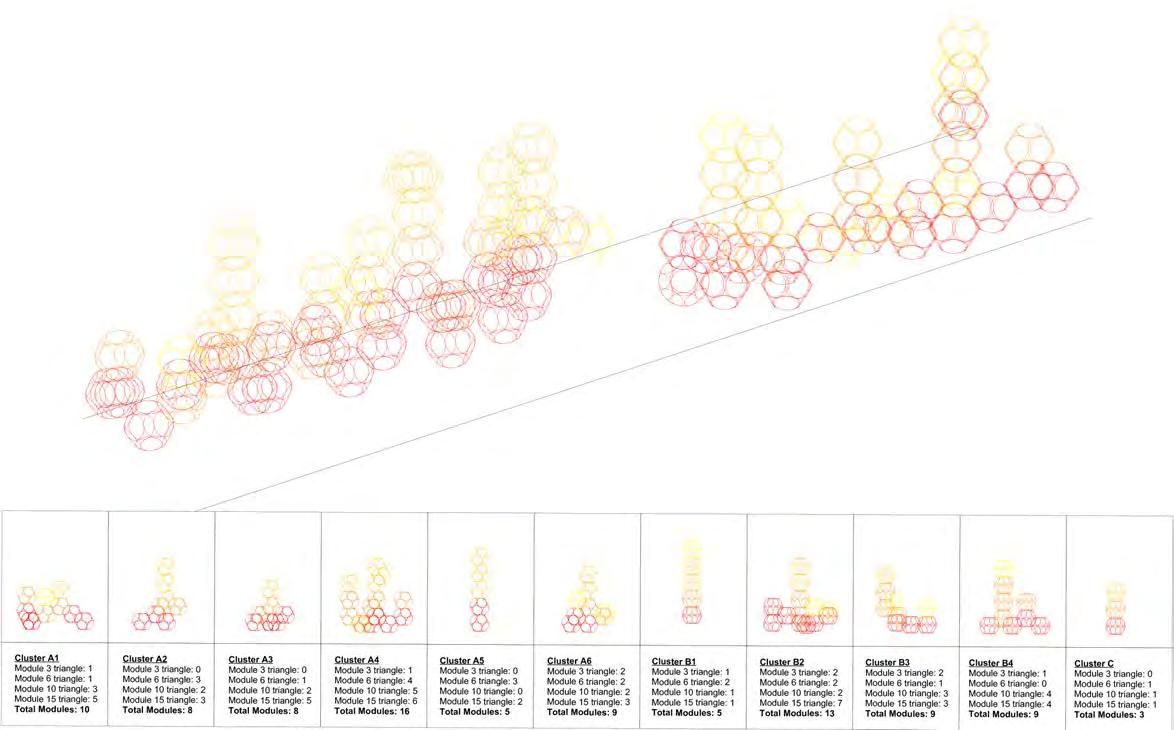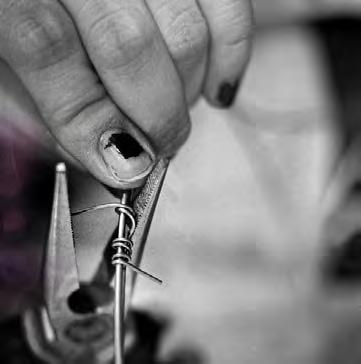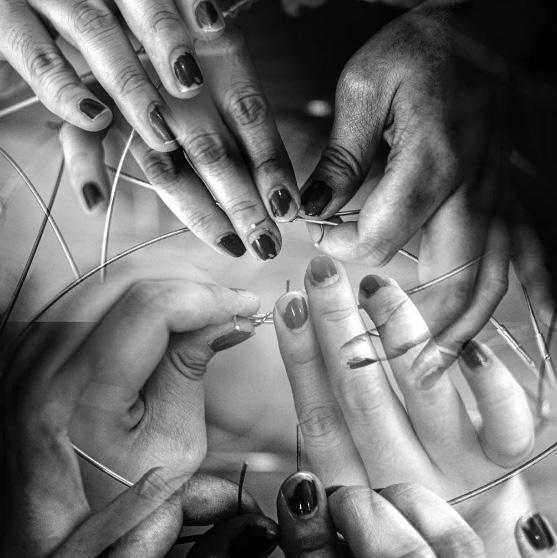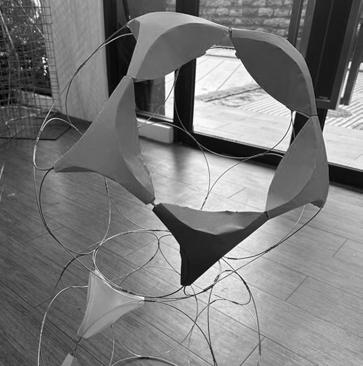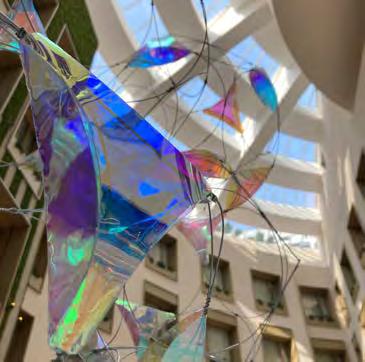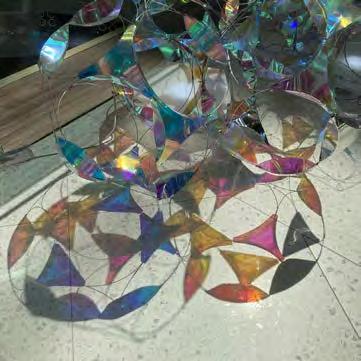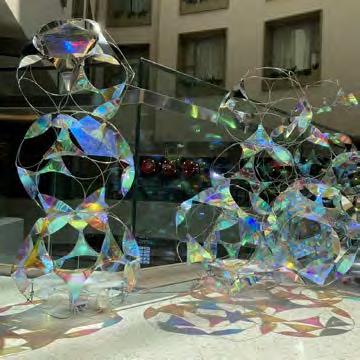

ANGIE LEE XIAO FONG
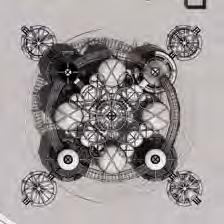
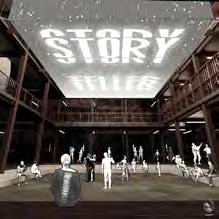
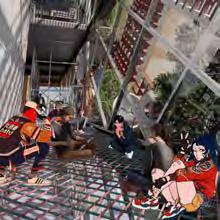
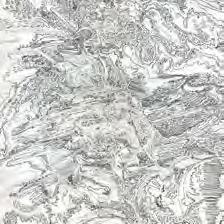
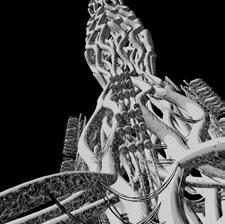
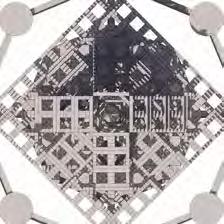
PROFESSIONAL
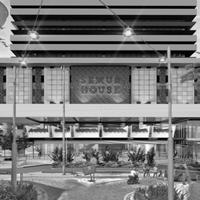
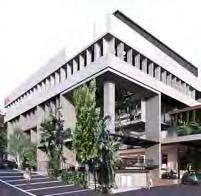
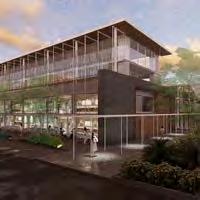
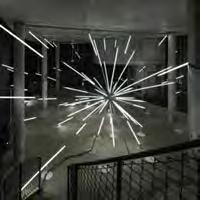
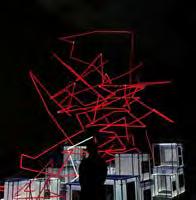
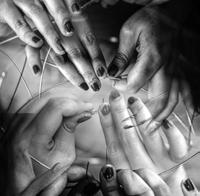
THE MIND MACHINE
Year: 2021
Location: Johor Bahru, Johor.
Program: Mental Health and Consciousness centre
The purpose of this project is to address the issues of rising mental health problems in Malaysia, the stigmatization of accessing mental health and the lack of mental health education amongst the general population. The project aims to understand how the inner workings of the mind works, through conscious and unconscious thinking; to use techniques that are able to tap into the conscious and unconscious thinking in translating abstract thinking into tangible architecture design; and to design a mental health centre that offers consultation, therapeutic treatment, and educates the users on how the mind works, through an explorative journey of space that is translated from the designer’s own conscious and unconscious mind. A wide series of studies regarding consciousness and behaviour, such as of Sigmund Freud’s theory of psychoanalysis and unconsciousness, the levels of consciousness such as animal consciousness, self conscious, higher consciousness, artificial consciousness, and methods to stimulate the conscious and unconscious mind have been used as an effort to try to understand the most familiar yet mysterious thing in the world - the human mind.
Using the surrealist technique of summoning the unconscious mind - surrealist drawing automatism. I created a drawing without thinking of composition, idea, concept, just mindless abstract ideas straight from my unconscious mind.
Then, to decode the drawing’s elements, I used a generative adversarial network, GauGAN by nvidia to segmentize the drawing and create a highly realistic scenery, thus using artefact consciousness to perceive my unconscious mind.
I then repeated the process of segmenting the landscape and producing a new highly realistic scene, until the first image is non recognizable. This questions the legibility of artefact consciousness - is consciousness of machines similar to that of a human’s?
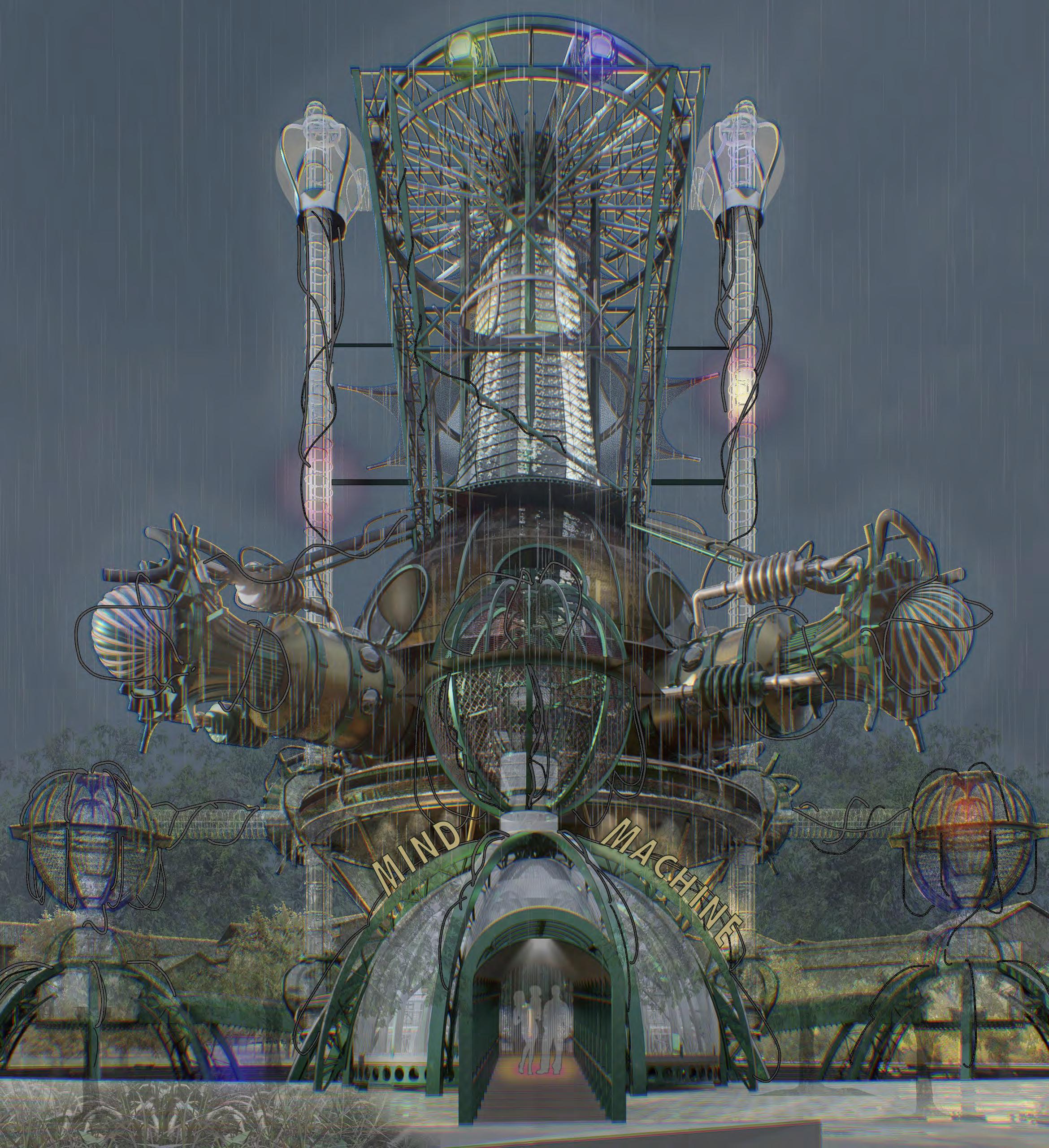
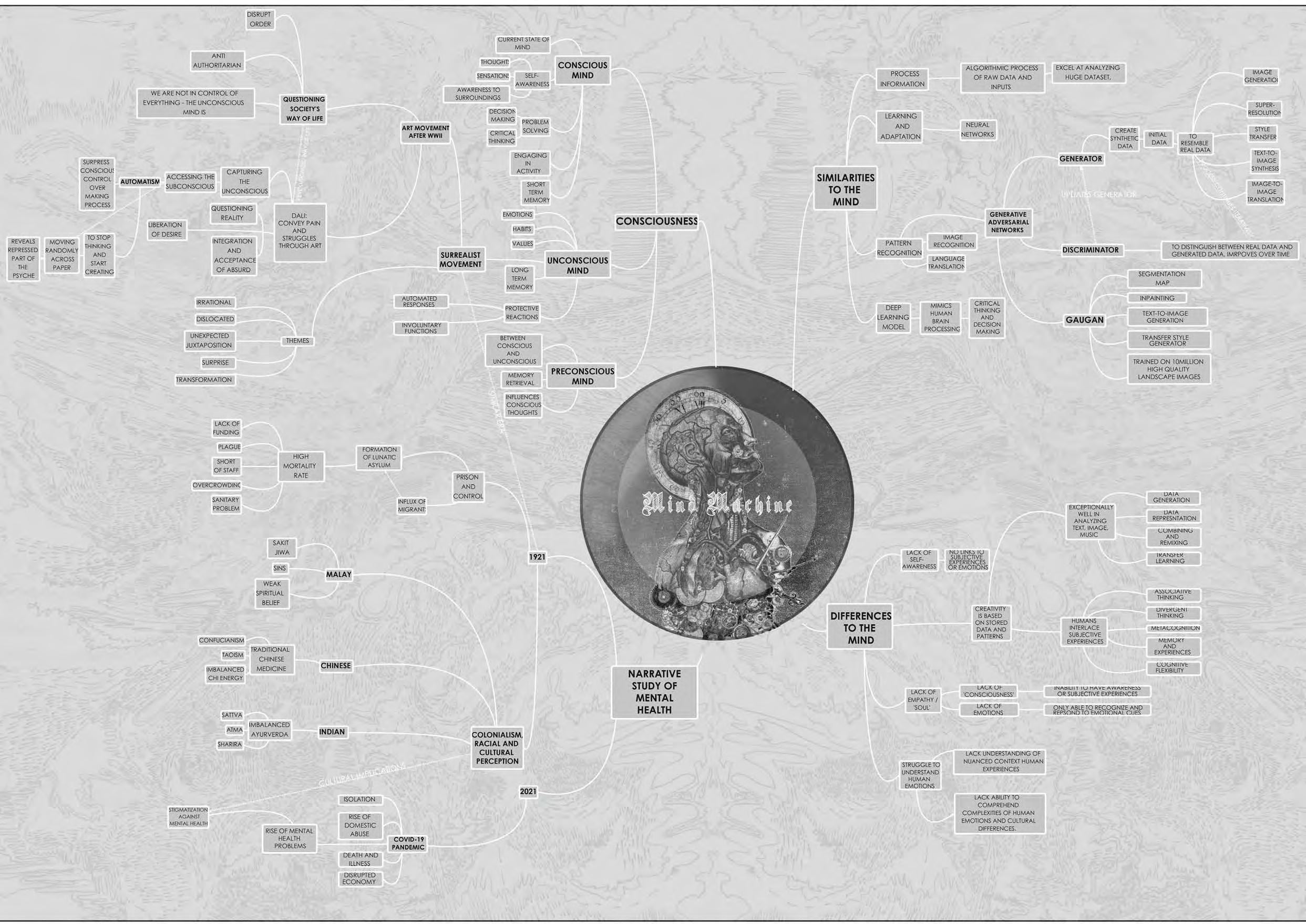
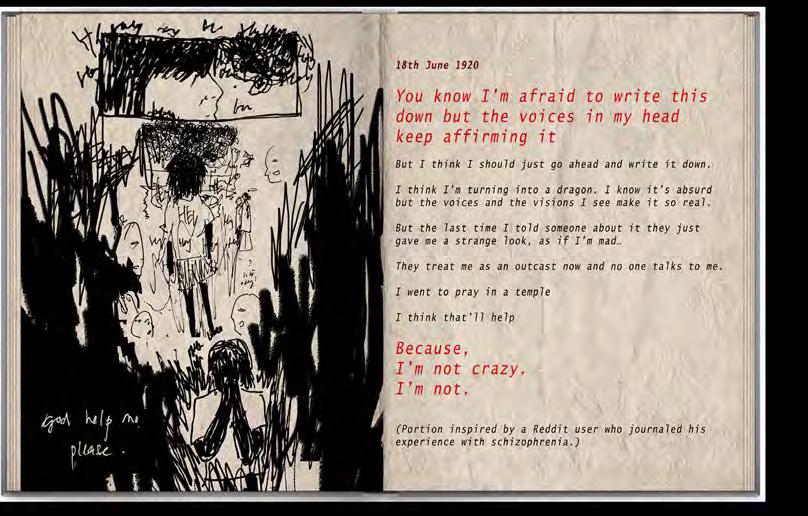

In the mid-19th century, mental health services in colonial states primarily aimed to control vagrants, drug users, and the mentally ill by imprisoning them. With the influx of migrant workers in the early 20th century, formal mental health institutes replaced prisons due to a surge in mental health issues. However, diverse racial perspectives on mental illness existed. Malays perceived it as sakit jiwa, an illness of the soul, often associating it with possession by the devil or spiritual weakness, leading to a strong stigma. Chinese beliefs linked mental health to traditional Chinese medicine and the balance of yin and yang. In Indian culture influenced by Hinduism, mental health was treated through Ayurveda, emphasizing balance in sattva, atma, and sharira.
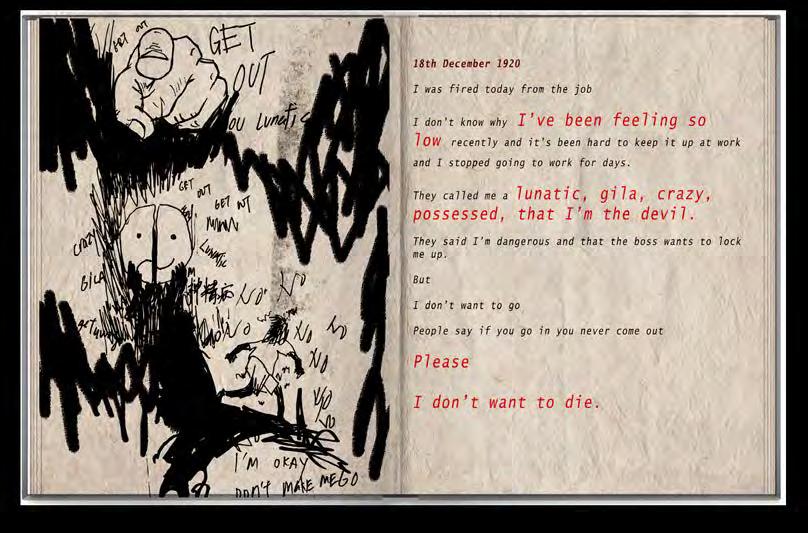
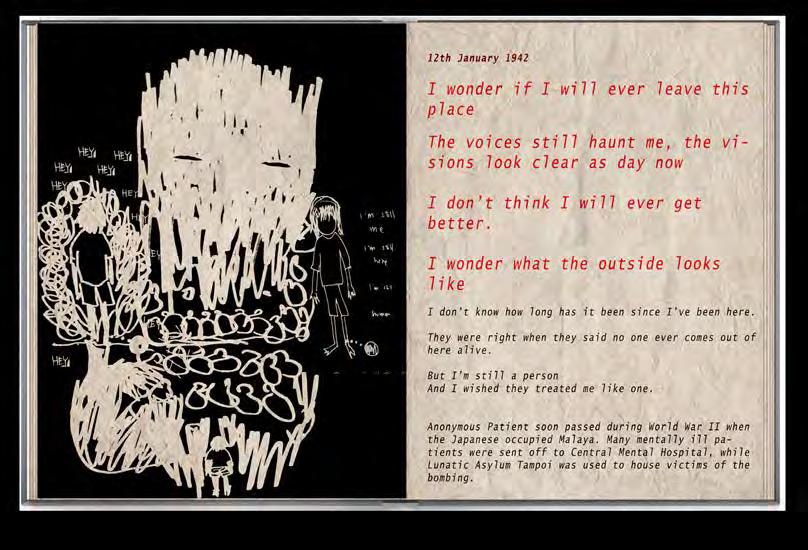
Modern mental hospitals were initially associated with death, fueled by high mortality rates in early asylums. Occupational therapy, often centered around farming, was introduced as both a treatment and a means to generate revenue. Asylums aimed to create an economically and morally productive society, but faced challenges such as overcrowding, diseases, and lack of funding. Treatments evolved with the introduction of methods like Electroconvulsive Therapy and Insulin Therapy, legitimizing psychiatry but not necessarily curing patients. Despite advancements, death rates in asylums remained significantly higher than the general population.
A fictional retelling of life in a mental asylum of a nameless youth In Johor Bahru in 1920.
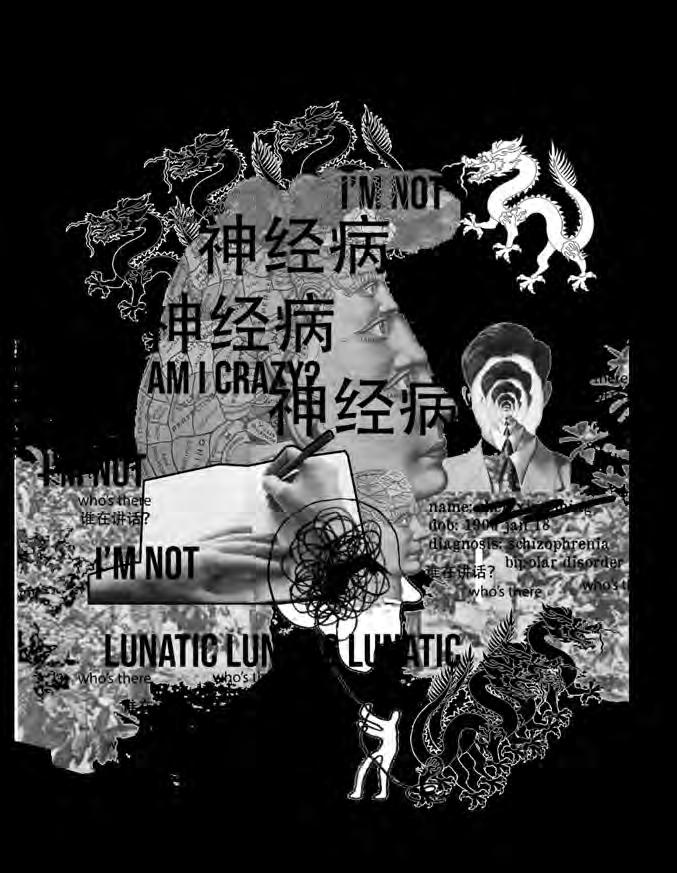
During the Japanese Occupation of Malaya, mentally ill individuals in Johor faced dire conditions with overcrowded Central Mental Hospitals, resulting in a high mortality rate. Post-independence, Malaysia’s mental health institutes saw improvement, following global trends of decentralization in 1959. Better drugs and a shift in societal attitudes allowed for the integration of psychiatric units into general hospitals and community centers. This marked a move from restraint-focused approaches to a recovery-oriented focus, encouraging care for mentally unwell family members within society rather than institutionalizing them.
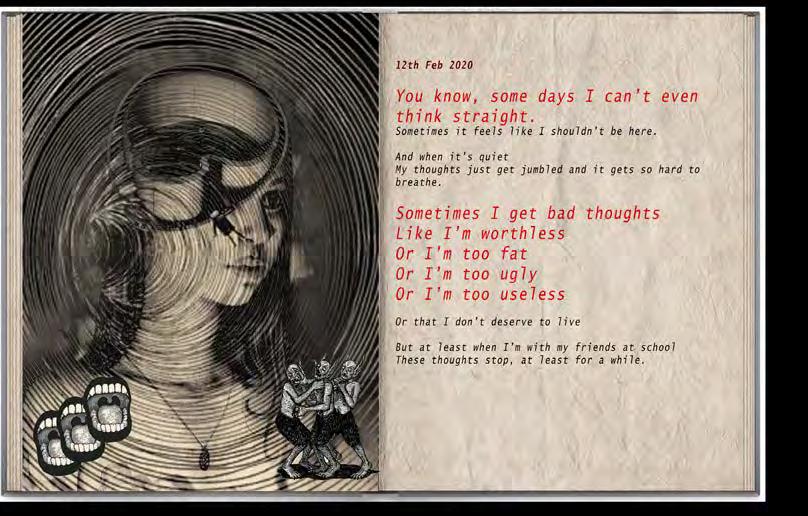
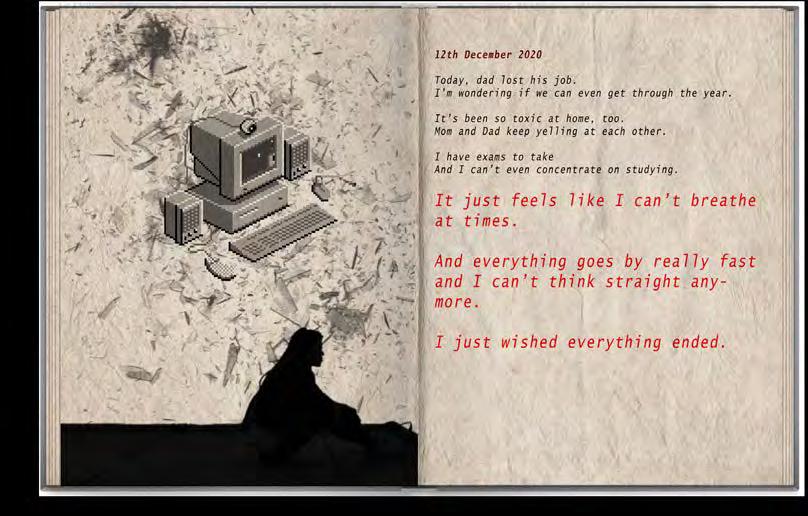
The global COVID-19 pandemic has thrust society into an unprecedented era of mass seclusion, marking the first time in over a century that populations worldwide have been compelled to practice social distancing. While vital for preventing the spread of the virus, this separation contradicts human nature’s innate inclination towards social connectivity. Research indicates a significant impact on mental health, with rising cases of anxiety, grief, panic attacks, and depression. The struggle between the imperative to distance for public health and the adverse effects on social connections creates a complex and challenging dynamic.
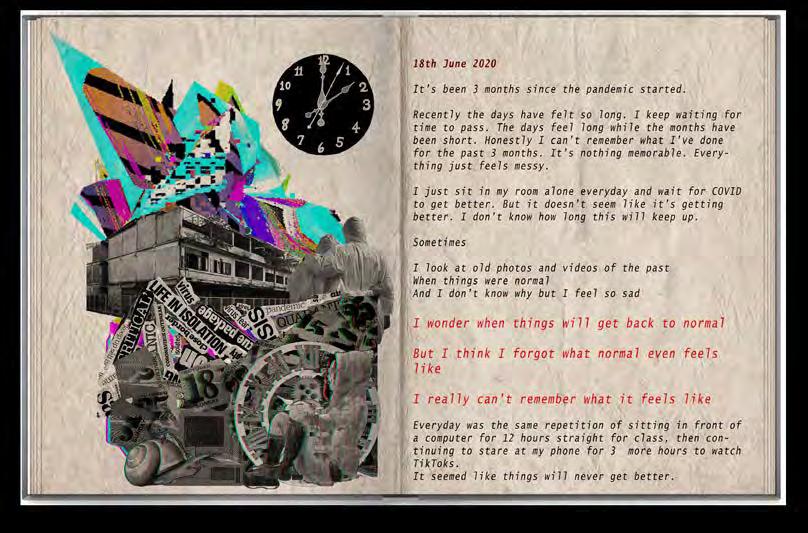
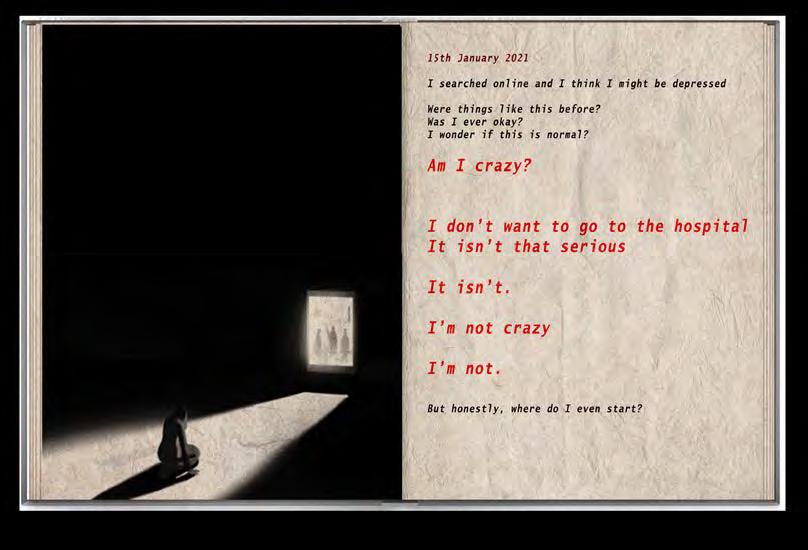
A fictional retelling of life during the COVID-19 pandemic of a nameless youth in Johor Bahru in 2020.
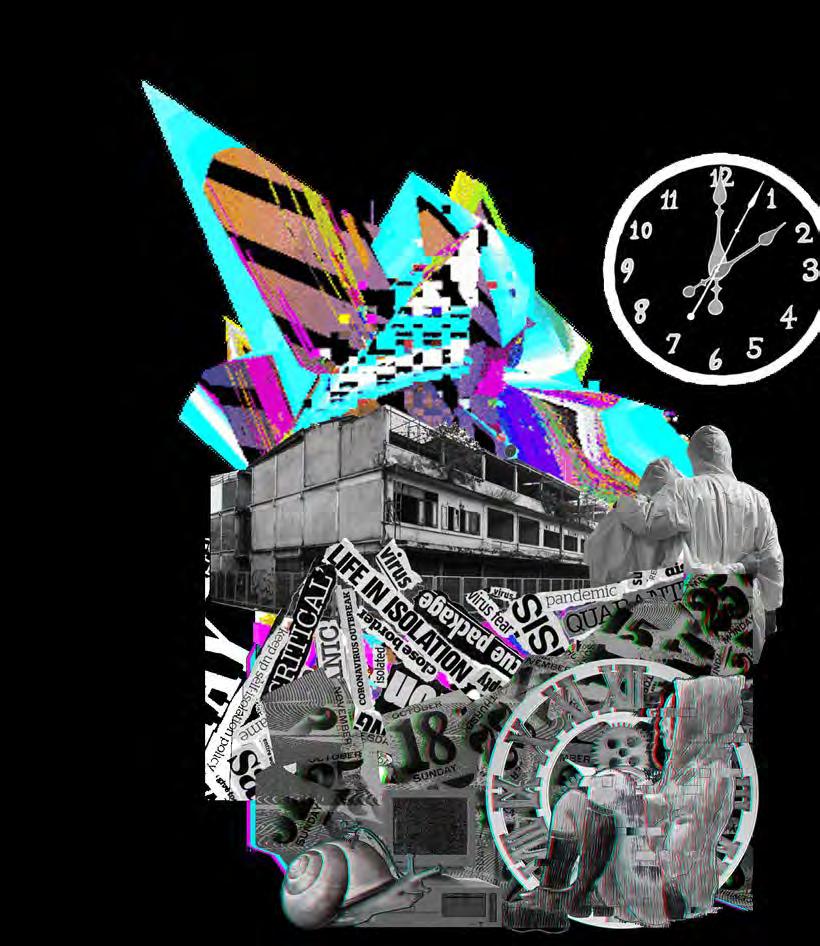
Beyond the direct health concerns, the pandemic has triggered economic disruptions, particularly affecting vulnerable groups like the B40 and M40. Many non-essential businesses have shuttered, leading to income loss for countless individuals. Despite government financial aid, numerous small and medium enterprises (SMEs) find it challenging to weather the economic slowdown, resulting in cut-offs of wages, employees, and even the closure of entire businesses. This economic strain further exacerbates the challenges faced by those with preexisting conditions, intensifying their suffering during these trying times.
Compounding these issues is the enduring cultural and political stigma associated with mental health in Malaysia. Stemming from the early establishment of mental health facilities, this stigma persists today, discouraging individuals from seeking help due to a fear of judgment. Dr. Sook Ning Chua highlights stigmatization as the foremost obstacle to advancing mental health in Malaysia, revealing a collective memory that instills apprehension about addressing mental health concerns. In this environment, there is a notable lack of emphasis on mental health in various sectors such as education, government policies, and the medical industry, creating a challenging landscape for those in need of support.
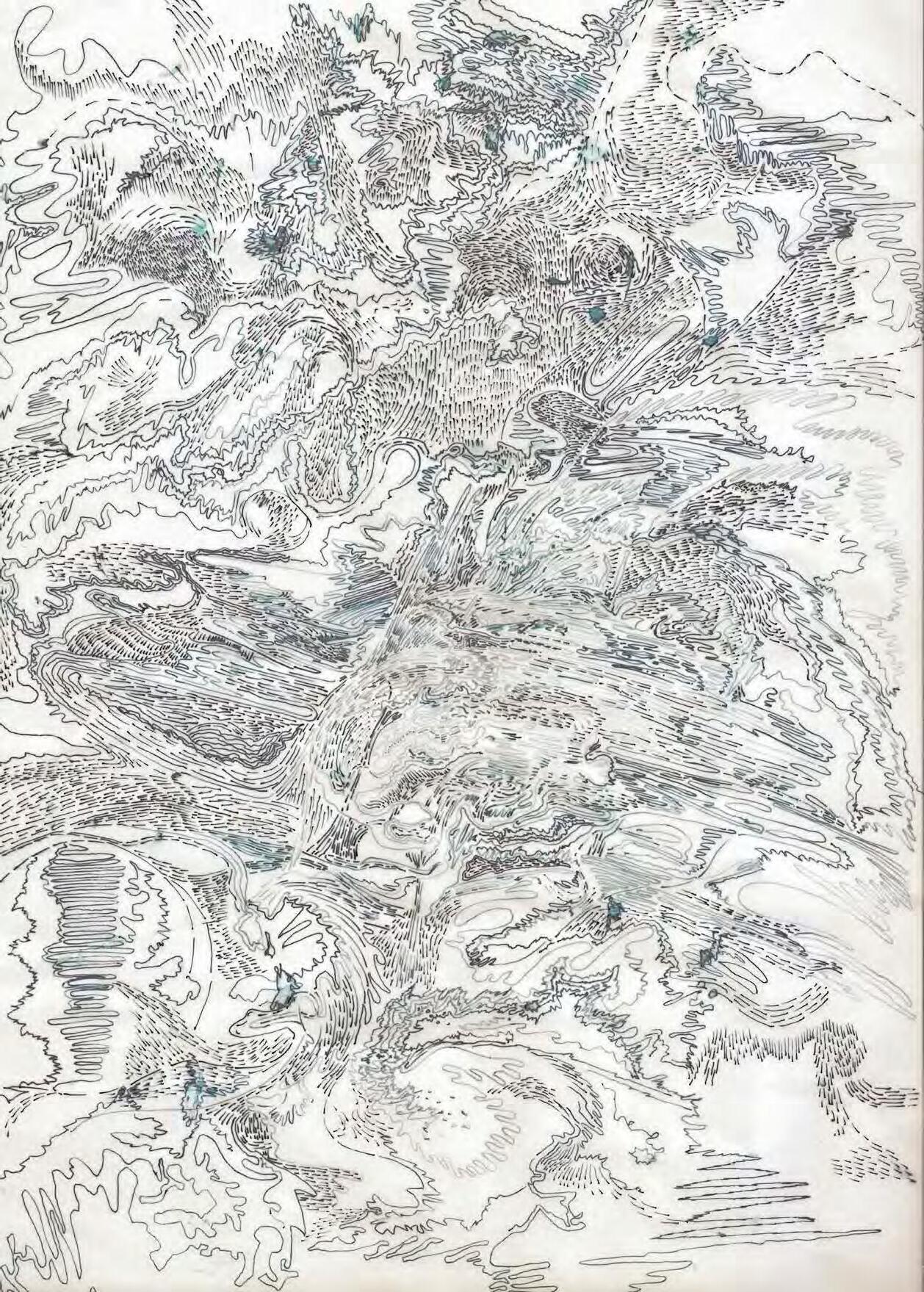
//consciousness
Our Brain constructs our conscious reality. Consciousness is awareness of internal and external existence. It is being able to process and feel sensory input. Without consciousness, there is no us, no self. When we suffer, we suffer consciously, whether through illness or mental health.
How our brain works is on informed guesswork when we receive sensory data. We hear something and our brain makes an informed guess work. We see something obscure and our brain tries its best to make something out.
Our perception of the world is a controlled hallucination whereour brain guesses and informs us what we are facing.
embracing the irrationaland un conscious //surrealism
Developed in Europe after traumatic events of WWI It made people question society and to look for another way to live.If the traditional and rational way of life didn’t suit societ. an approach against authoritarian, and to disrupt order
A realization that we are not in control of everything in our mind -the unconscious controls it.
//automatism
To suppresses conscious control over the making process, allowing the unconscious mind to have great sway. To stop thinking and start creating unconscious work. In automatic drawing, the hand is allowed to move “randomly” across the paper.In applying chance and accident to mark-making, drawing is to a large extent freed of rational control the drawing produced may be attributed in part to the subconscious and may reveal something of the psyche, which would otherwise be repressed.
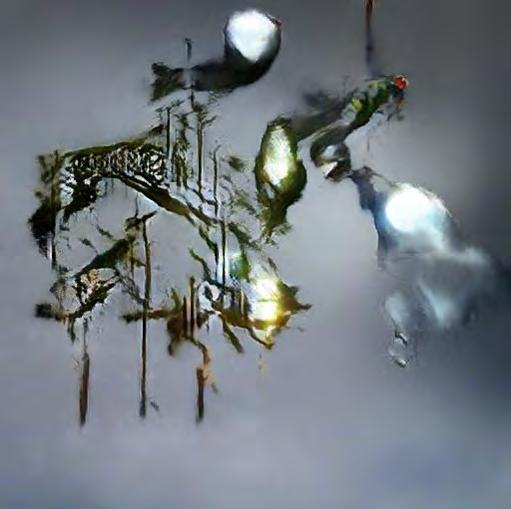
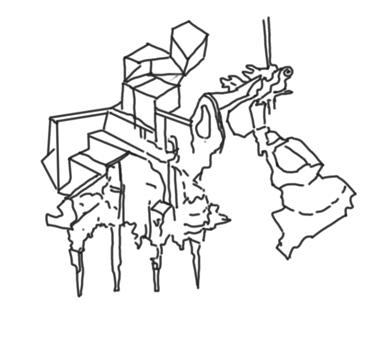
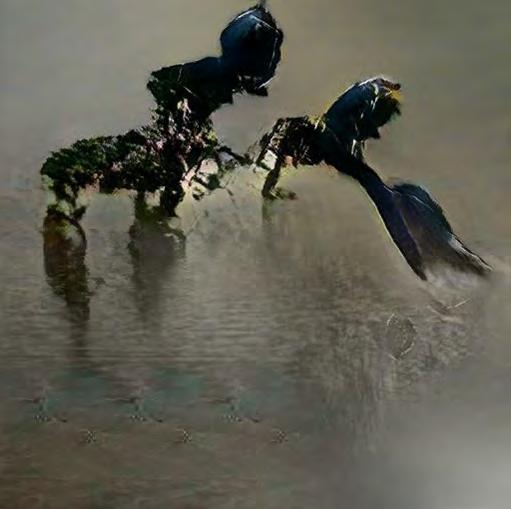
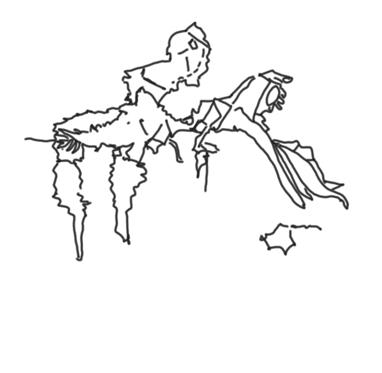
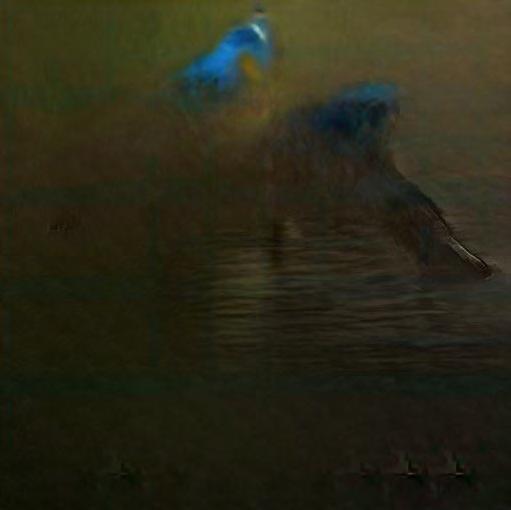
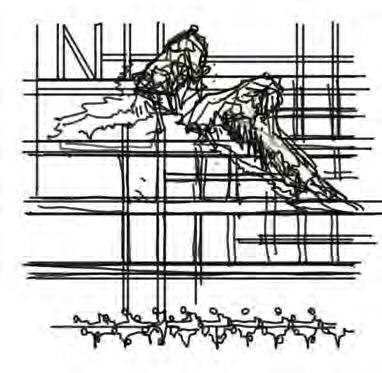
to decode the automatic drawing’s elements, a generative adversarial network, GauGAN by nvidia is used to segmentize the drawing and create a highly realistic scenery, thus using artefact consciousness to perceive the unconscious mind.
The process of segmenting the landscape and producing a new highly realistic scene, until the first image is non recognizable. This questions the legibility of artefact consciousness - is consciousness of machines similar to that of a human’s? the frequency and element of each
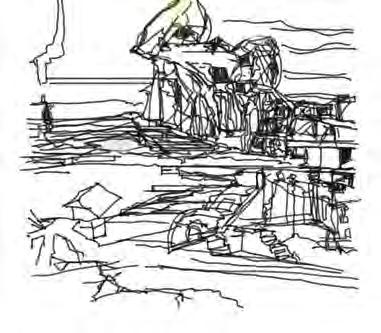
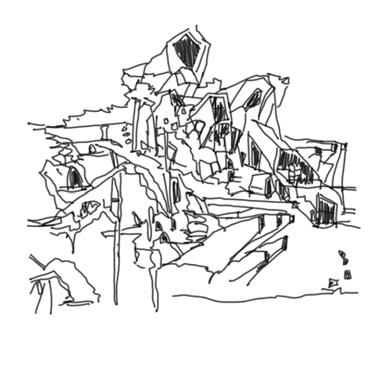
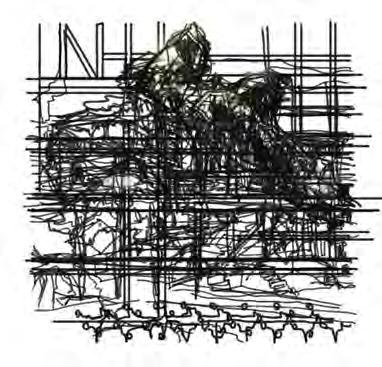
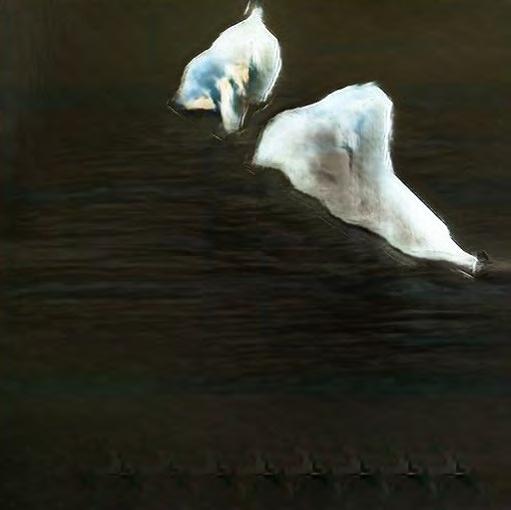
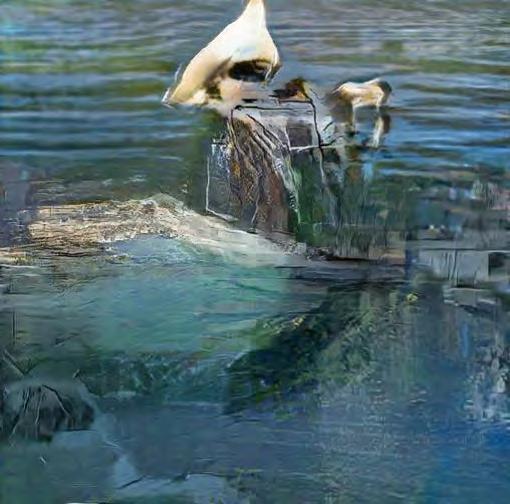
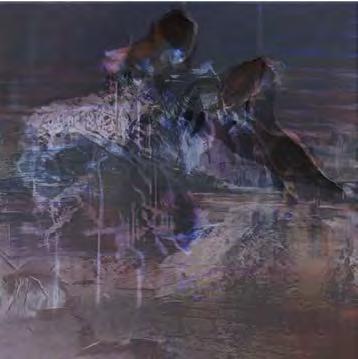
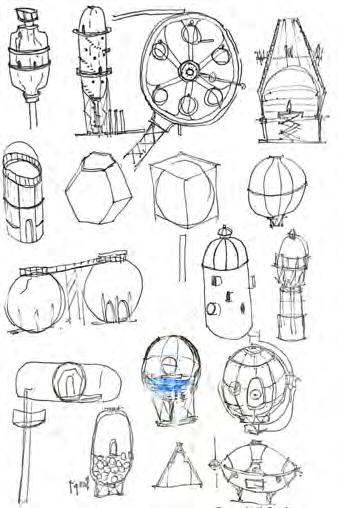
transcribing spaces from elements item -
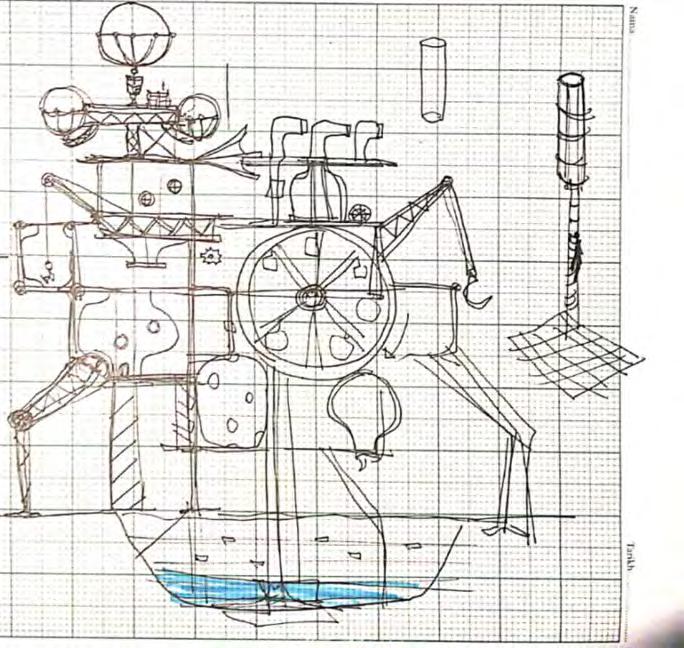
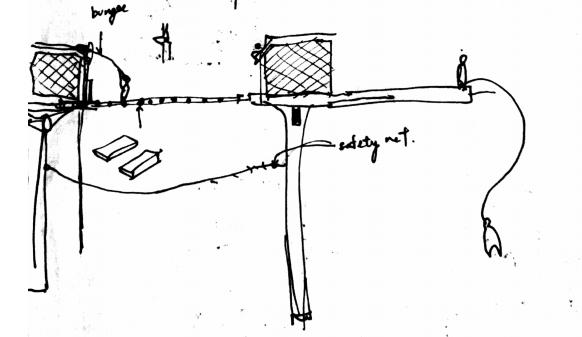
ized frquency
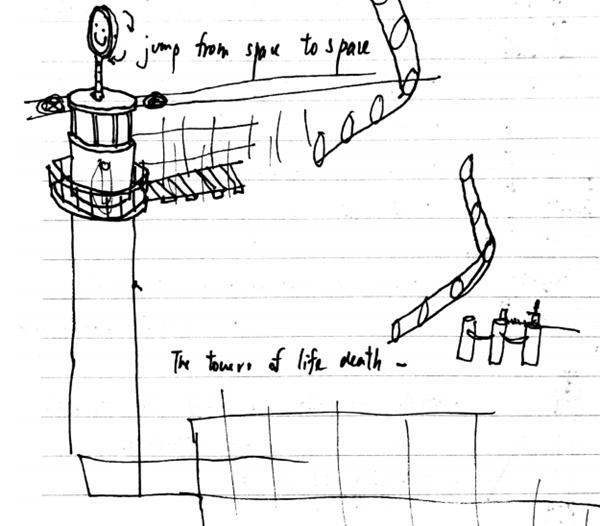
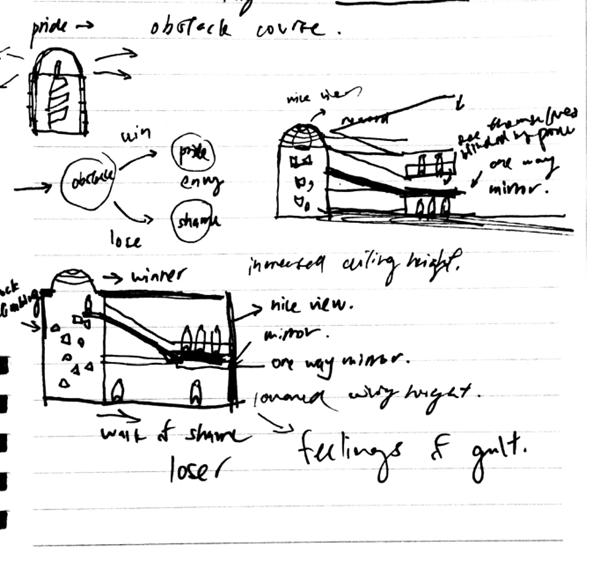
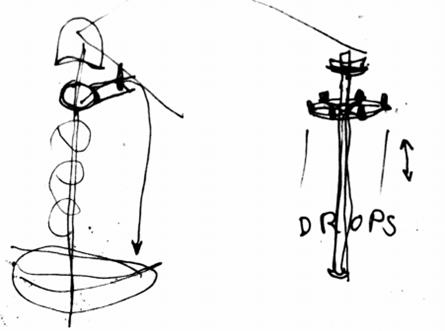
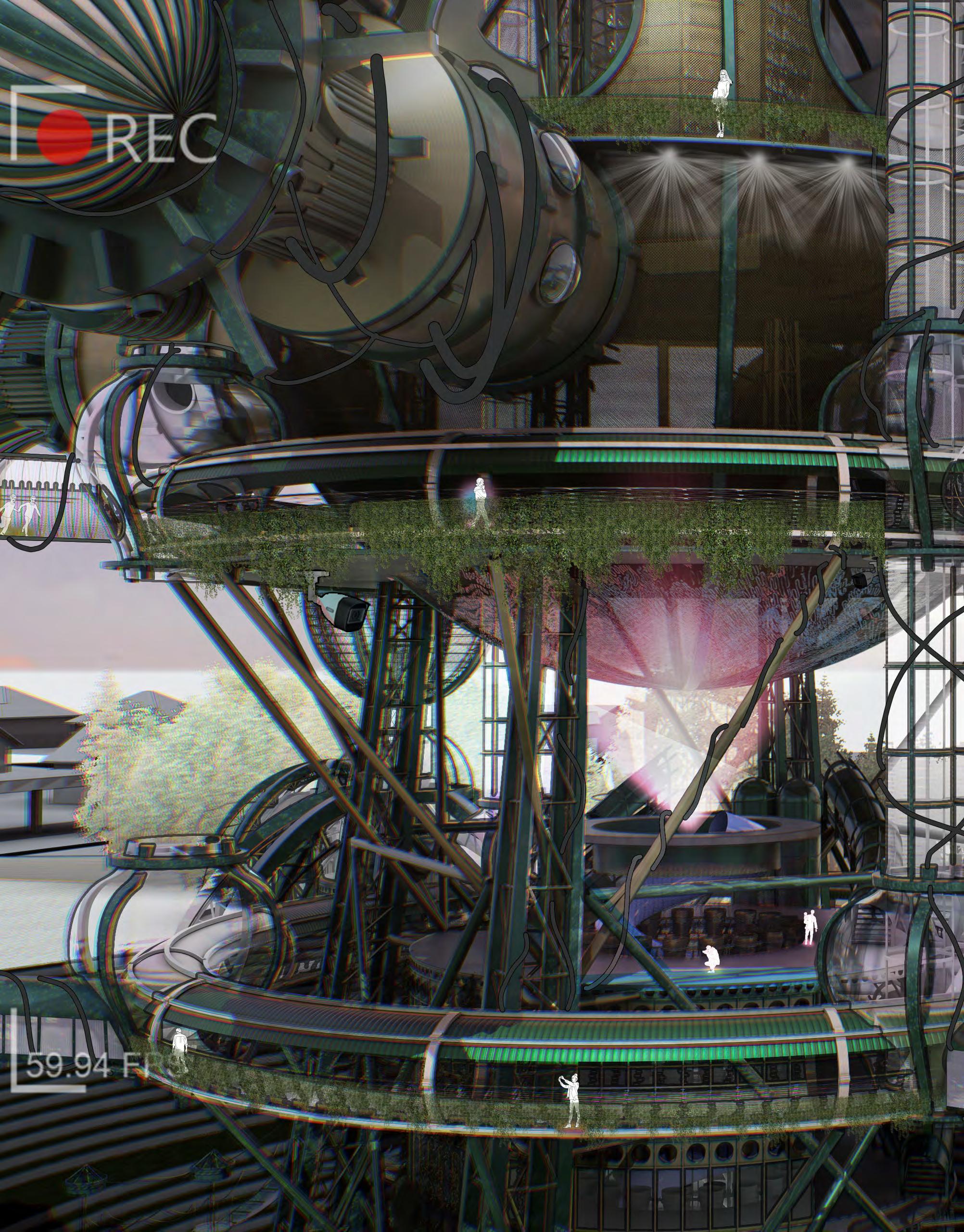
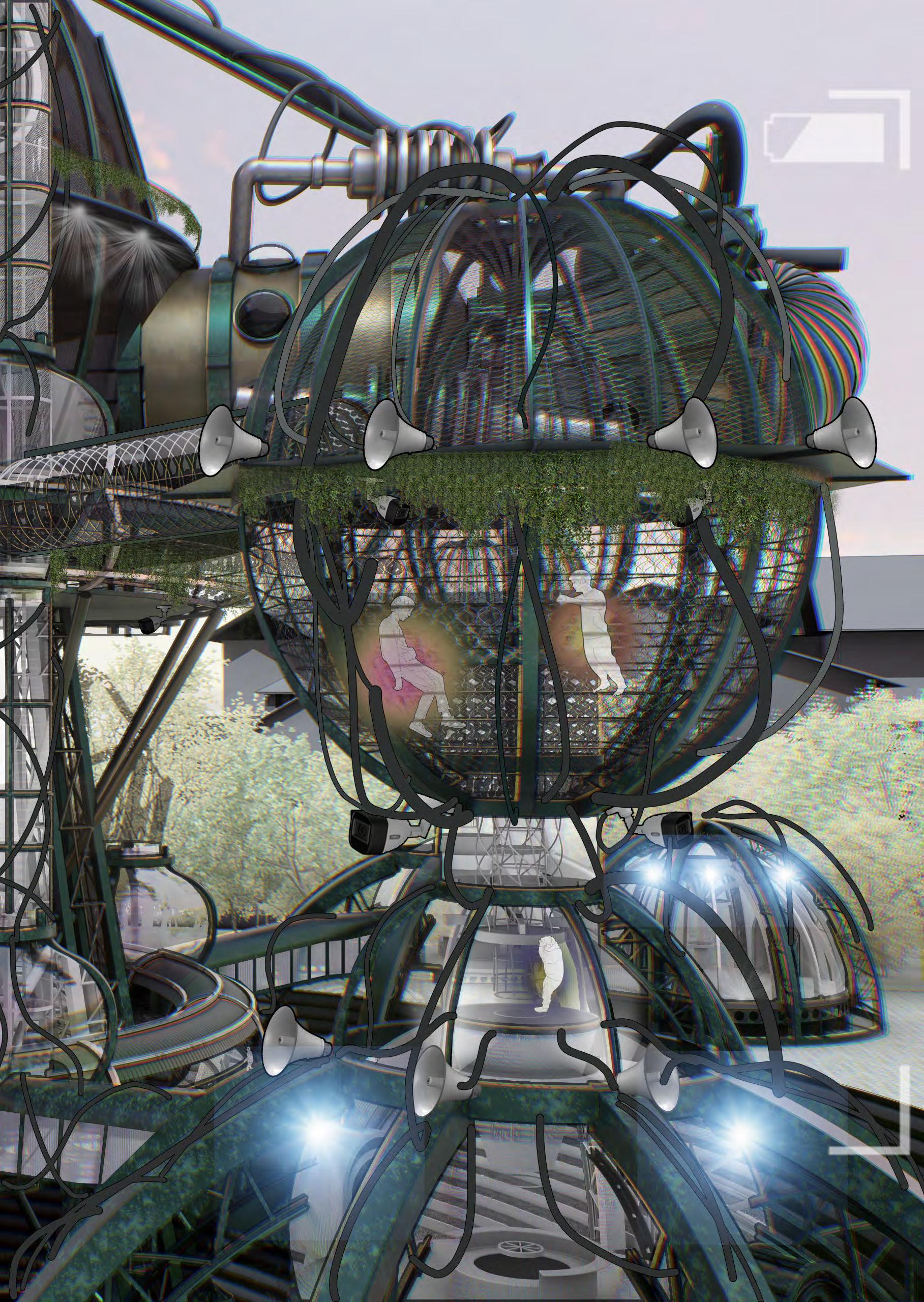
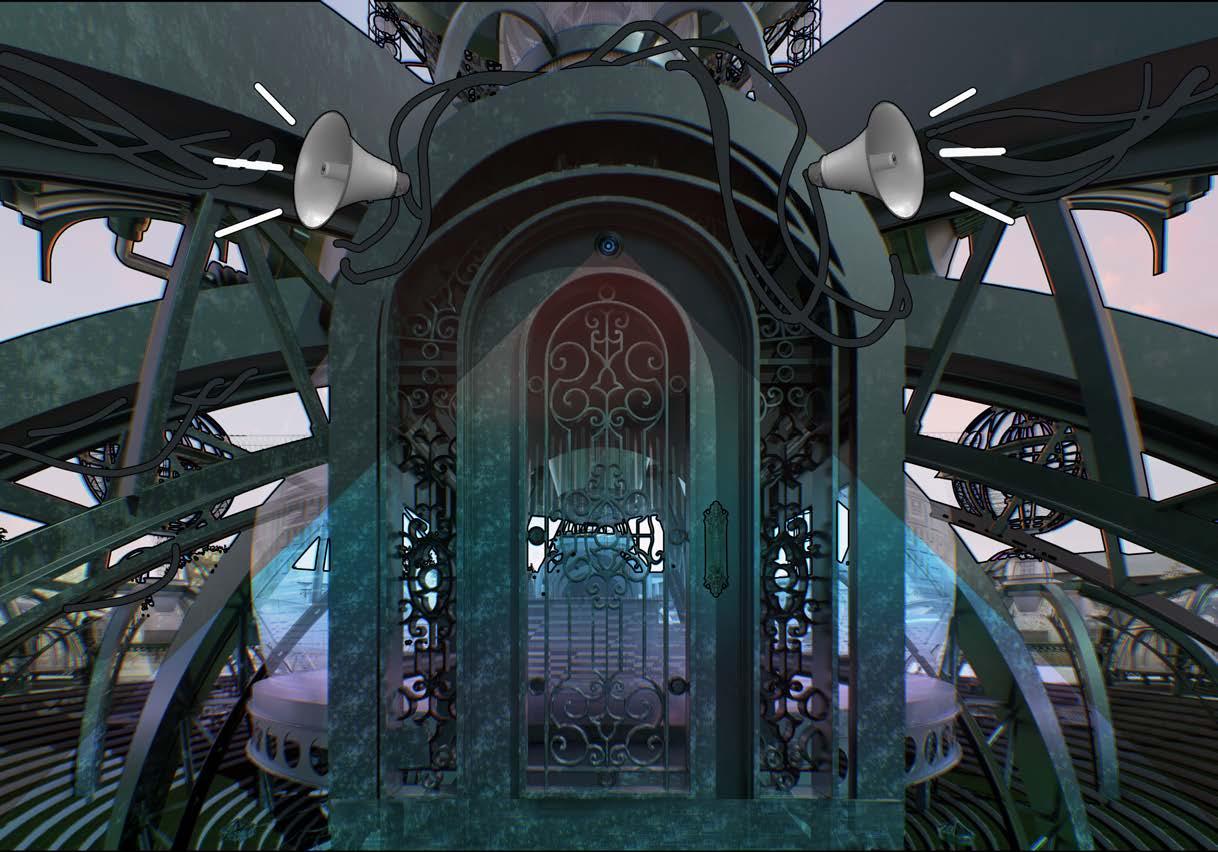
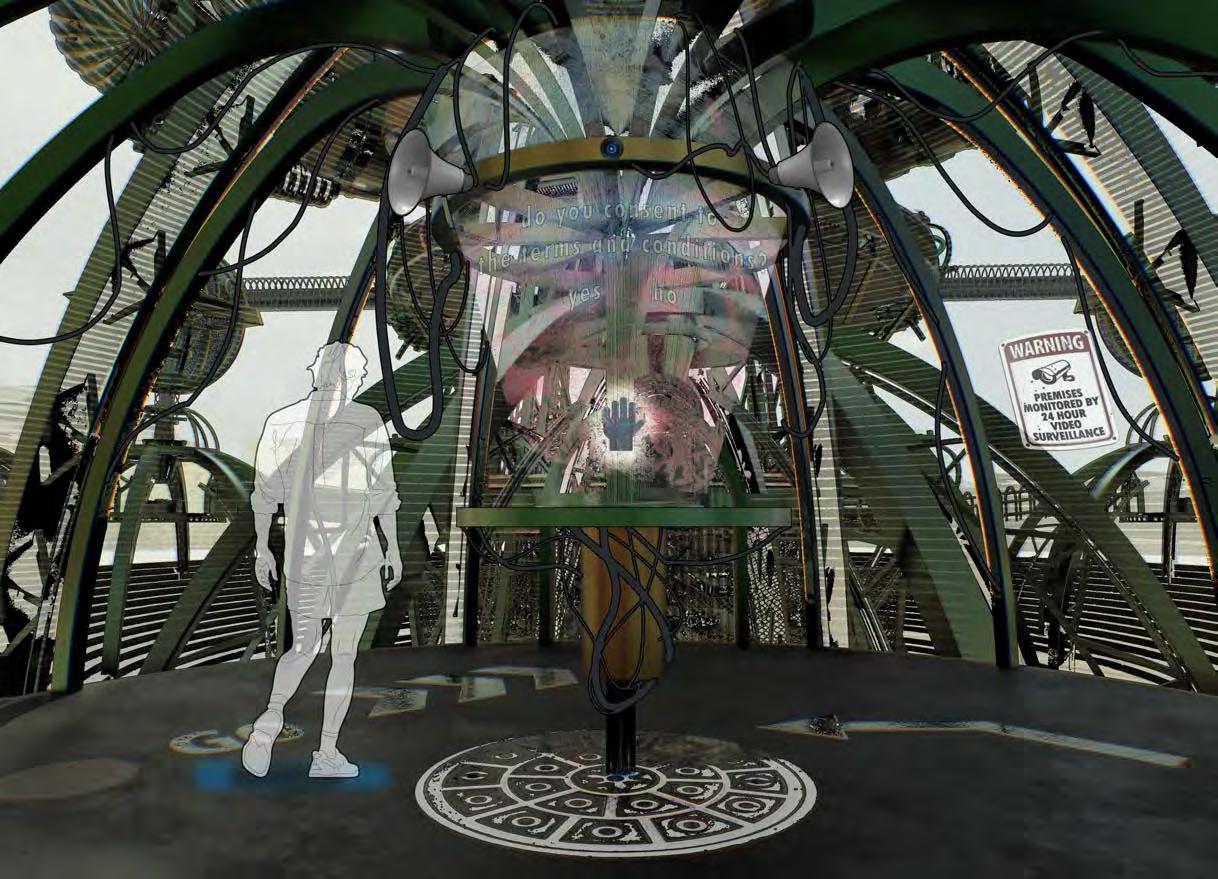
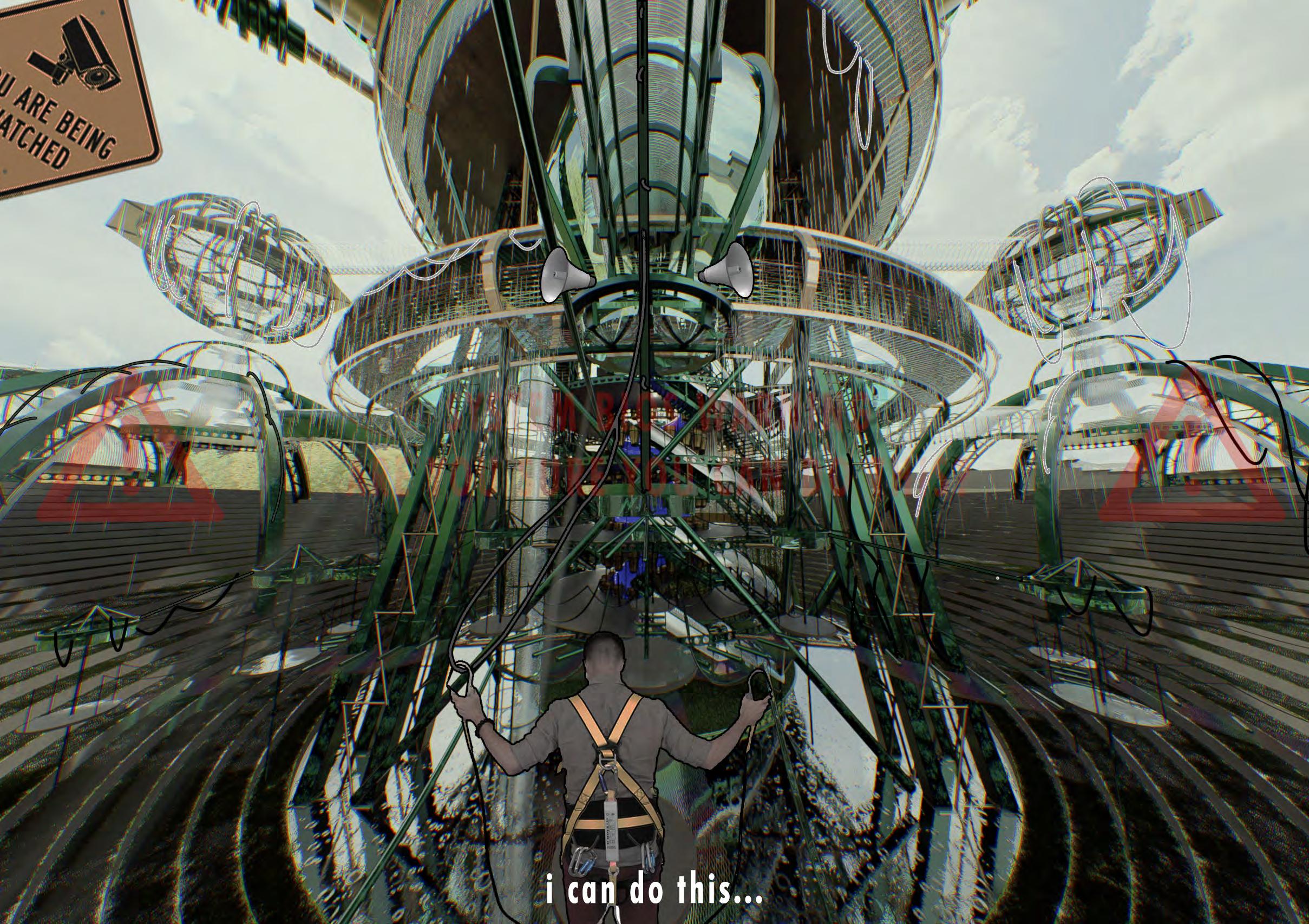
through the forking labyrinthine a series of 12m high platforms that adjusts and shifts pathways for users according to stress level detected.
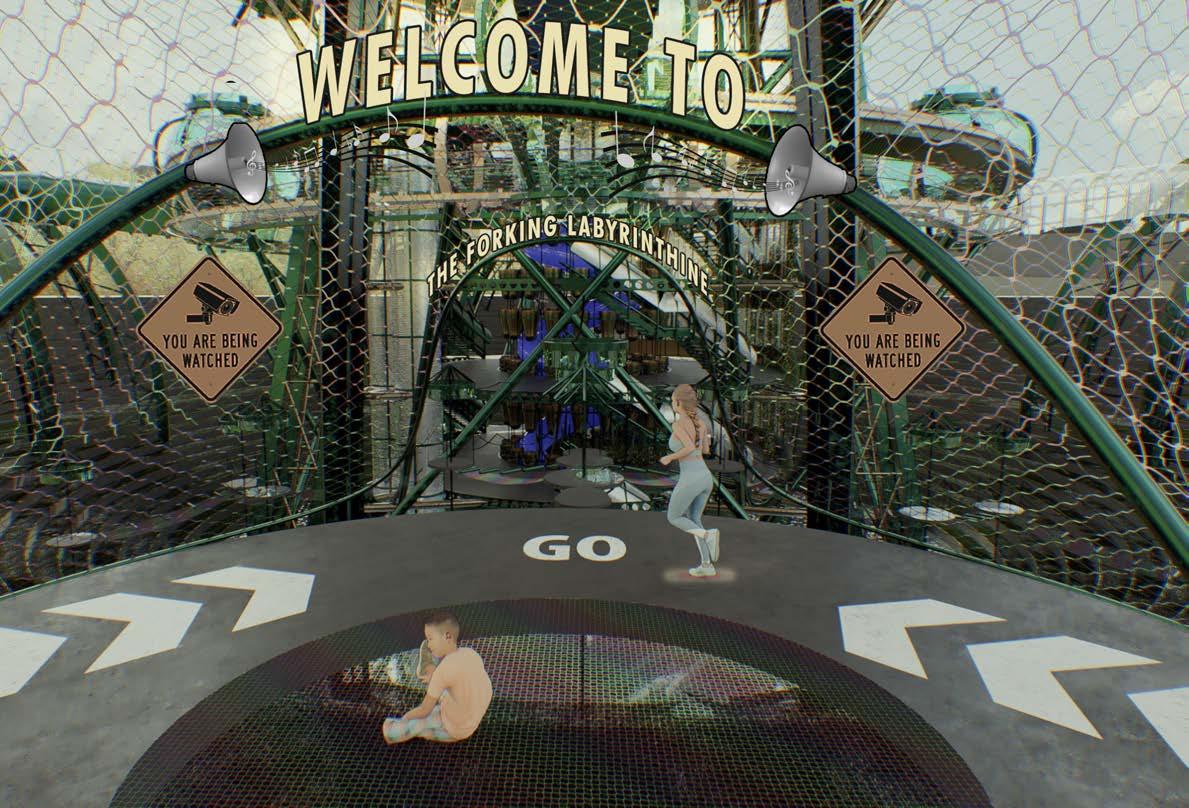
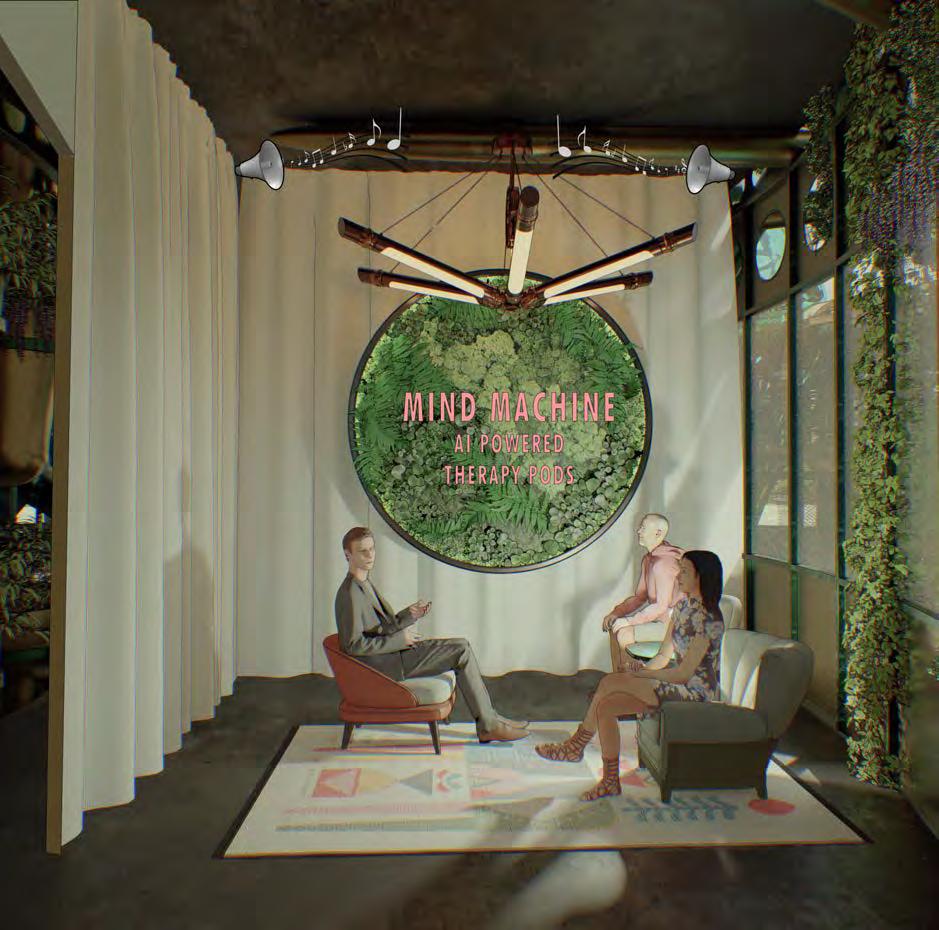
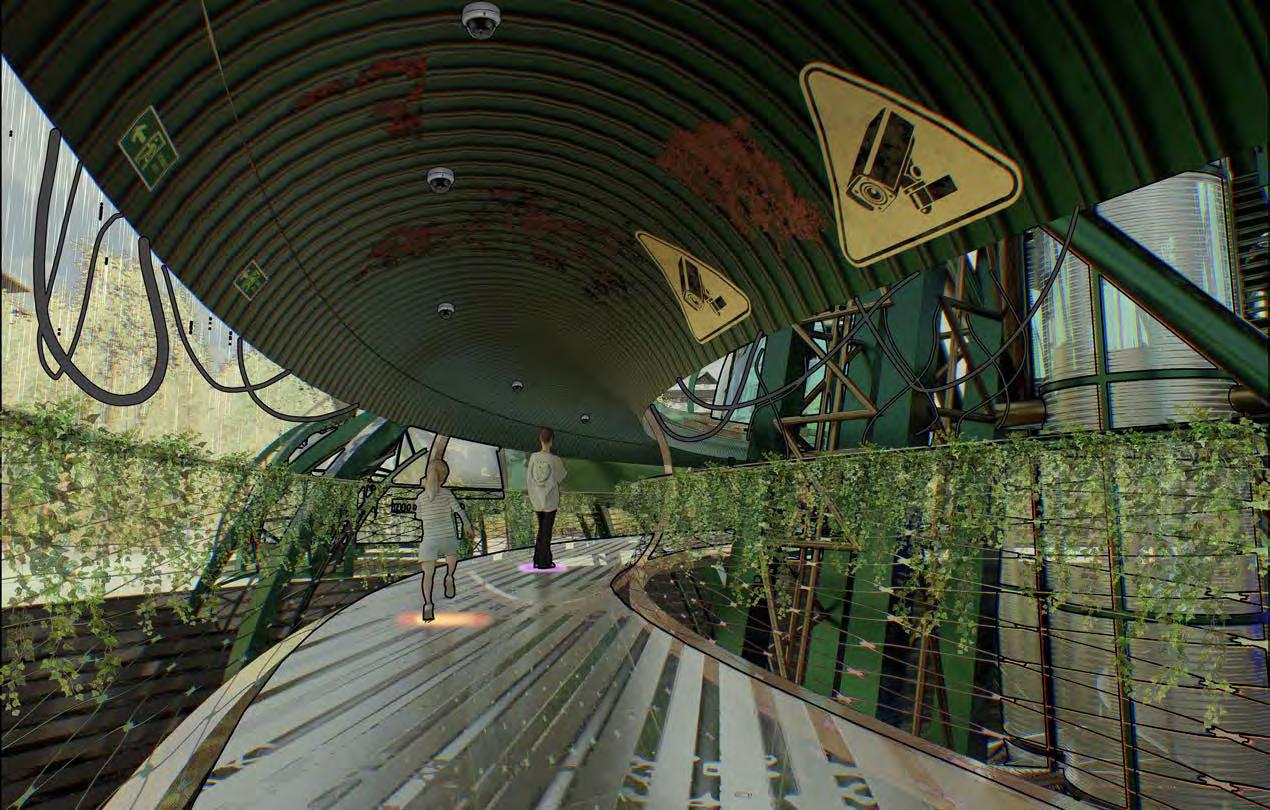
biometric bridge
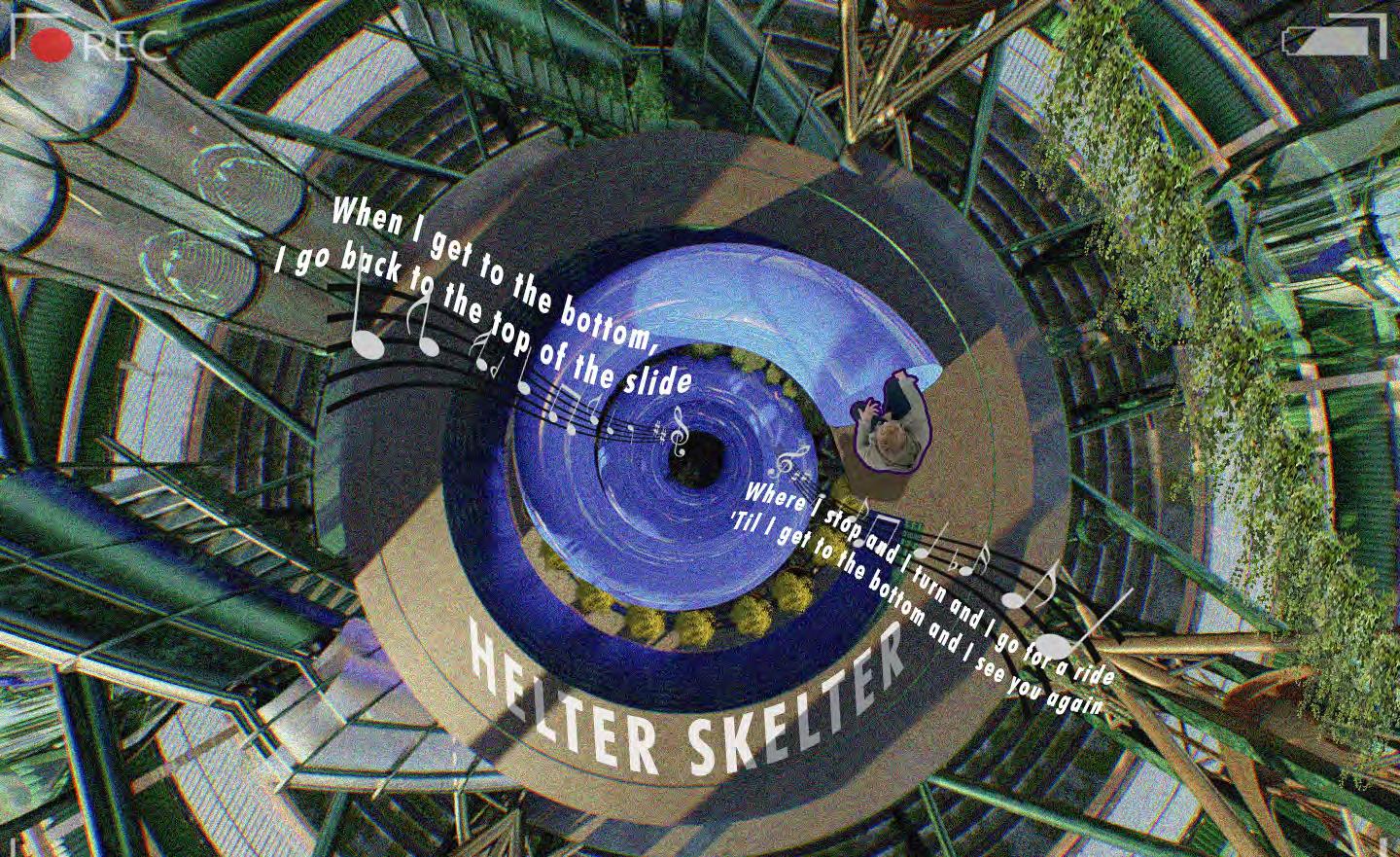
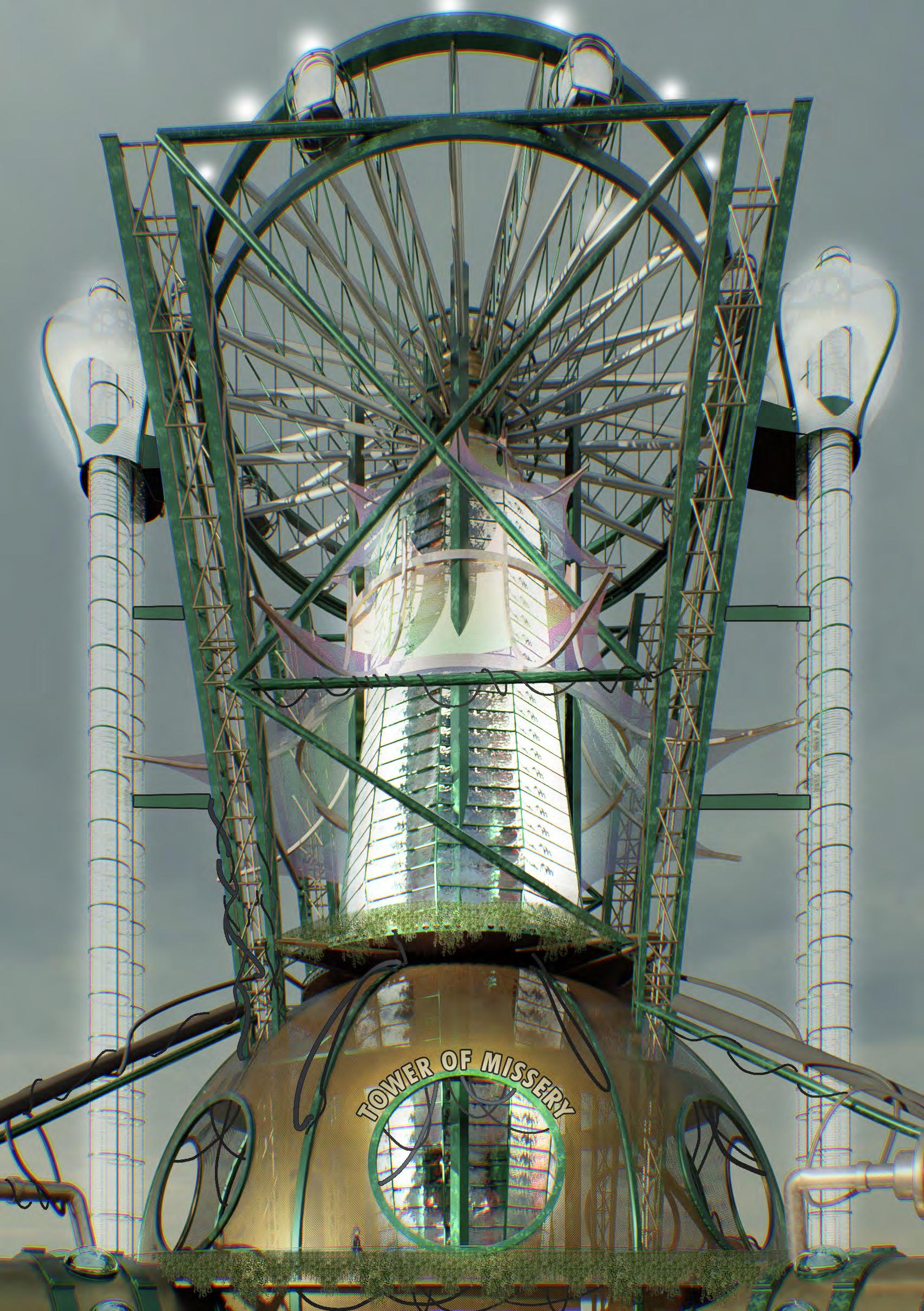
pleasant wheel
the crown of the mind machine offers a nostalgic tailored experience
tower of fright
the park’s centerpiece adapts its freefall experience based on user’s emotional state.
fitted with LED panels that change imageries to align with their emotional journey
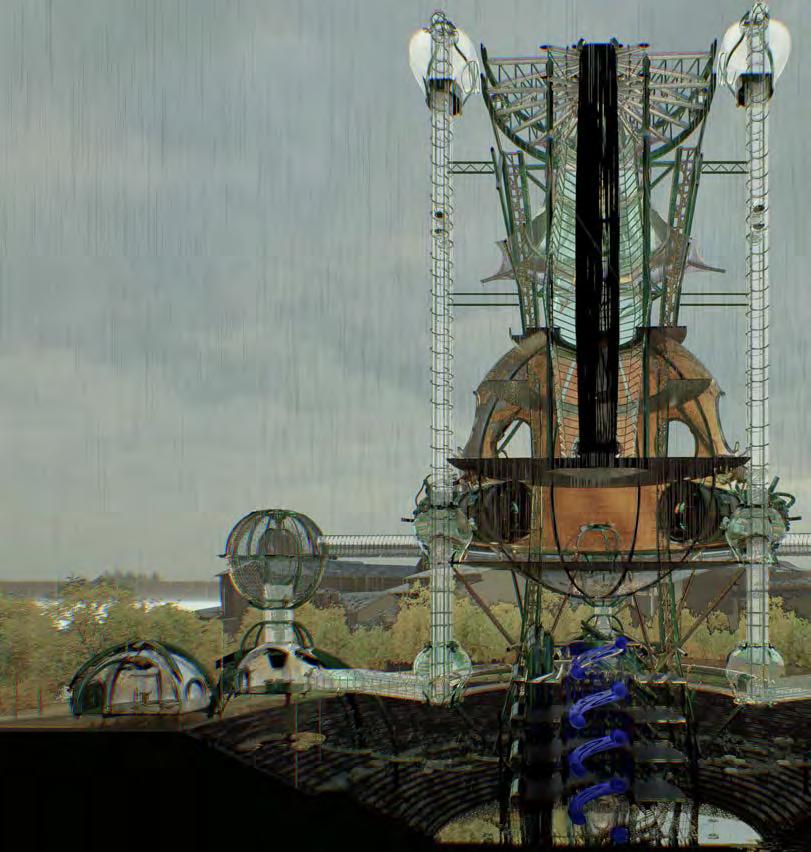
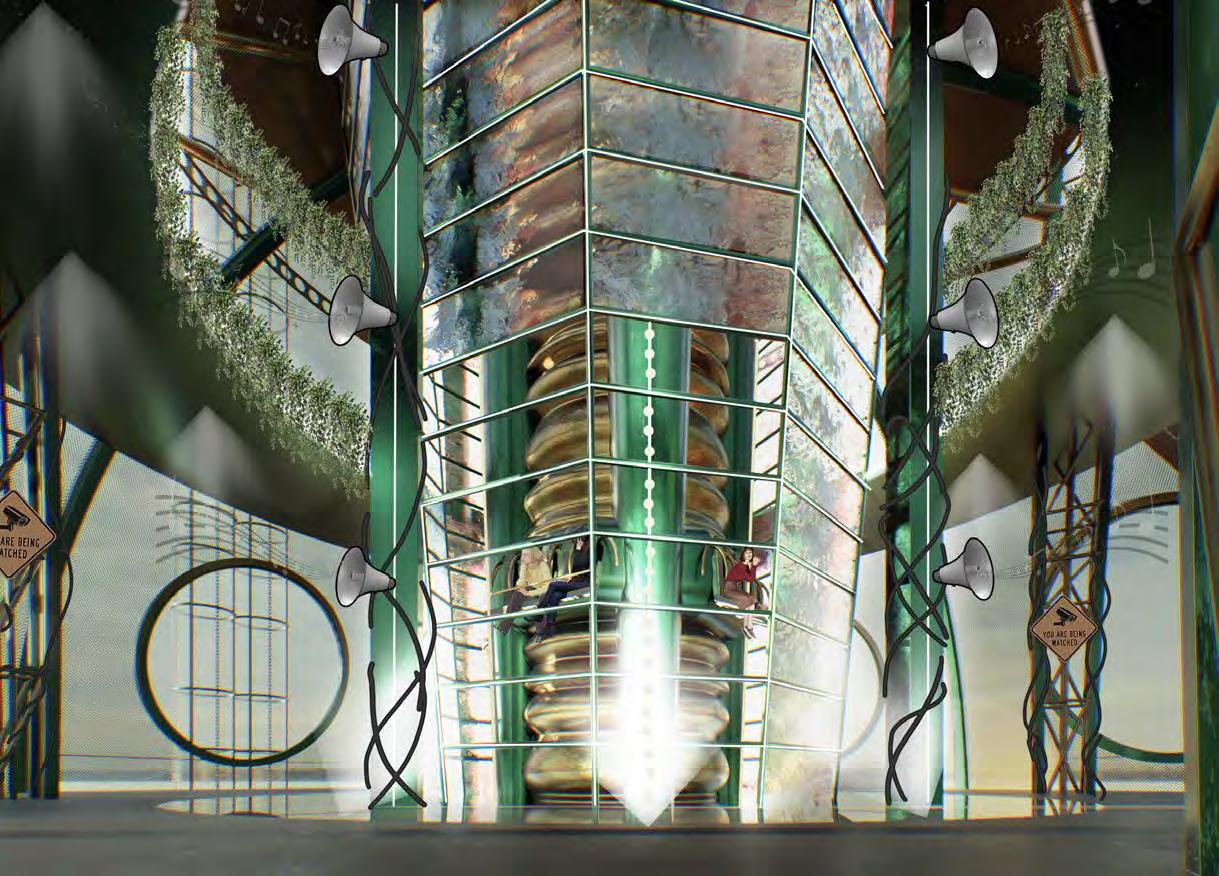
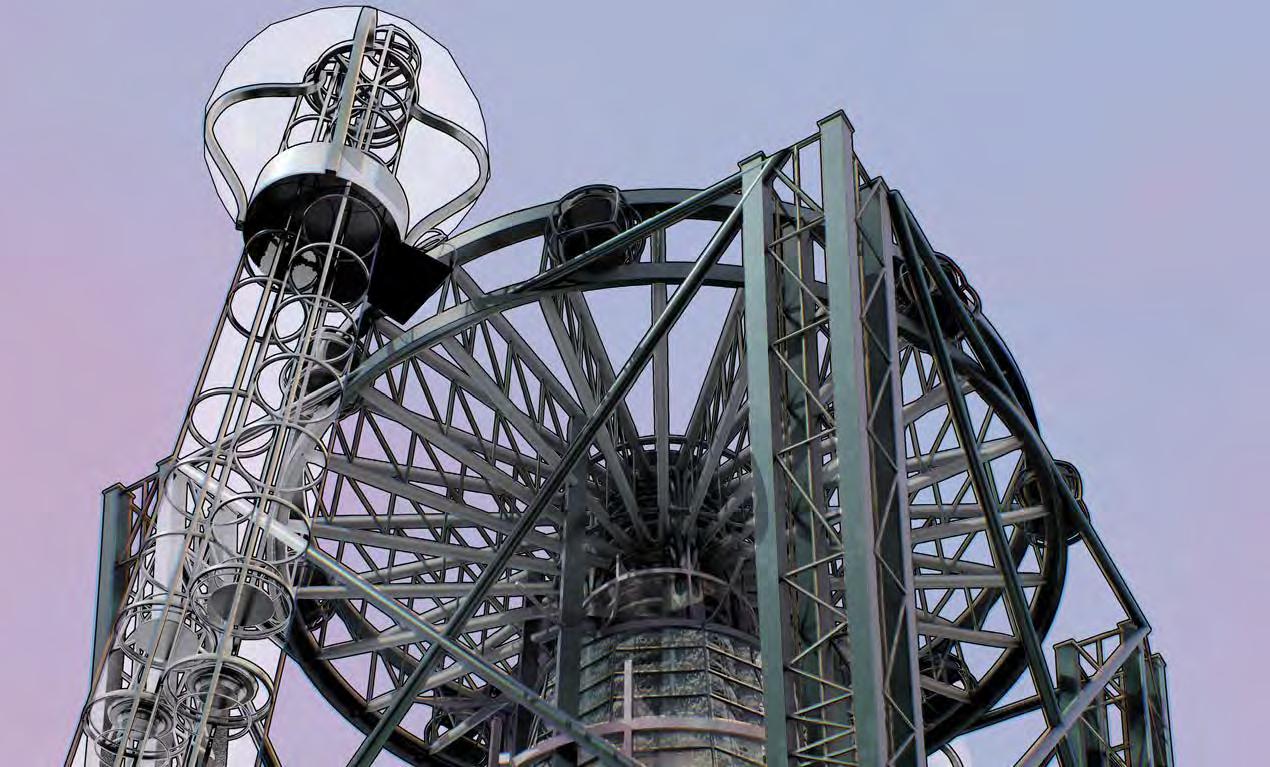
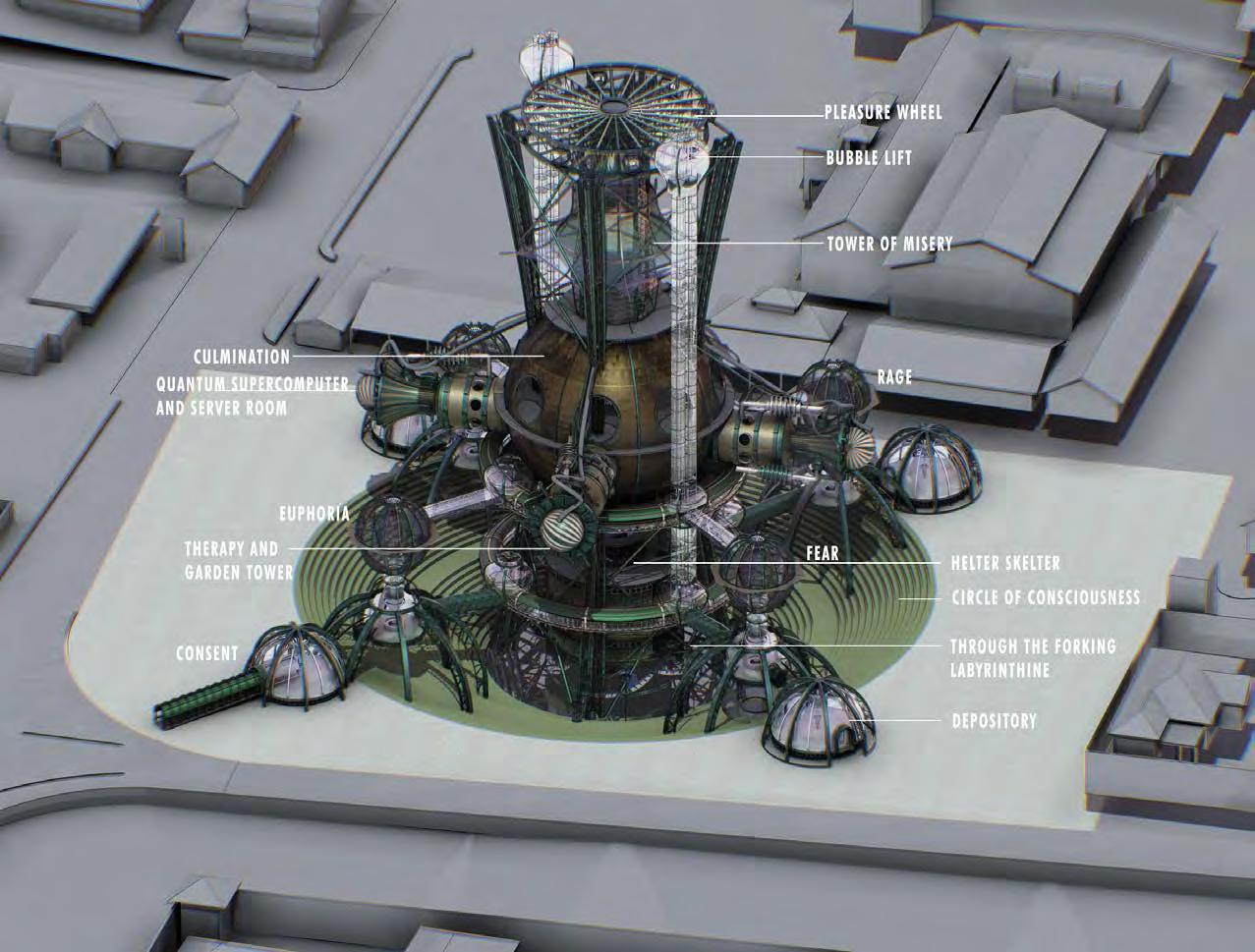
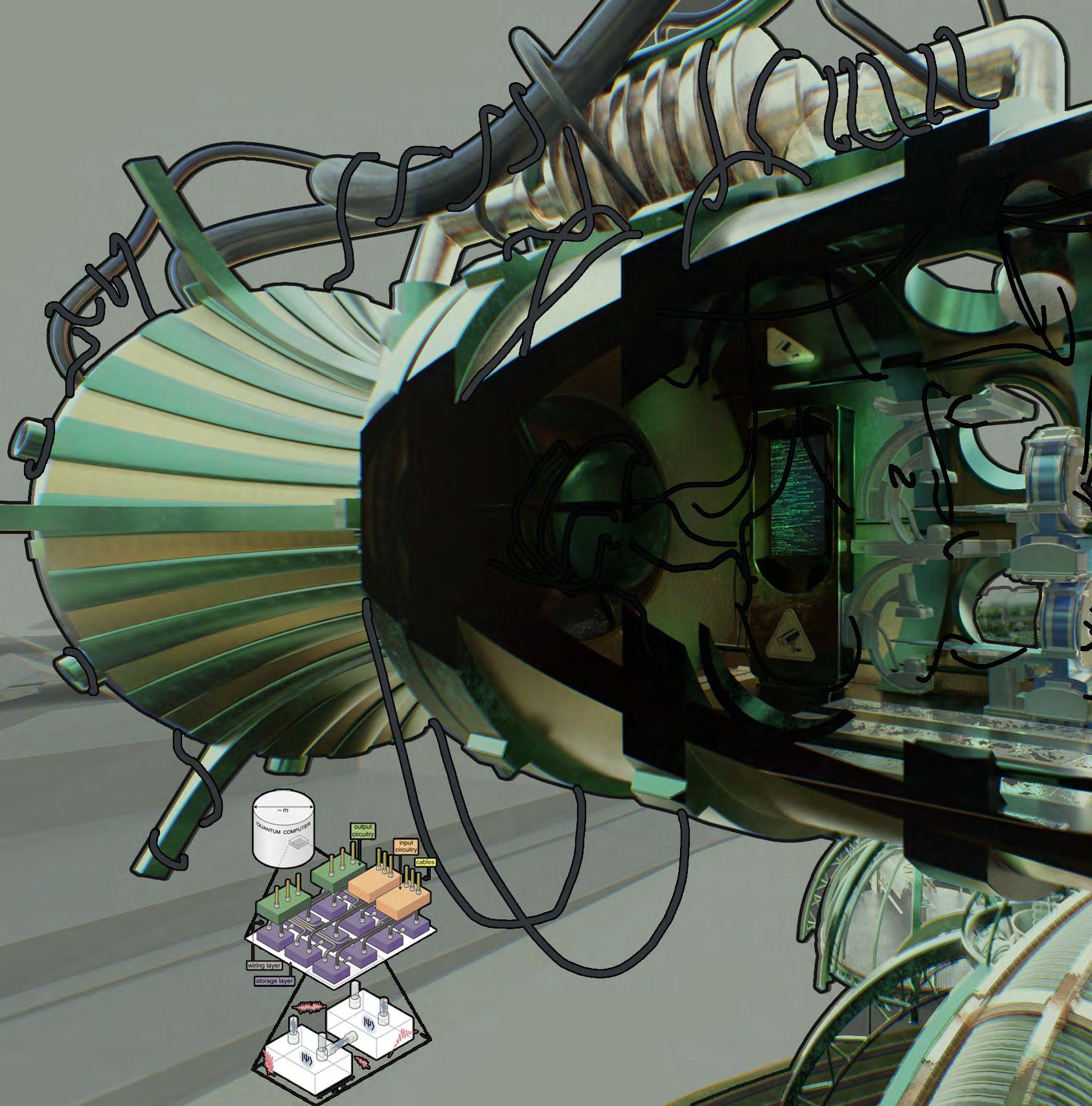
powered by quantum supercomputer
all user experiences into the mind machine are tailored to each person’s mind and beahviour. CCTV cameras and recording devices are fitted throughout the site, capturing behavioural nuances and emotions. Data is fed real time into the dvanced processing system, shaping the overall atmosphere of the obstacle park, adjusting lighting, sounds, and interactive elements accordingly.
THE STORY - TELLER
Year: 2021
Location: Kota Tinggi, Johor.
Program: Library and Theater
Kota Tinggi, one of the most historically rich towns located in the state of Johor, Malaysia, holds many hidden stories and tales. Once being the capital of Johor, it holds many remnants of its past such as ruins, tombs, and legends. However, as Johor develops, it has forgotten the town that was once the heart of Johor.
While in a micro context, the site is located within the educational district of Kota Tinggi town. Where a deeply rooted issue with the education system of Malaysia is highlighted - a lack of creative outlet amongst the youth.
Deriving elements from the literature and filmography of Kota Tinggi is the Story - Teller, a contrasting blend of two vastly different typologies - a Library and Theatre, which represents itself as a solution to the underappreciated history and rigid education system.
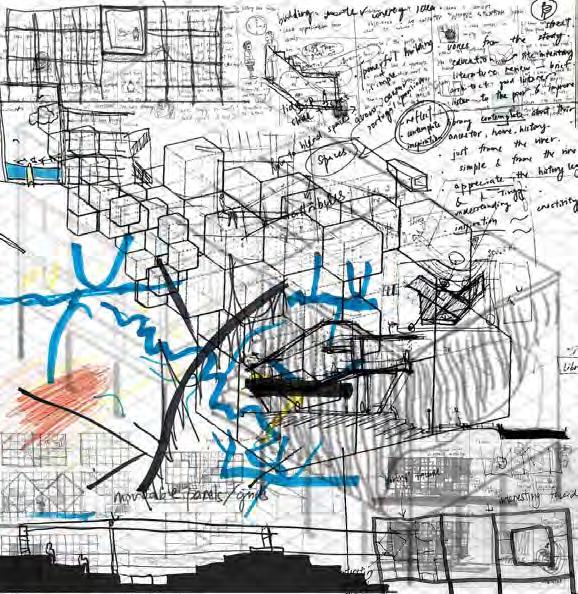
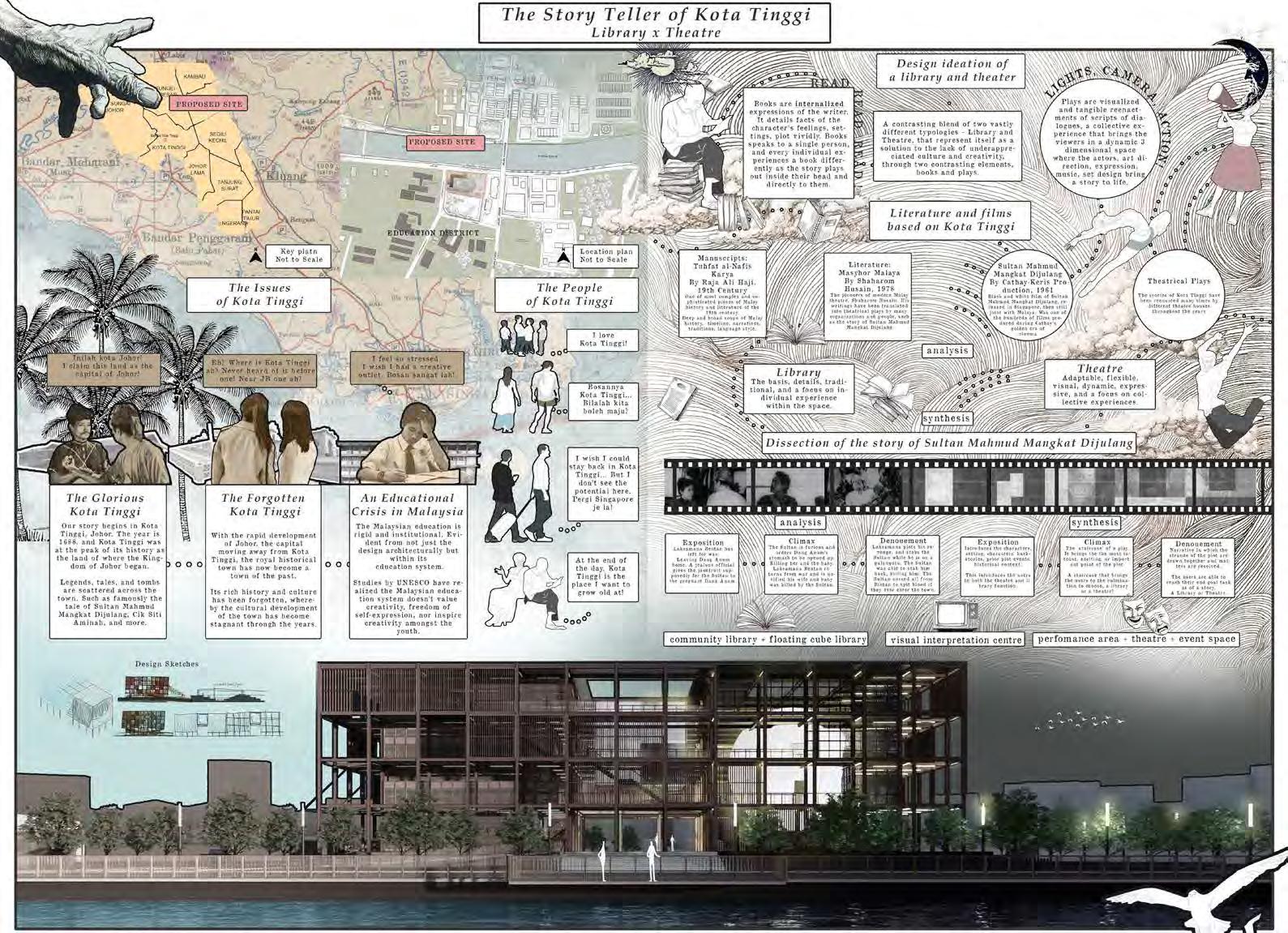
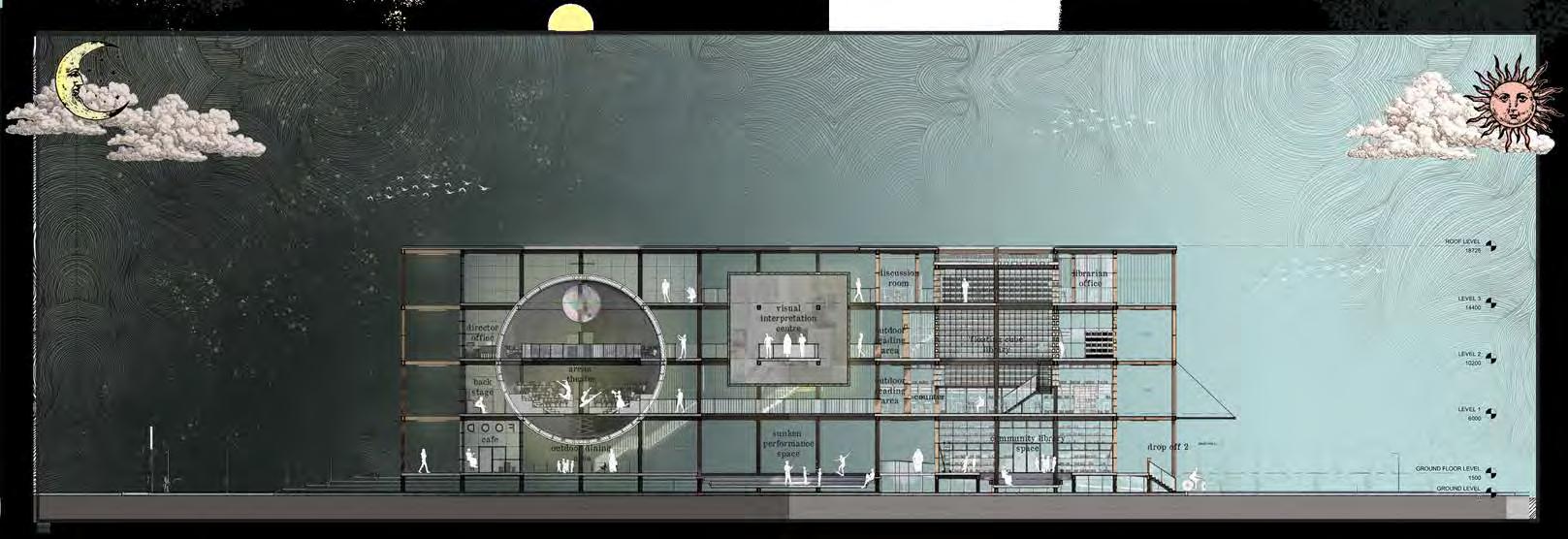
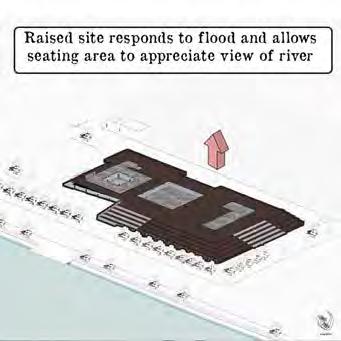
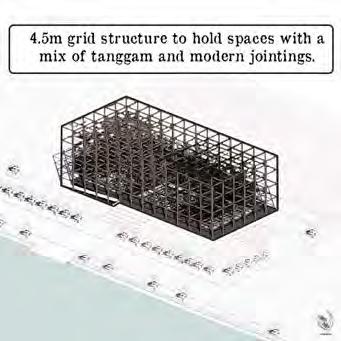
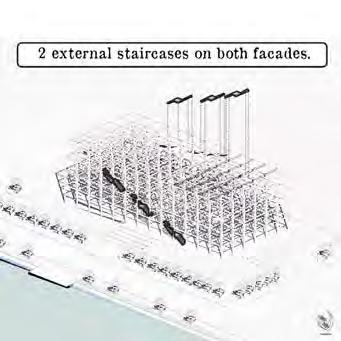
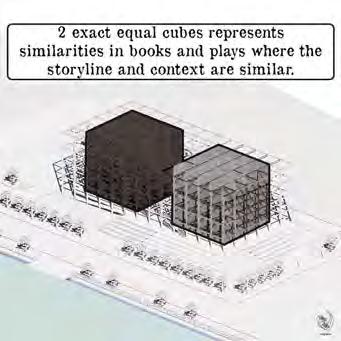
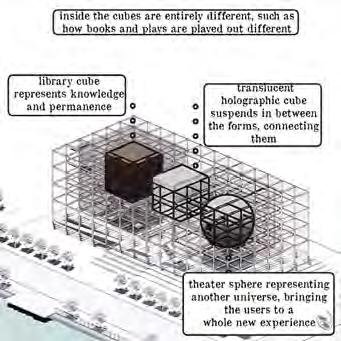
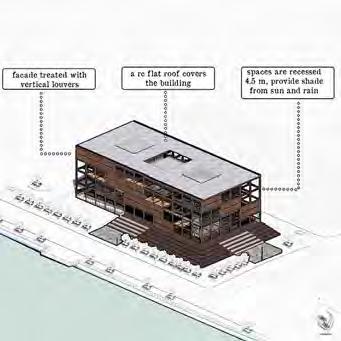
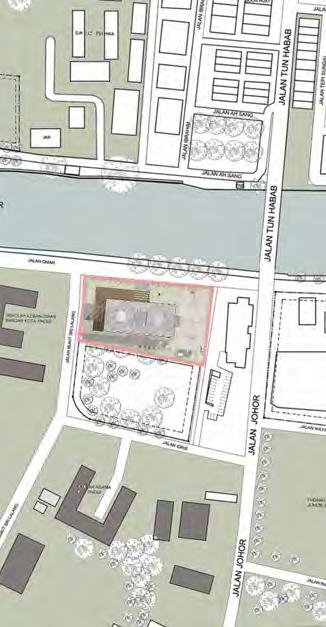
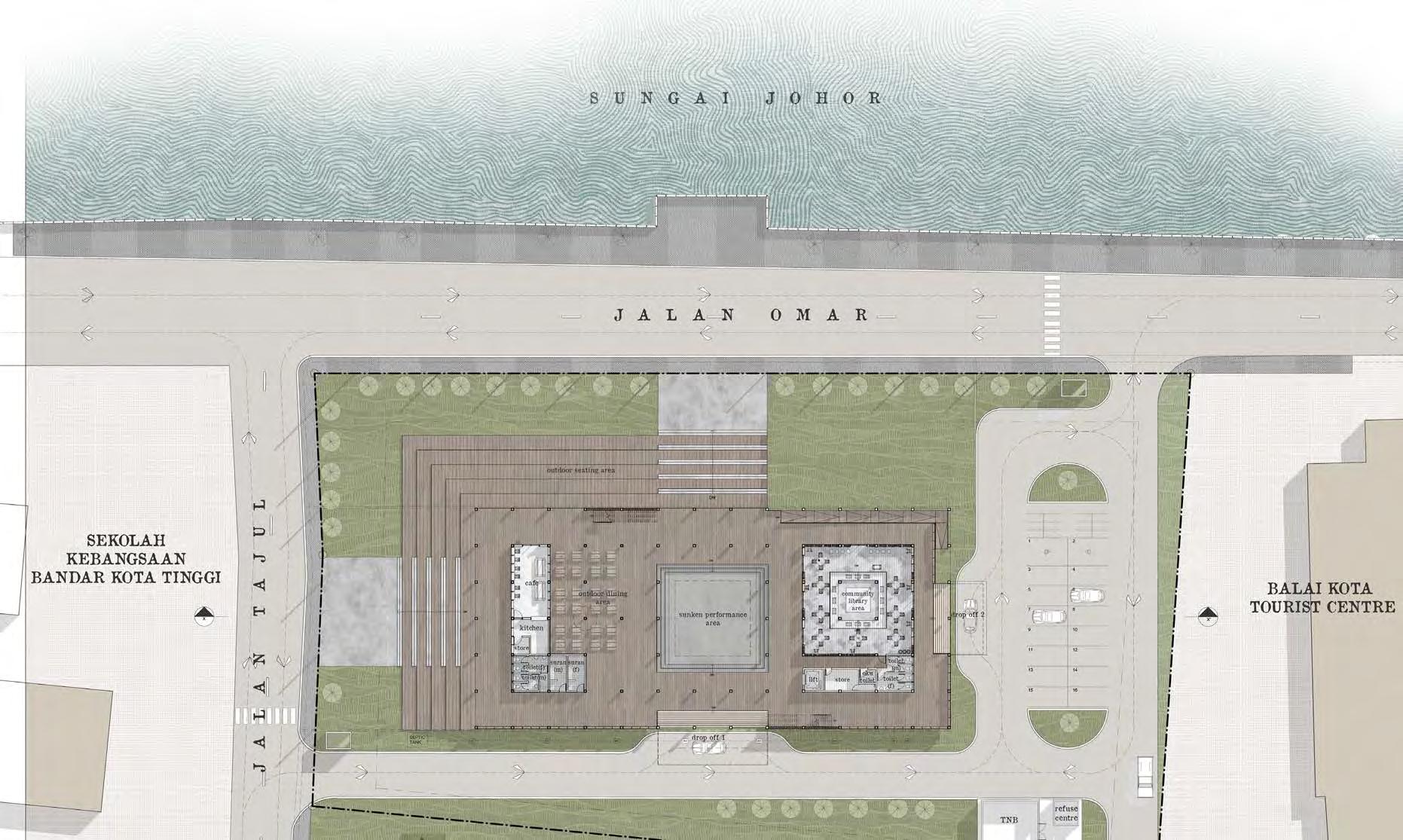
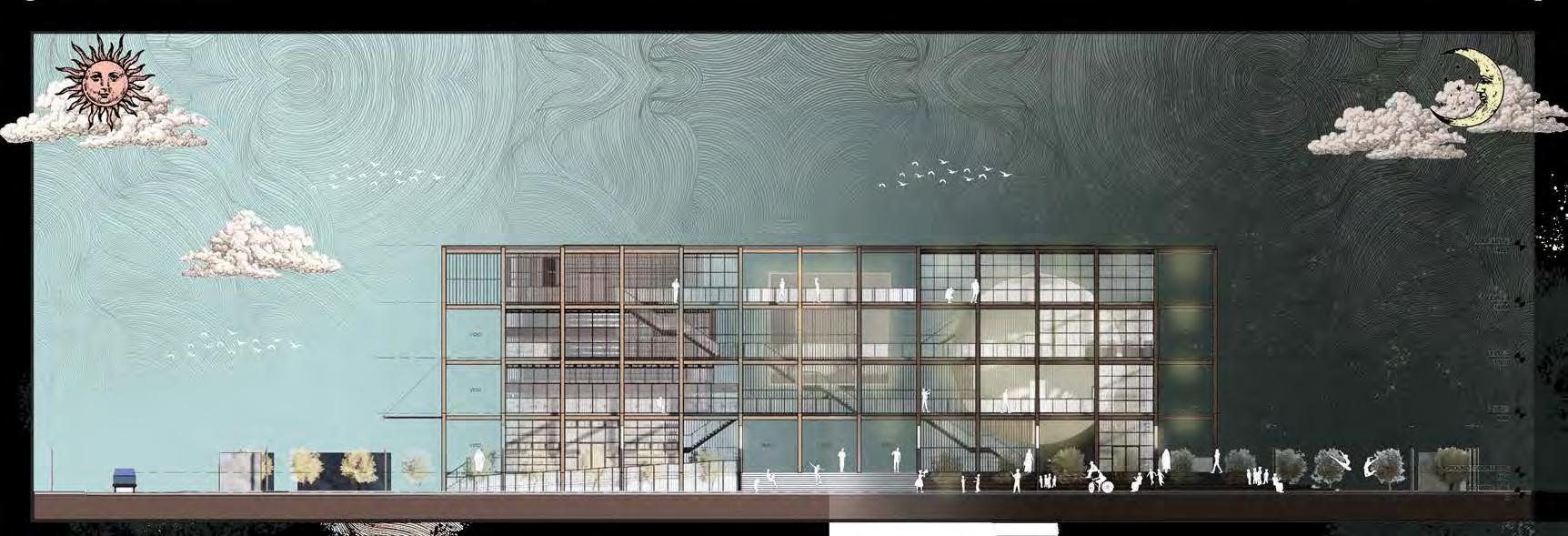
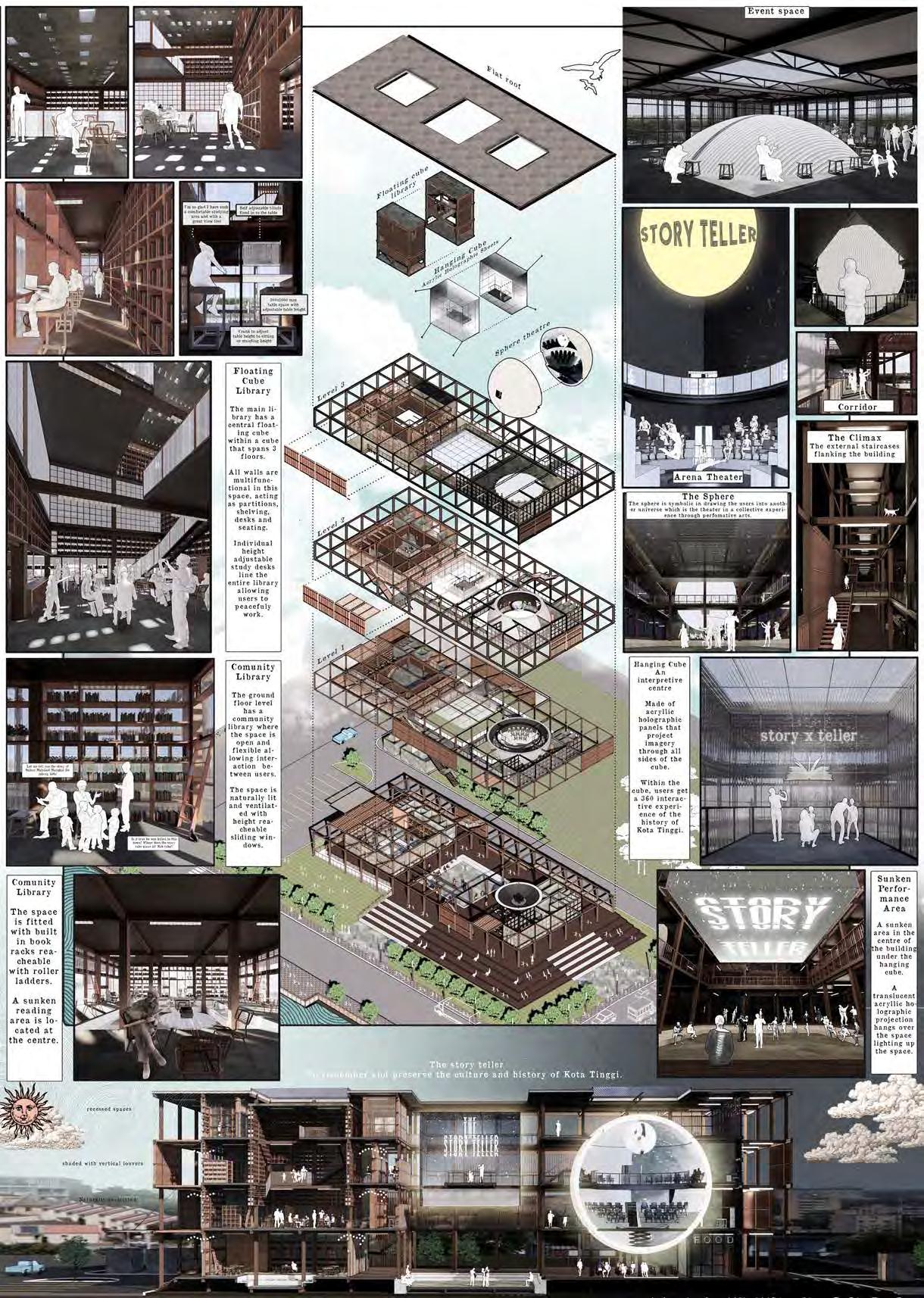
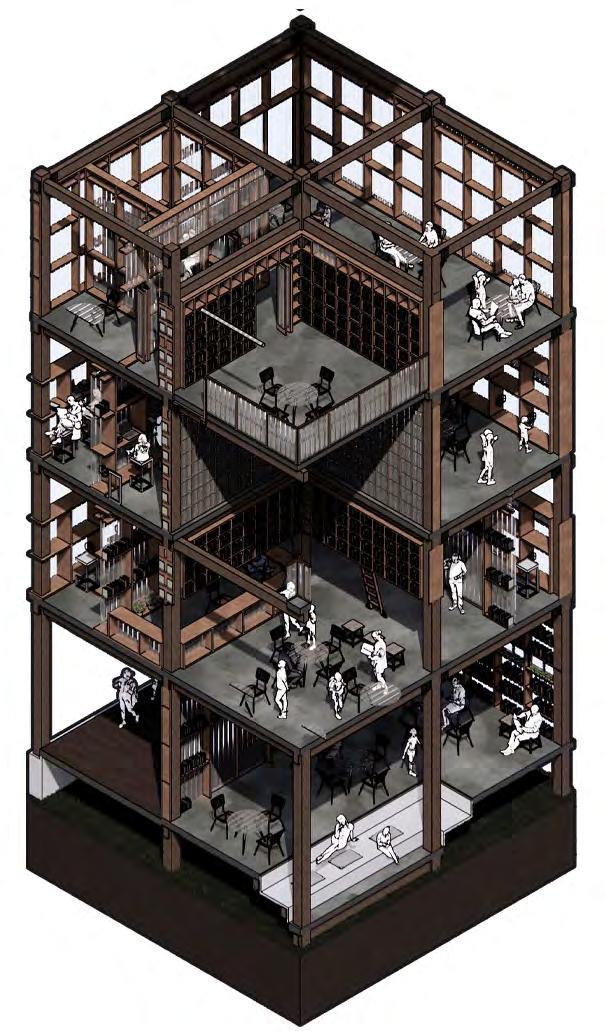
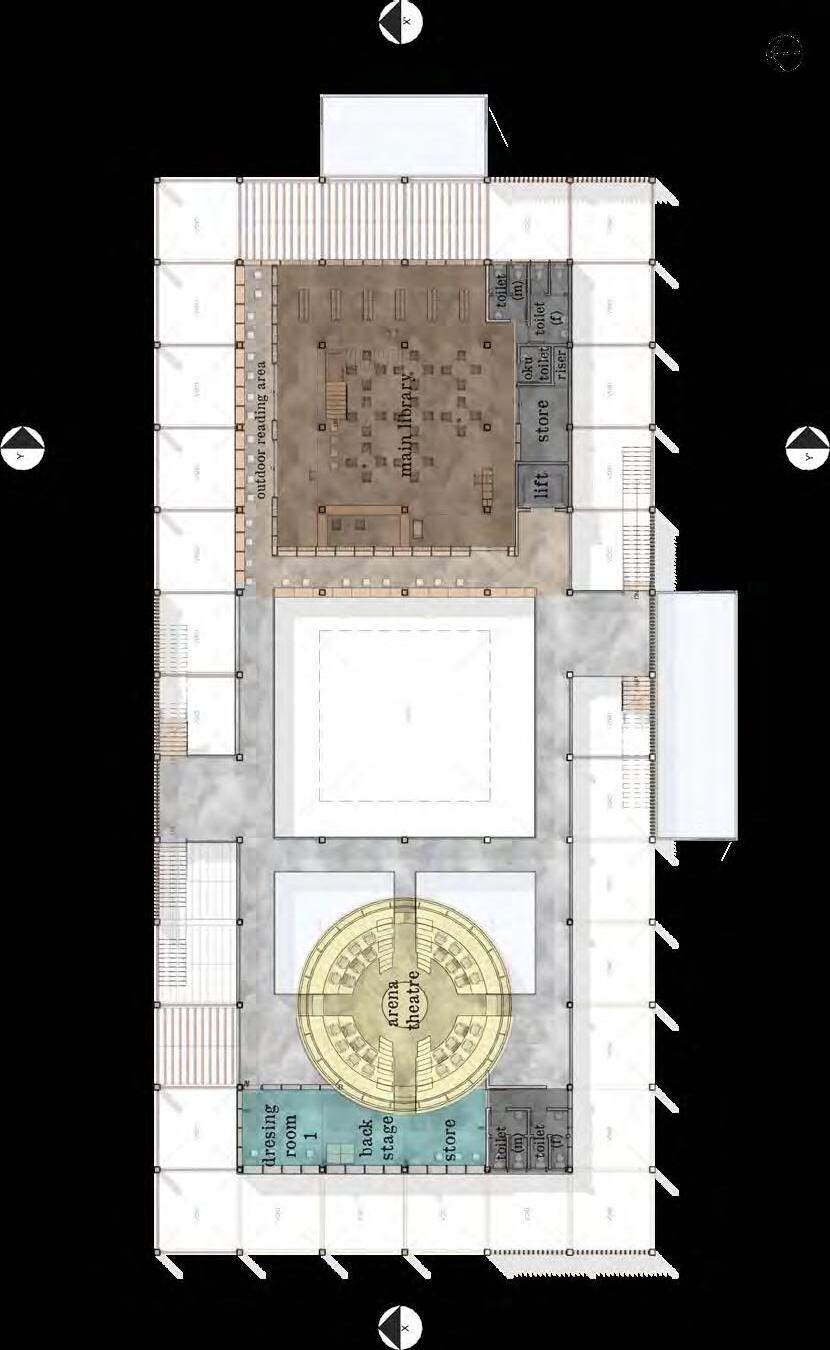
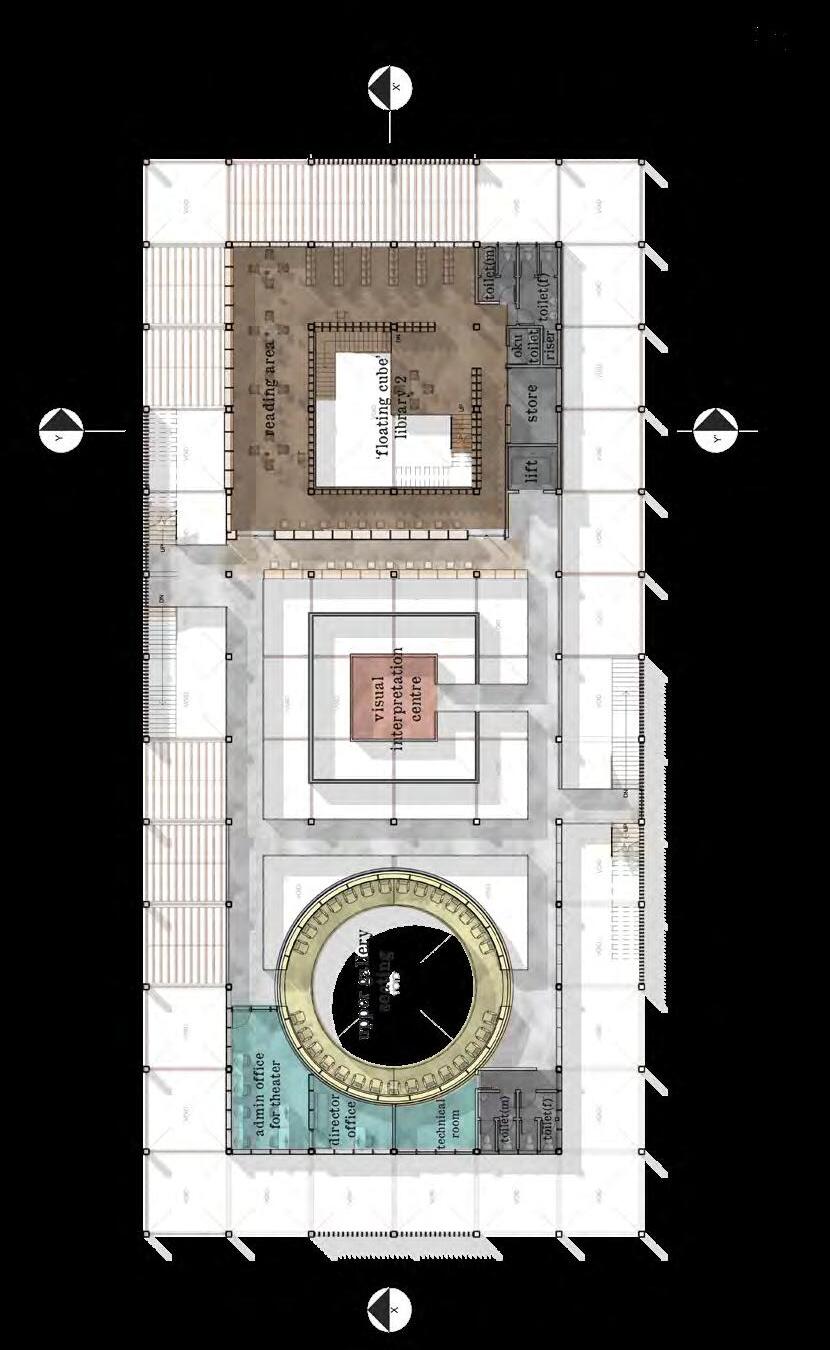
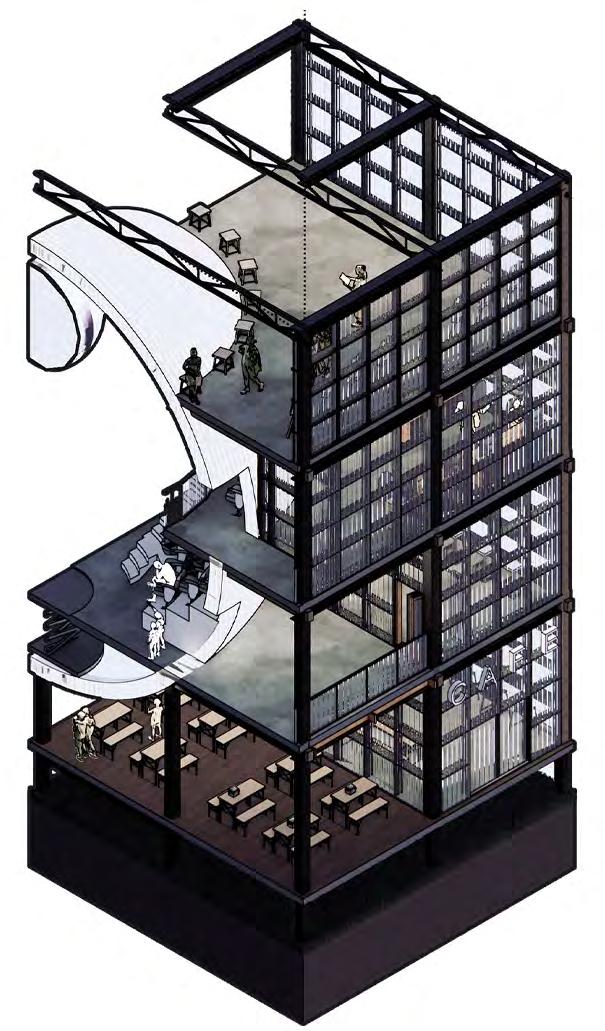
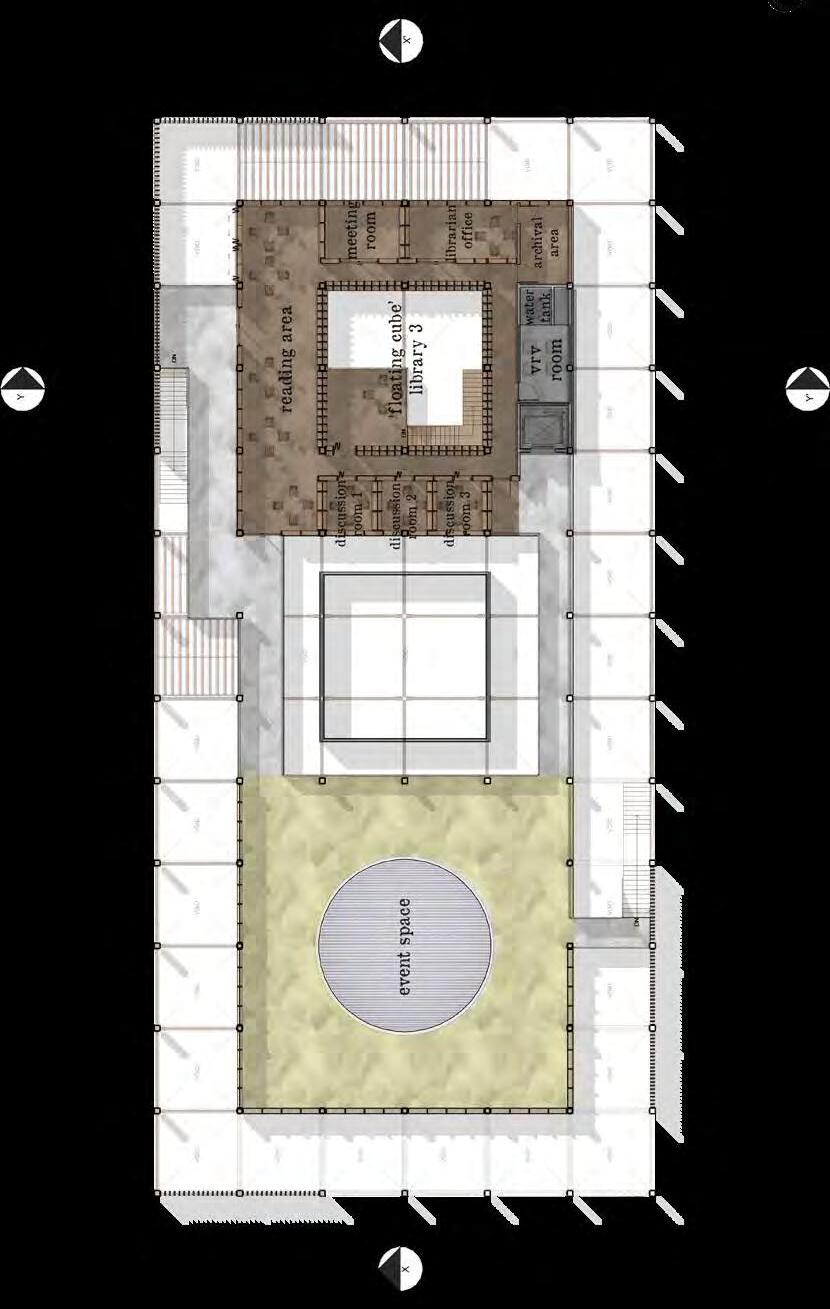

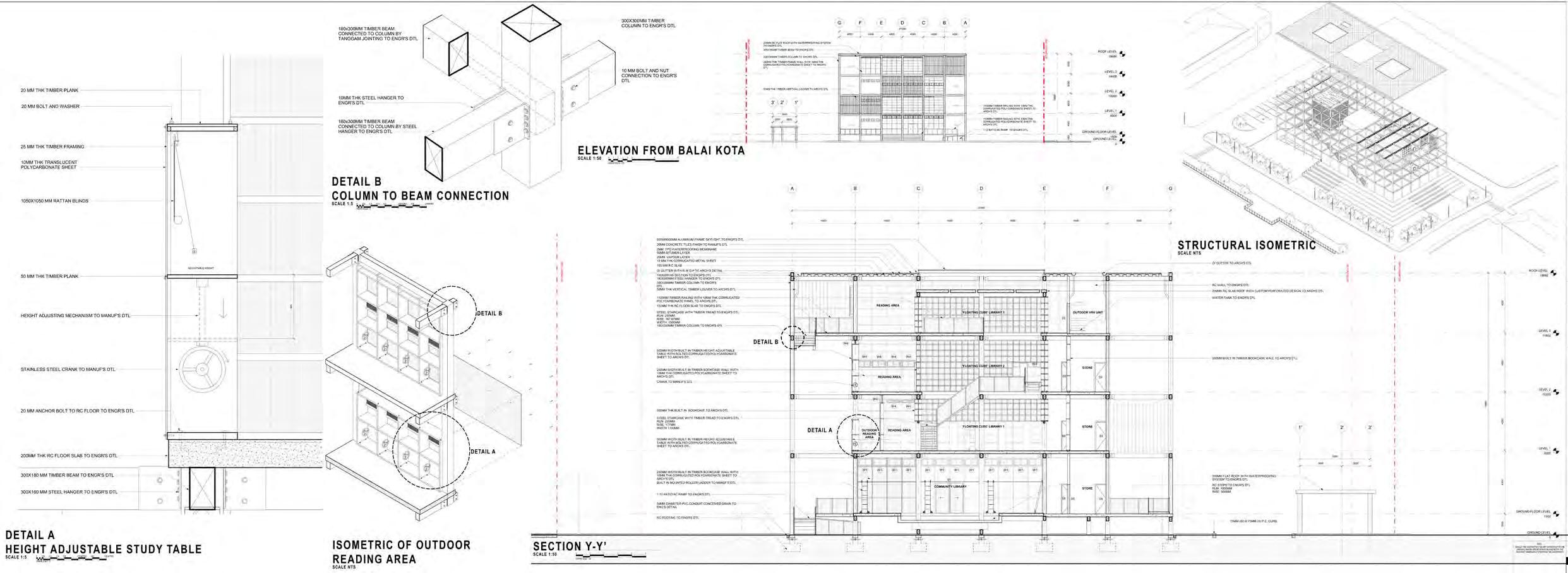
WOVEN DREAMS
Year: 2021
Project typology: Fashion Co-working and Learning Centre
The Woven Dreams Fashion Co-Working and Learning Centre stands as an architectural testament to the profound synergy between creativity, innovation, and space. Located in the heart of Johor Bahru, Malaysia, this project emerges as a dynamic response to the evolving urban landscape. It is poised to revitalize the local economy, offer communal spaces for the public, and inspire creative expression within a distinctive architectural framework.
Woven Dreams’ conceptual framework hinges on the idea of interconnectedness, aptly symbolized by the act of weaving. It envisions the project’s users as threads, interconnected and interwoven, collectively shaping the complex tapestry of Woven Dreams. This interpretation reimagines the relationships between designers, textile stores, the public, where mutual inspiration becomes the bedrock of the architectural experience.
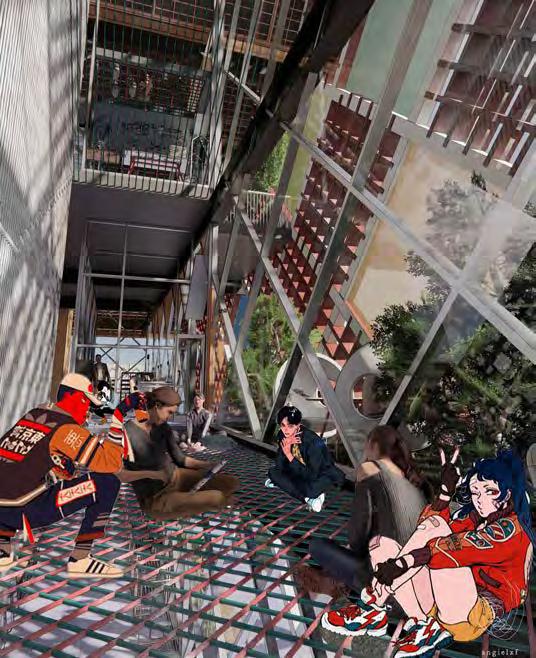
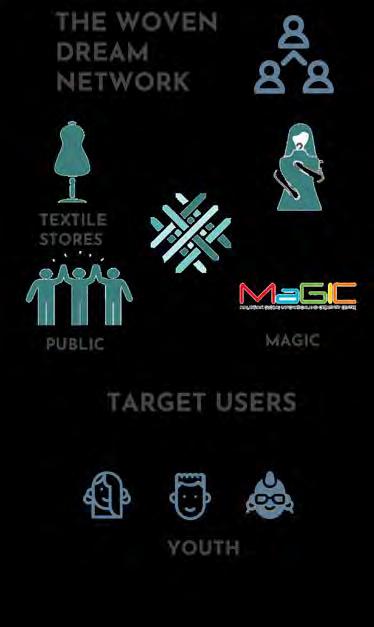
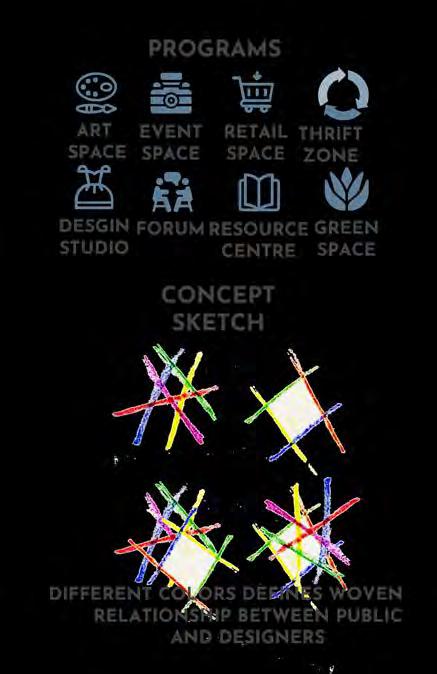
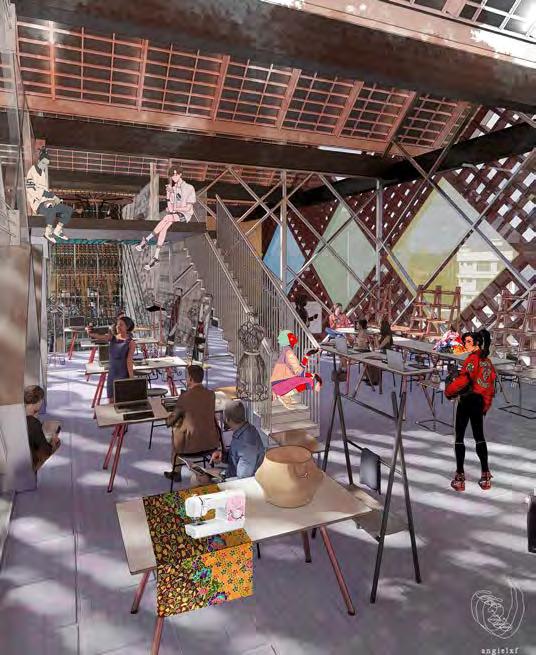
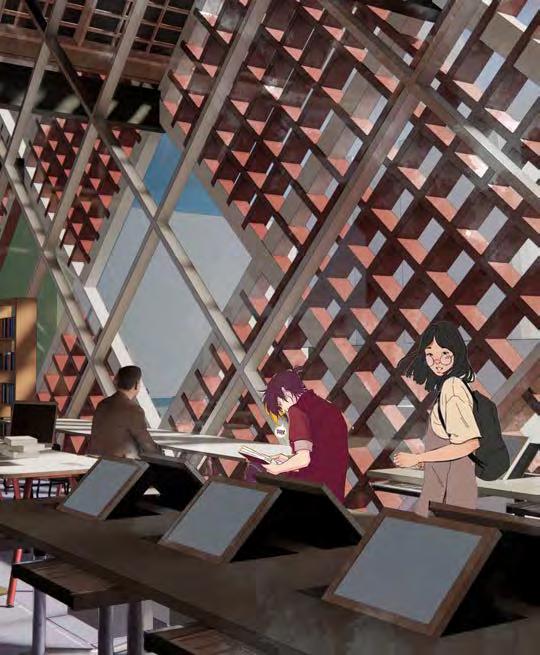
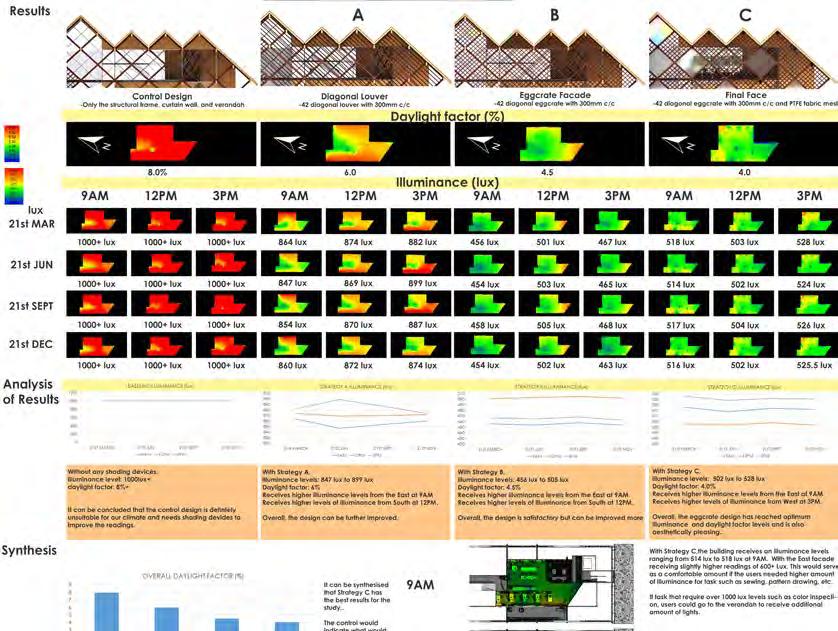

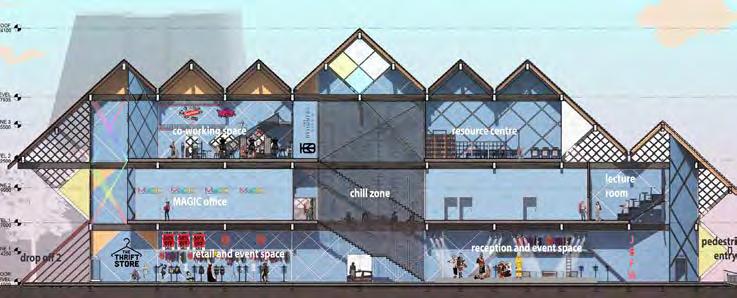
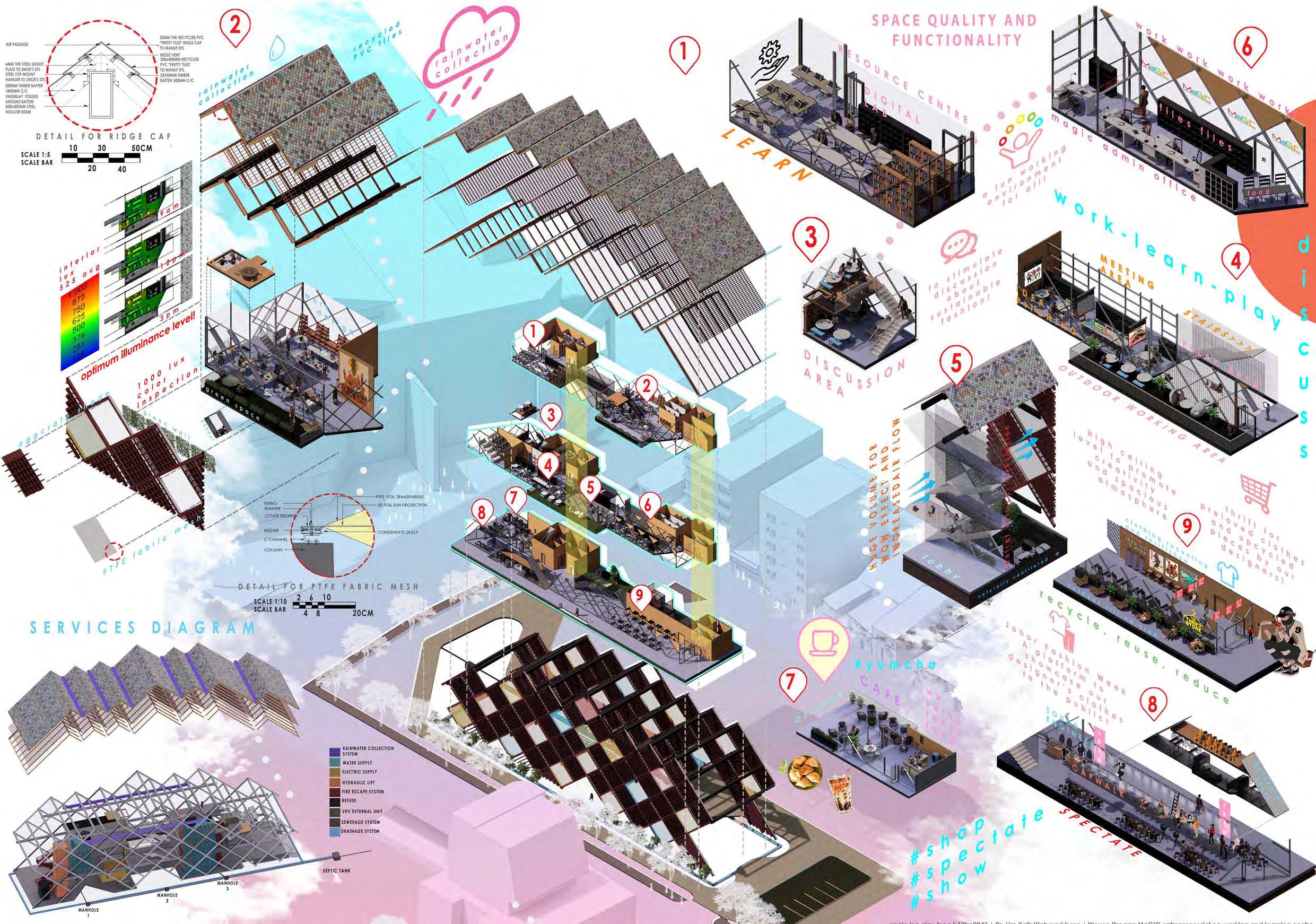
SWALLOW AND SPIT
A Depository of Creative Experiments
Pieter Bruegel the Elder once described an artist’s role as ‘swallowing’ the landscape and ‘spitting’ it back onto the canvas.
I am trying to do just that. Exploring my daily behaviours and beings, my environment and community and spitting them into musings of experimental art and ideas. The works here are not meant to be complete or final but meant to be processes and ideas, and act as a collection of random bits and bobs from my everyday – even the section title came from an art exhibit I had visited in Malaysia.
Welcome to Swallow and Spit : A Depository of Creative Experiments.
1. Automatic Drawings (Ink and Tracing Paper)
Works featured are experiments of automatic drawing on various moods and environments – from birthdays to funerals – from bedrooms to trains – from states of happiness to depression.
2. Installation Work
In collaboration with fine artist, Ryan Naga, I am creating a large scale hanging installation titled ‘Shape of Memory’, created with zip ties, forming vague abstract forms of memories.
2. Generative Artwork (gauGAN and Touch Design)
Working in a multidisciplinary collective of artists, industrial designers, and generative artists inspired me to pick up and toy with generative design – studying and experimenting with generative artworks and its future potential collaborations with my own future practise.
3. Documentation of Spaces
“the aim of every artist is to arrest motion…” -Faulkner. My fascination of documentation of domestic spaces –places that hold special memory to my life.
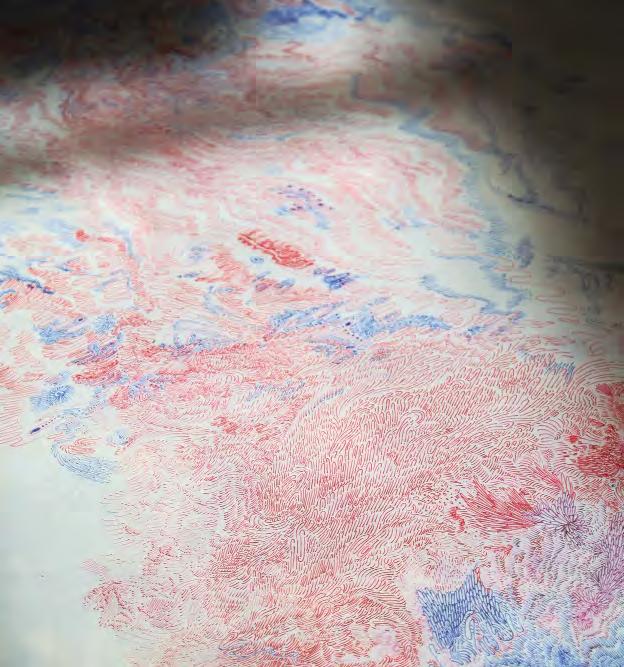
untitled ink on tracing paper
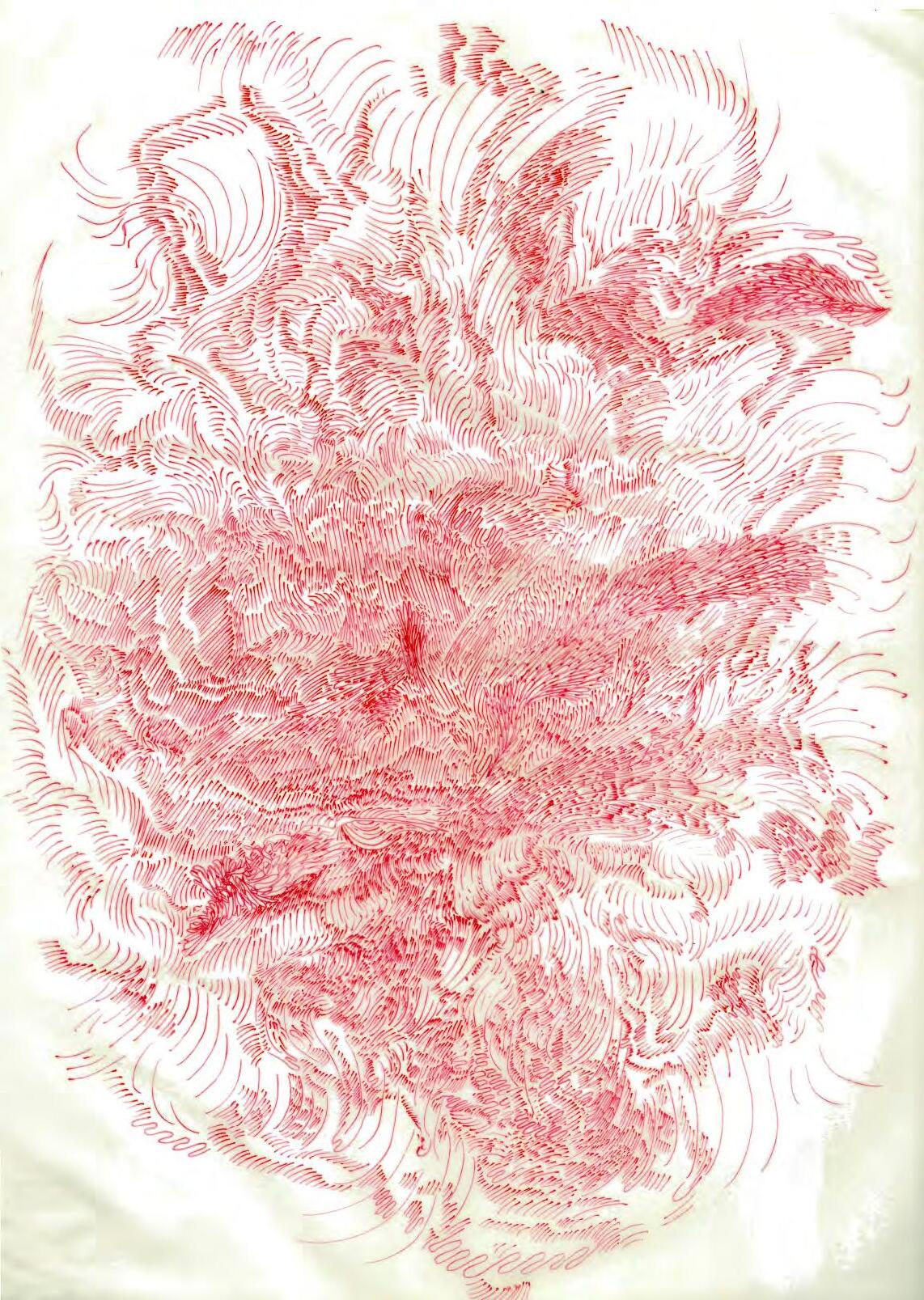
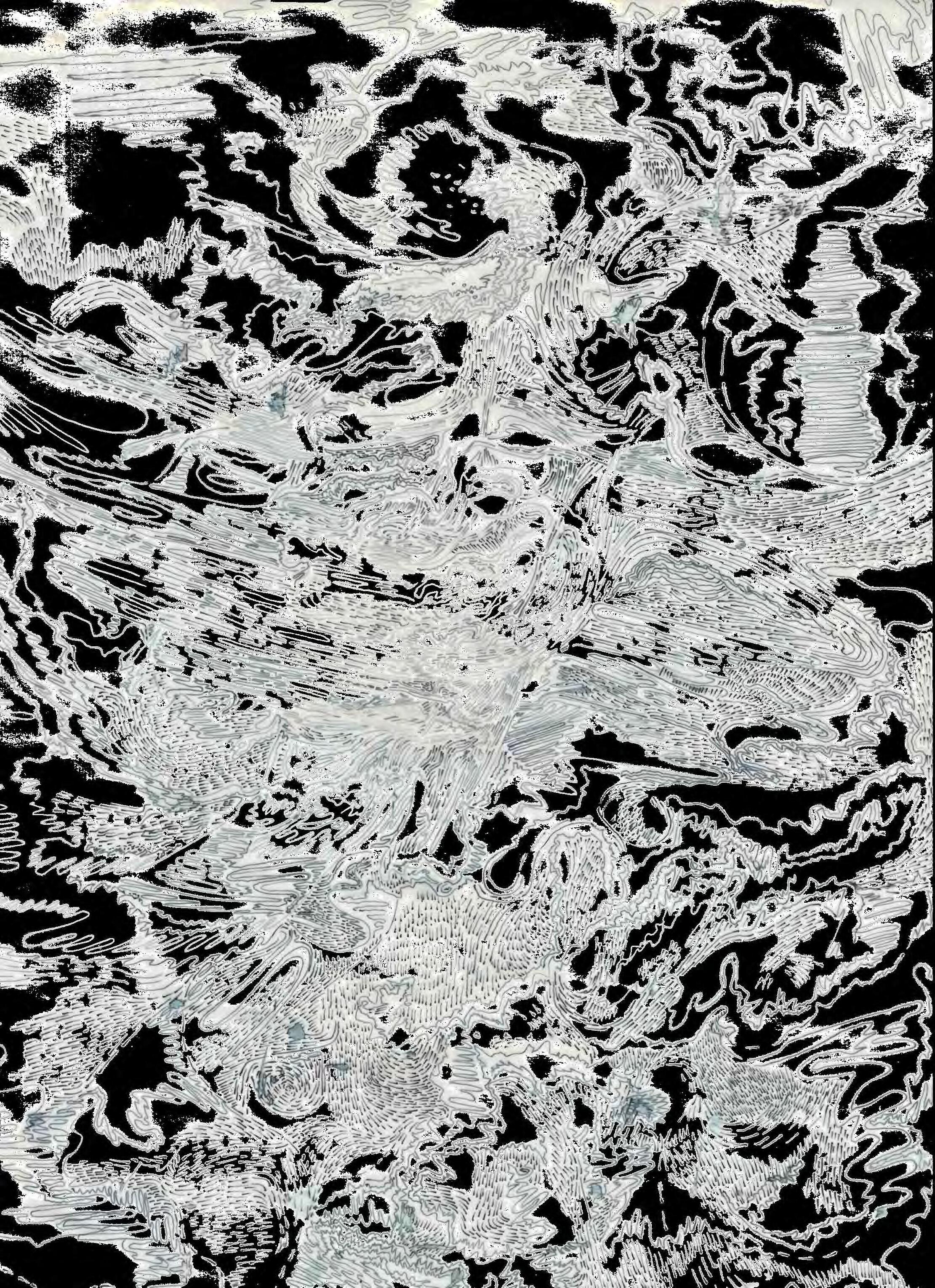
more than happiness ink on tracing paper
29.7 x 42.1 cm
right thing, right way, right time ink on tracing paper
29.7 x 42.1 cm
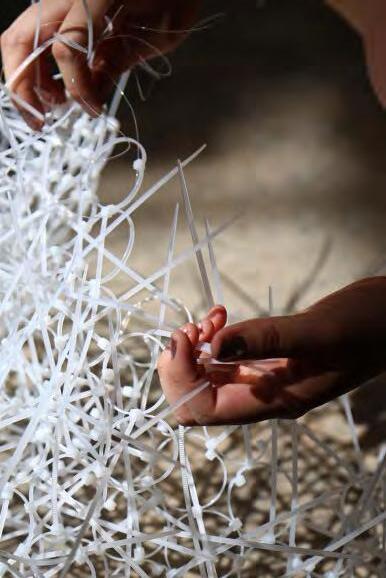
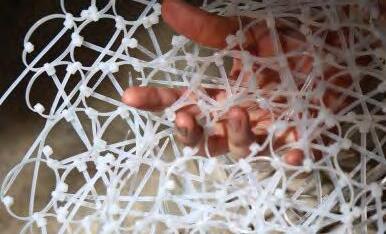
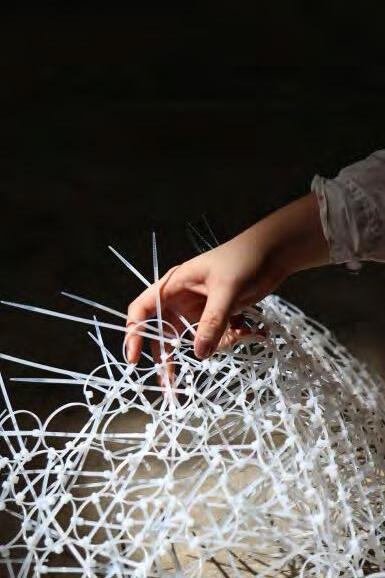
Shape of Memory
Drawing inspiration from artists such as Hsieh Tehching and Agnes Martin, I have always been fascinated with the idea of meditative practises that aim to capture the abstract and the everyday. From a distance, the thousands of interconnected zip ties imprinted with tiny words translate into a unified veil, almost like a tapestry. Everything seems relentlessly the same. Upon examination, out of this sameness arises difference. This relates to the interconnectedness of everything, how our current existence, our current knowledge, and all our stories are a result of an infinite series of chain reactions from lives that came before us and lives that exist alongside us.
There is something quite magical about using the connectedness, translucence, and breathability offered by zip ties as a visual metaphorfor the vastness of memory and the interconnectedness of existence.
With the humble zip tie as the focal point, the everyday object is elevated and perhaps even celebrated through repetition and individual customization that evokes a sense of timelessness and contemplation.
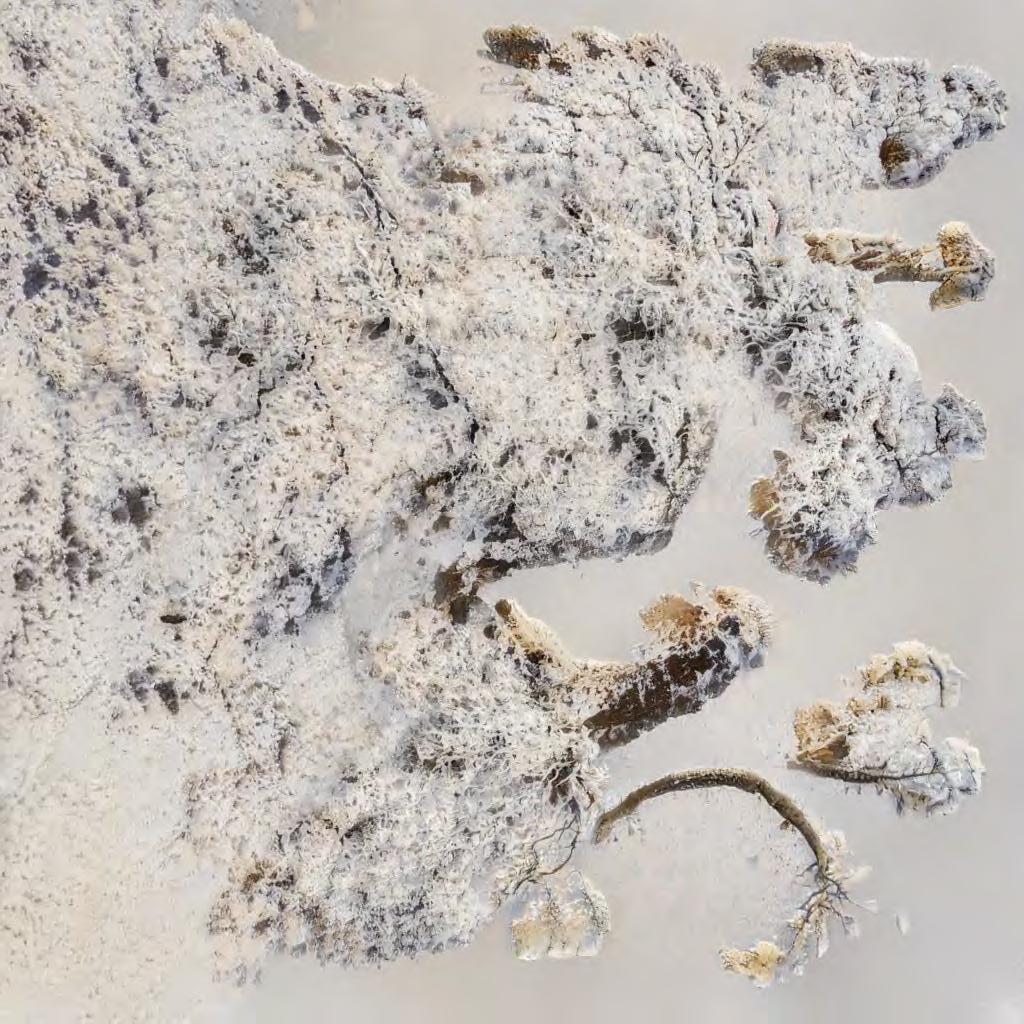
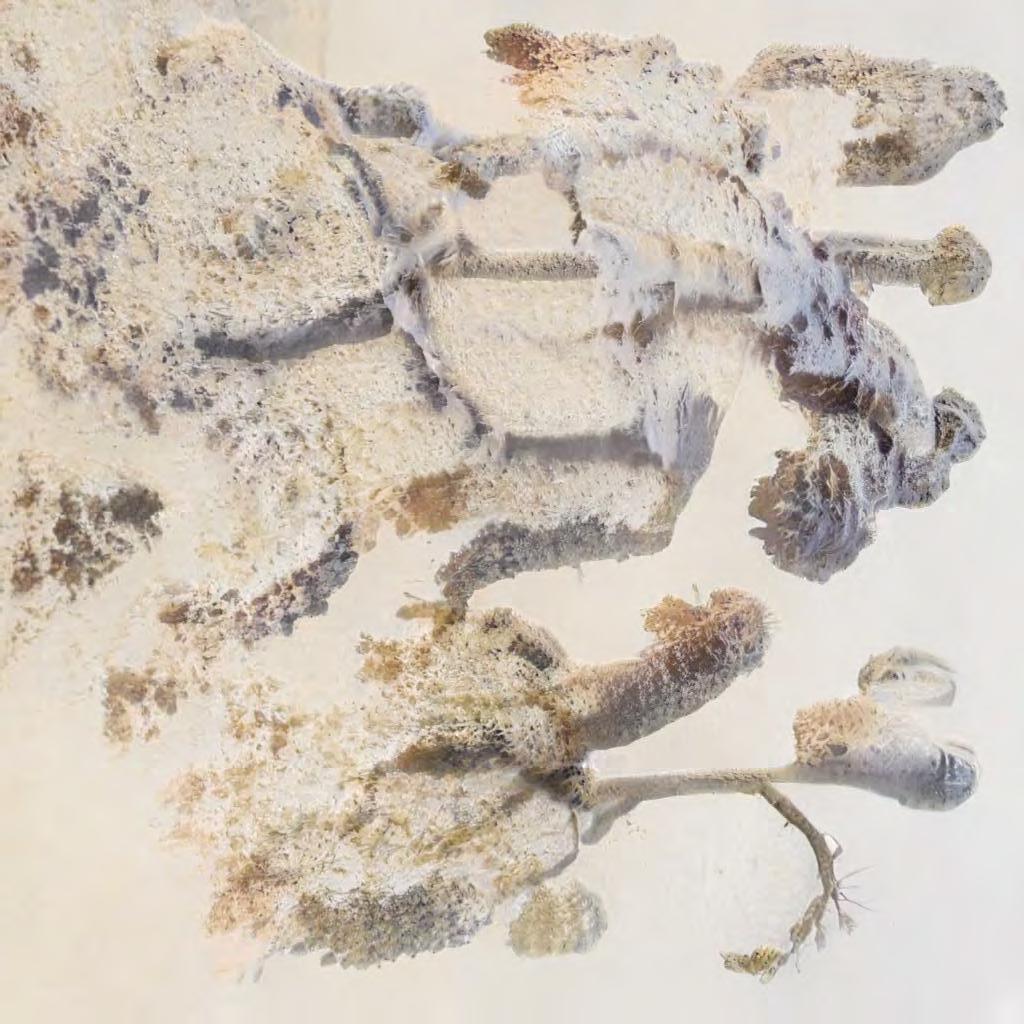
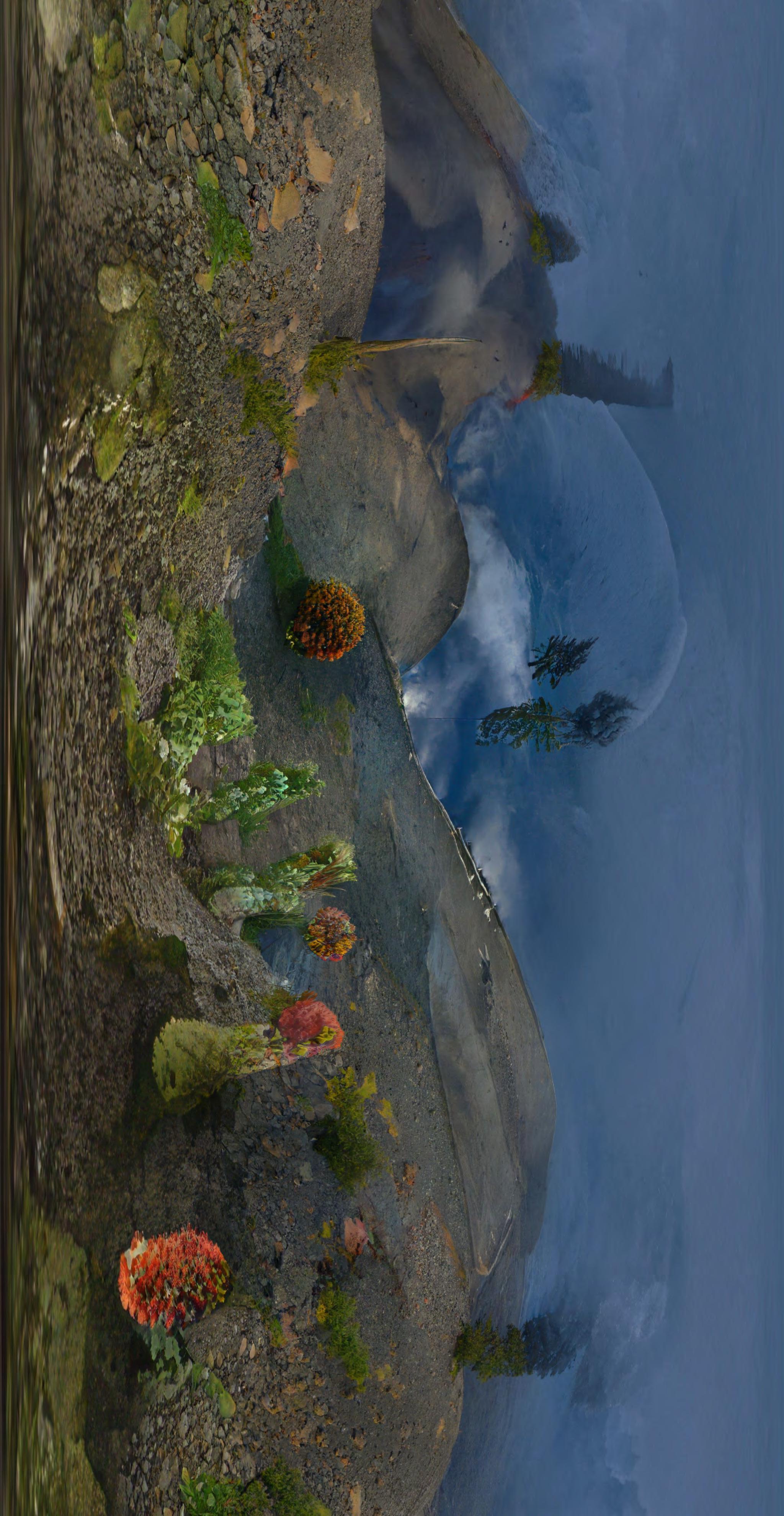
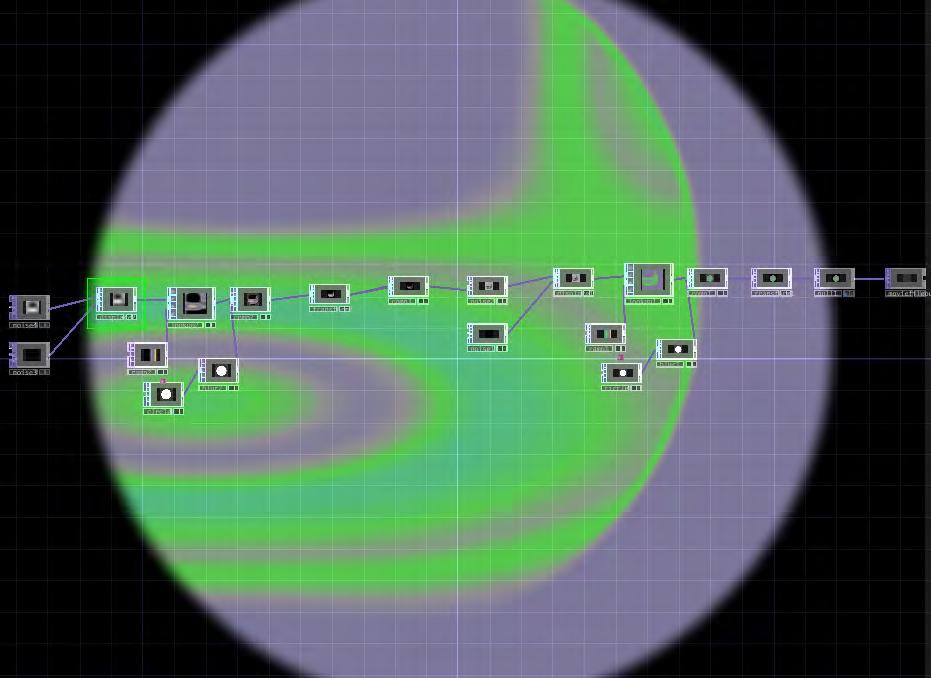
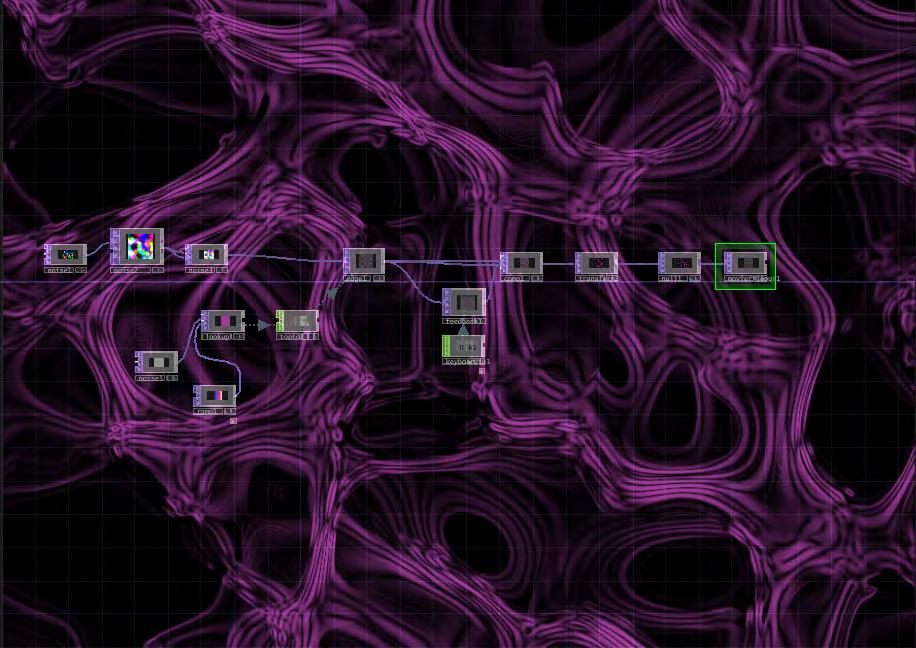
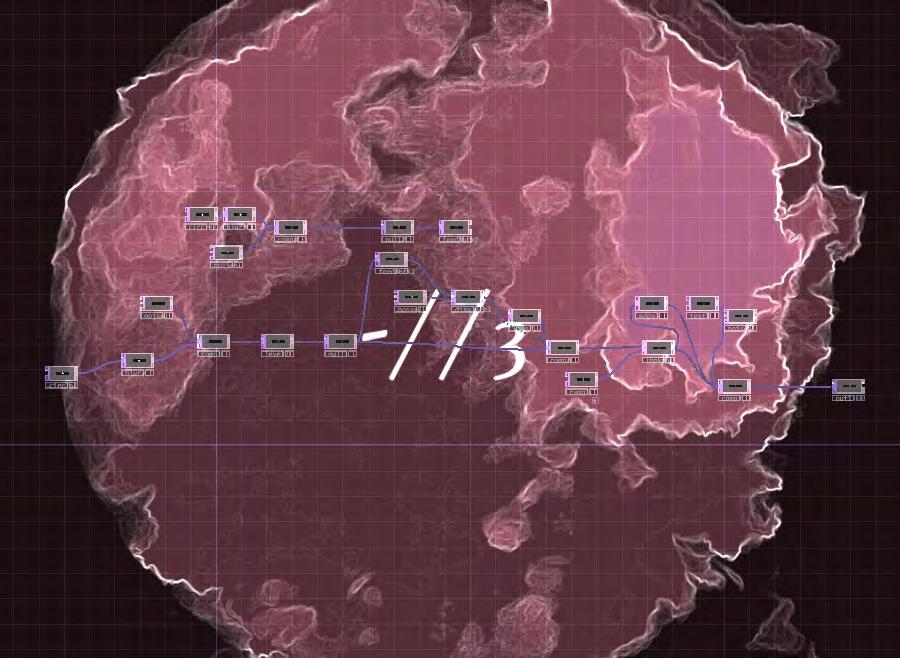
05 MACHINE FOR DYING (WIP)
Year: 2023
Project type: Conceptual Crematorium
Role: Concept and Narrative Design
Team: Adam Ikhwan Saiful Rizal,Safuan Fikri, Angie Lee, Kristine Low, Ian Thum
Phase: Detail Design
As I climbed higher, the city’s hum began to fade, And a silent world of stone and steel took its place. Above, the sky was endless, stretching far and wide, While below, a tower of the dead reached towards the sky.
Each floor held secrets, stories lost to time, As the living moved ever upwards, leaving the dead behind.
But as I looked upon the rows of tombs, A strange beauty emerged from the ruins.
For in this place of death and decay, Nature had taken hold, and life found a way. The green tendrils of ivy crept up the walls, As the bodies within returned to the earth’s call.
I watched as the cycles of life played out, The constant exchange of death and renewal, without doubt.
And though the dead may be gone, their legacy lives on,
As their bodies become part of the earth, where life is born.
In this vertical graveyard, high above the fray, I found a reminder of life’s fragile, fleeting way. But in the midst of the decay and the final rest, A reminder that even iin death, we are forever blessed.
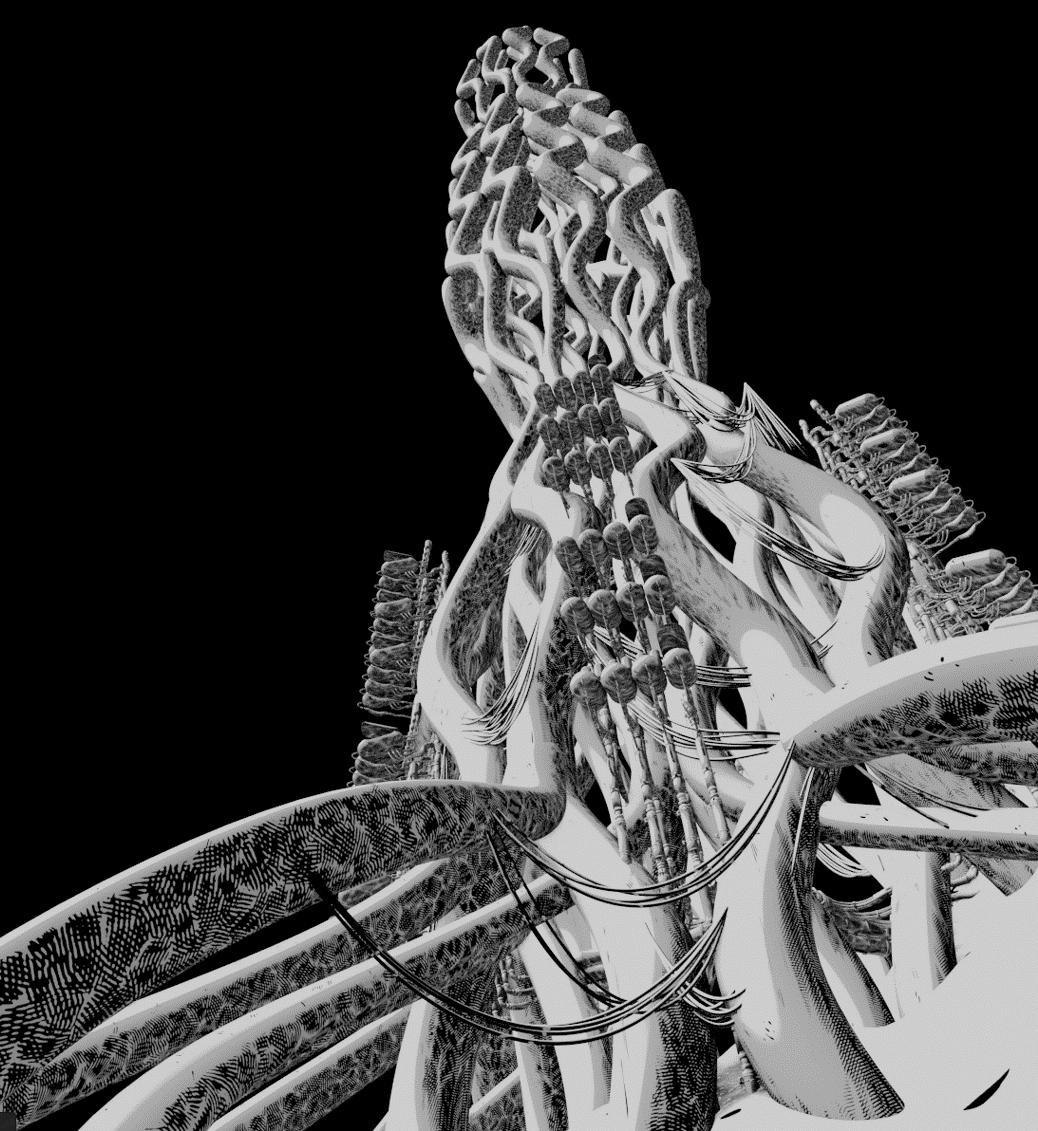
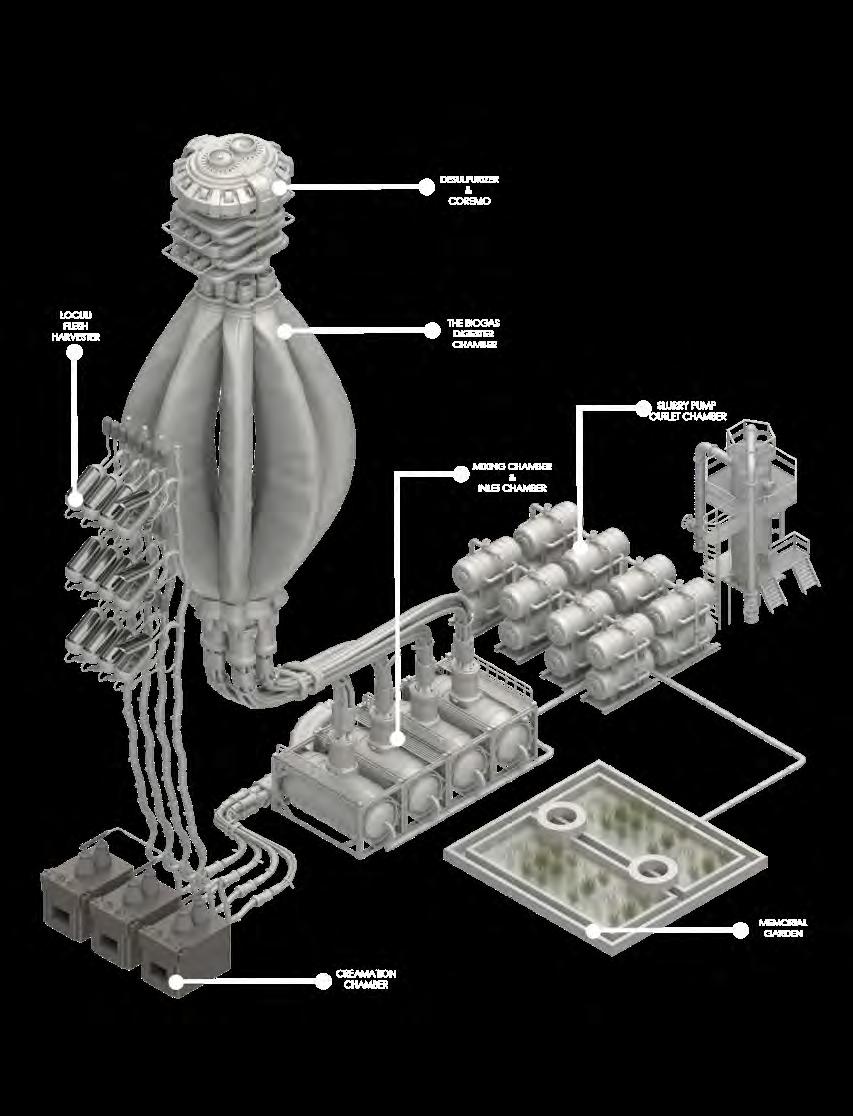
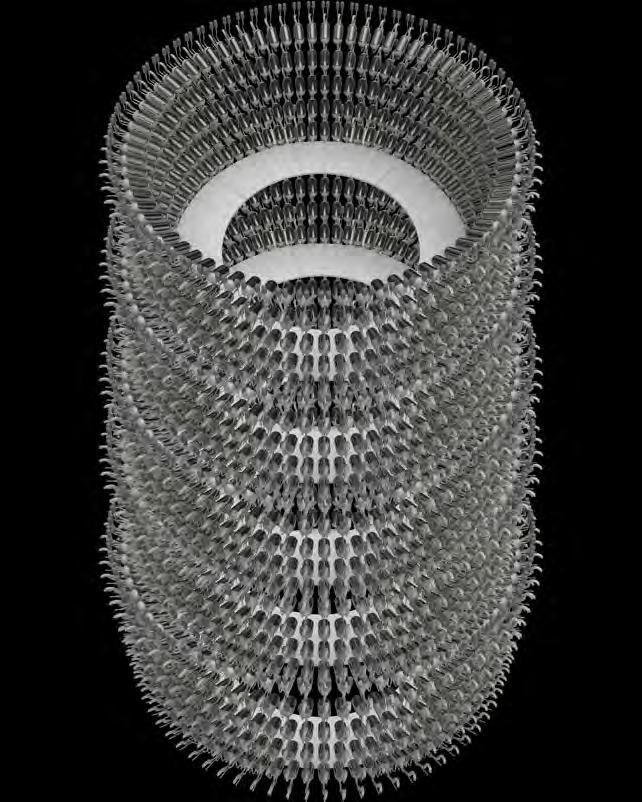
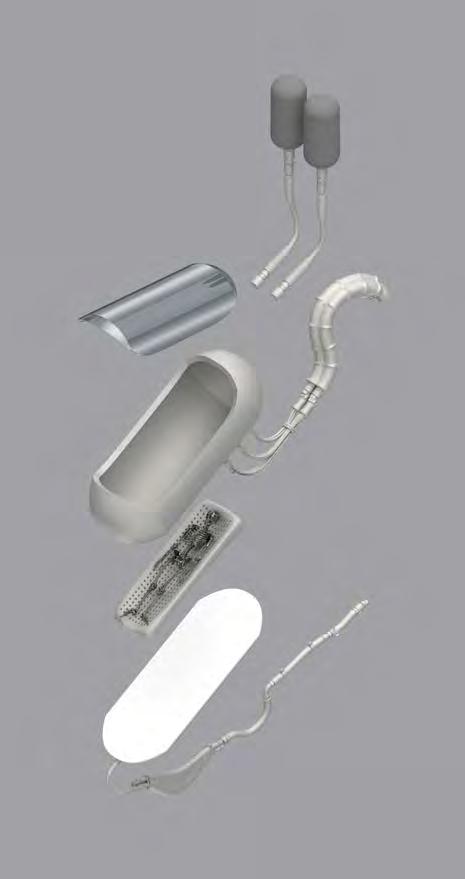
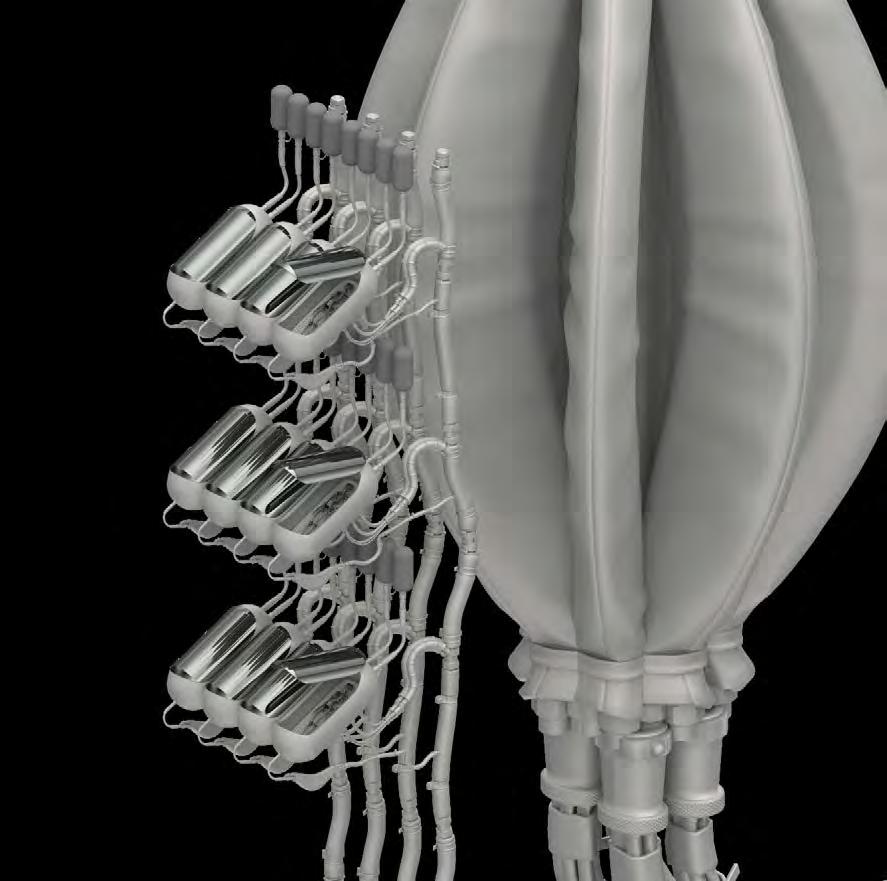
THROUGH THE FORKING LABYRINTHINE (WIP)
Year: 2023
Location: The Forked Labyrinthine
Project type: Game Development
Role: Concept Designer, Asset Designer, Game Mechanic
Team: ChongYan Chuah, Angie Lee, Kristine Low, Ian Thum
Phase: Concept Development
“Through the Forking Labyrinthine” is an allegorical journey through the complex and ever-changing maze of life, beckons players to explore not only the intricacies of gameplay but also the depths of philosophical inquiry.
The protagonist, a nameless monkey, awakens in a bewildering maze without any recollection of their past. As players take the reins, they are thrust into a labyrinthine world where the very essence of existence is brought into question. An allegorical voyage into the human experience, spanning the stages of life—adulthood, adolescence/childhood, and toddlerhood. Each stage is depicted through intricate and symbolic environments, offering players a multi-faceted exploration of existence.
As players progress through the maze, they are confronted with choices that lead to different pathways, echoing the myriad decisions one makes throughout their life. The complexity of these choices and the uncertainty they bring are beautifully embodied in the ever-expanding web of possibilities in the game. Like the allegorical monkey, players are encouraged to question the paths they choose and the nature of existence.
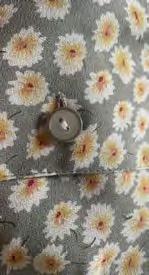
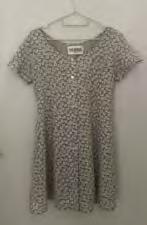
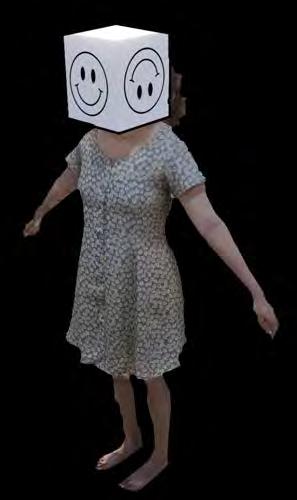
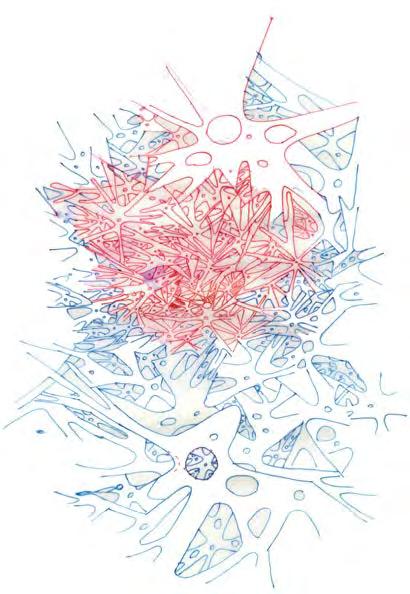
Allegories based on personal attachment to an object in our life Automatic Drawing created based on sentimental object
My mother’s dress
She wore it when she was 25 years old 35 years ago
She wore it when she was younger prettier maybe happier 35 years ago
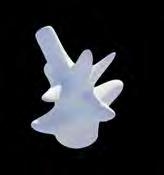
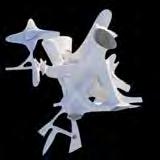
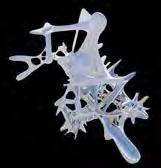
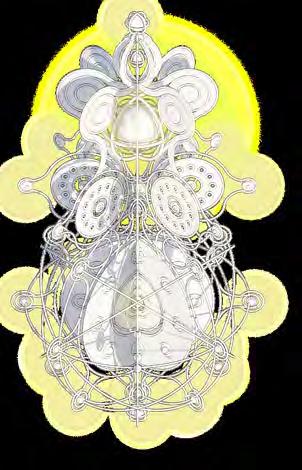
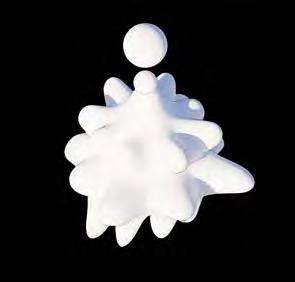
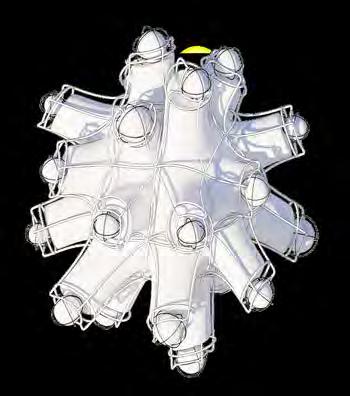
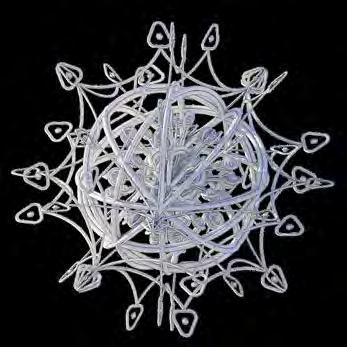
She wore it when she was full of dreams, hopes aspirations of what could be 35 years ago
She gave it to me when I was 25 years old 35 years later
I wore it when she grew grey hair, her skin sagged, her legs not as pretty as they used to be 35 years later
I wore it when she hoped more than anything I’d chase my dreams 35 years later
But in the back Sometimes id wonder What mom’s life would be if all her dreams did come through
While I live my life in My mother’s dress
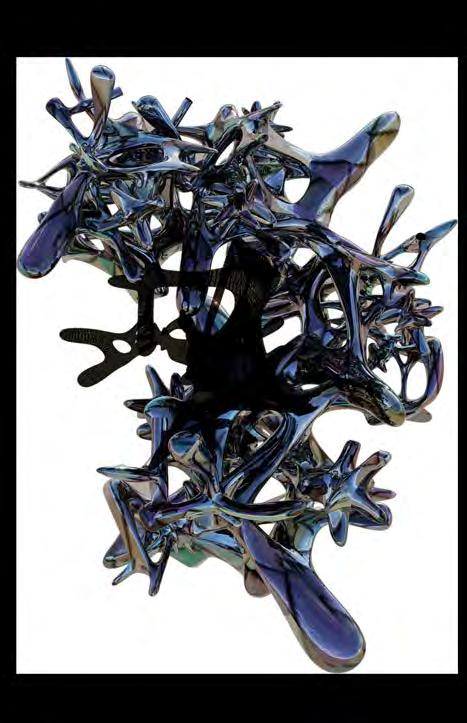
3 Dimensional forms based on automatic drawing for game asset libray Maze Overall Plan
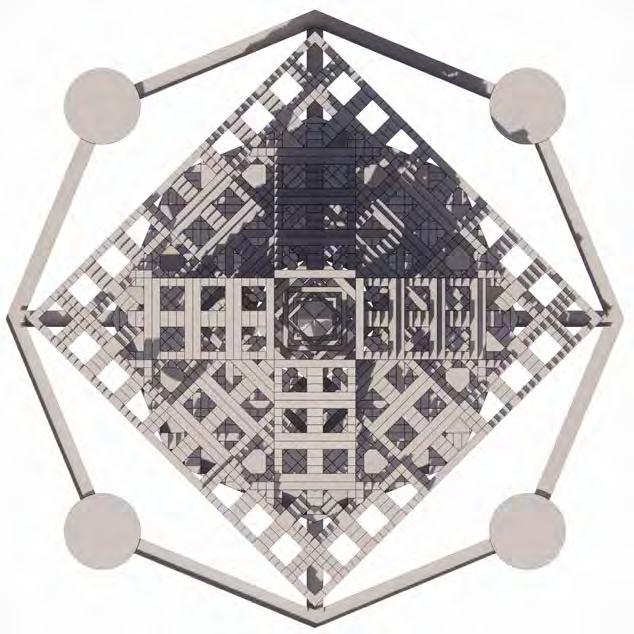
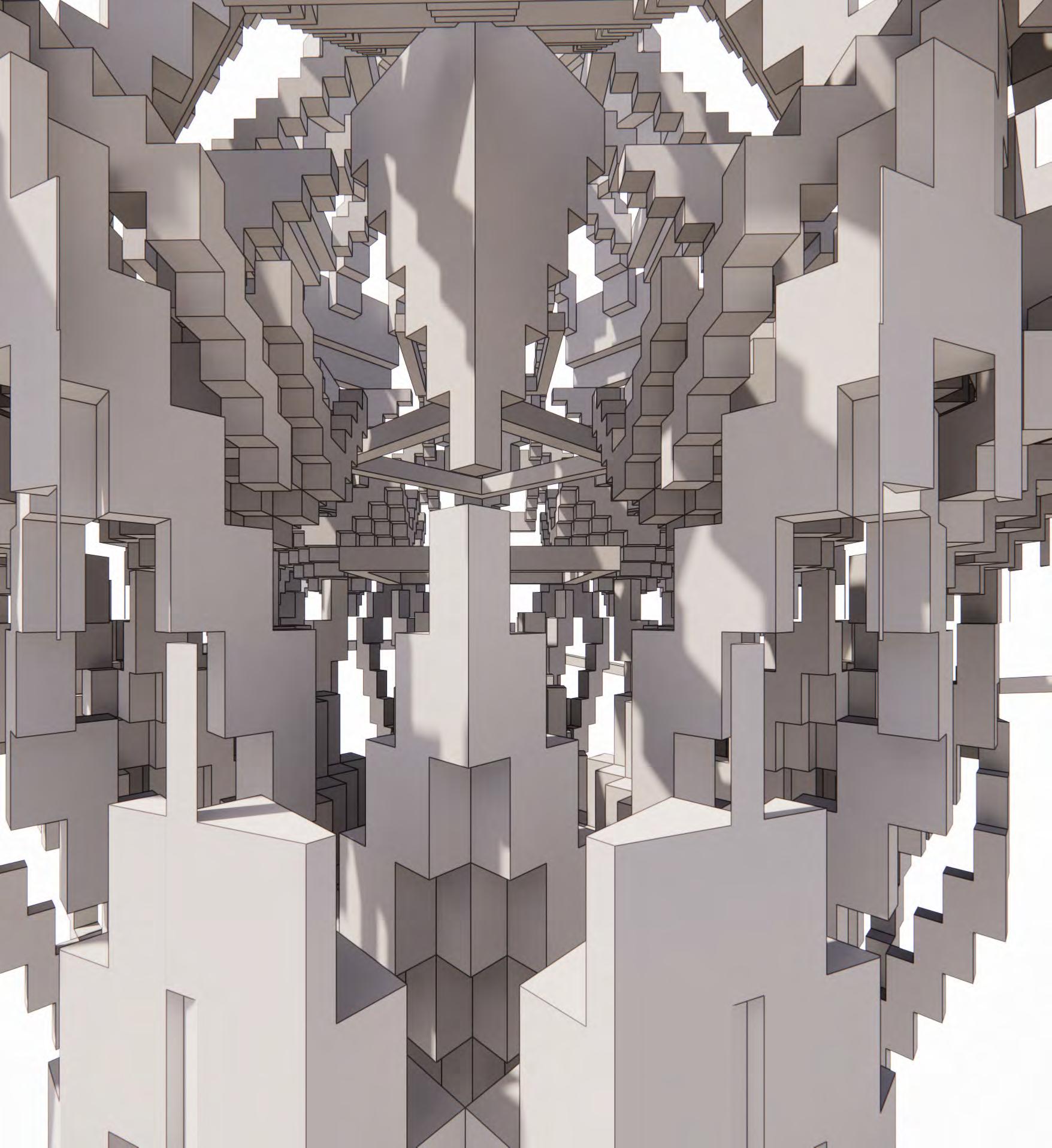
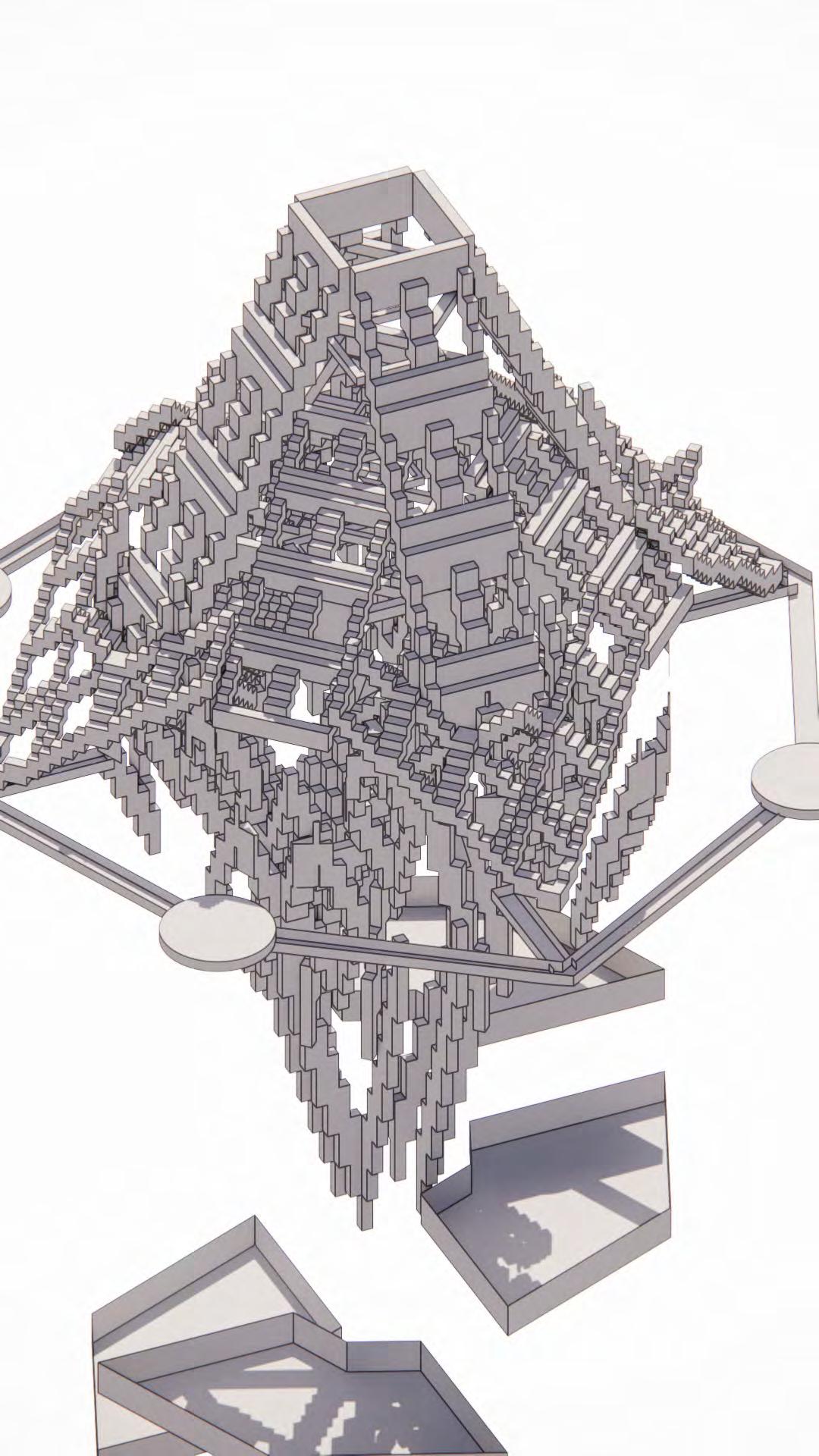
Maze Entrance
REDEVELOPMENT OF SEMUA HOUSE
Year: 2021-2024
Location: Kuala Lumpur
Project type: Redevelopment
Role: Lead Feasibility Study
Lead Concept Designer
Assistant Detail Development
Team: Shin Tseng, Immesh Nantha, Angie Lee, Muhammad al-Shoufi
Phase: Construction
Located in the bustling Jalan Tunku Abdul Rahman, a famed textile district in Kuala Lumpur. Semua House is set to be the catalyst of the traditional textile hub of Malaysia,
Buzzing with sights, smells and sounds, this downtown area pulses like a truly Malaysian heartbeat rhythmically and quintessentially diverse in its offerings and outlook.
The new Semua House is poised to be a space where commerce and community thrives. Various voids were carved in the building, allowing a physical connection to the bustling neighbourhood. Whereas various vertical connection, mainly the atrium staircase was introduced bridging the space together.
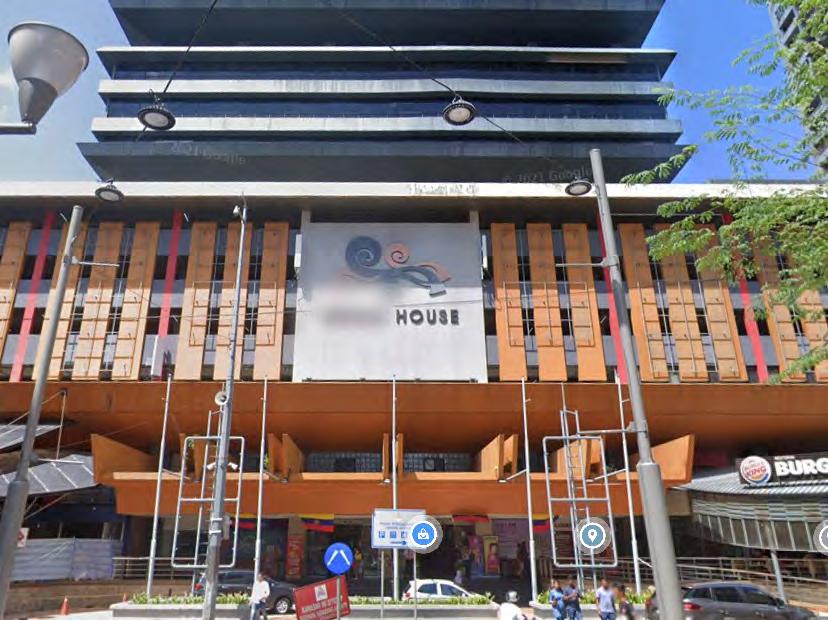
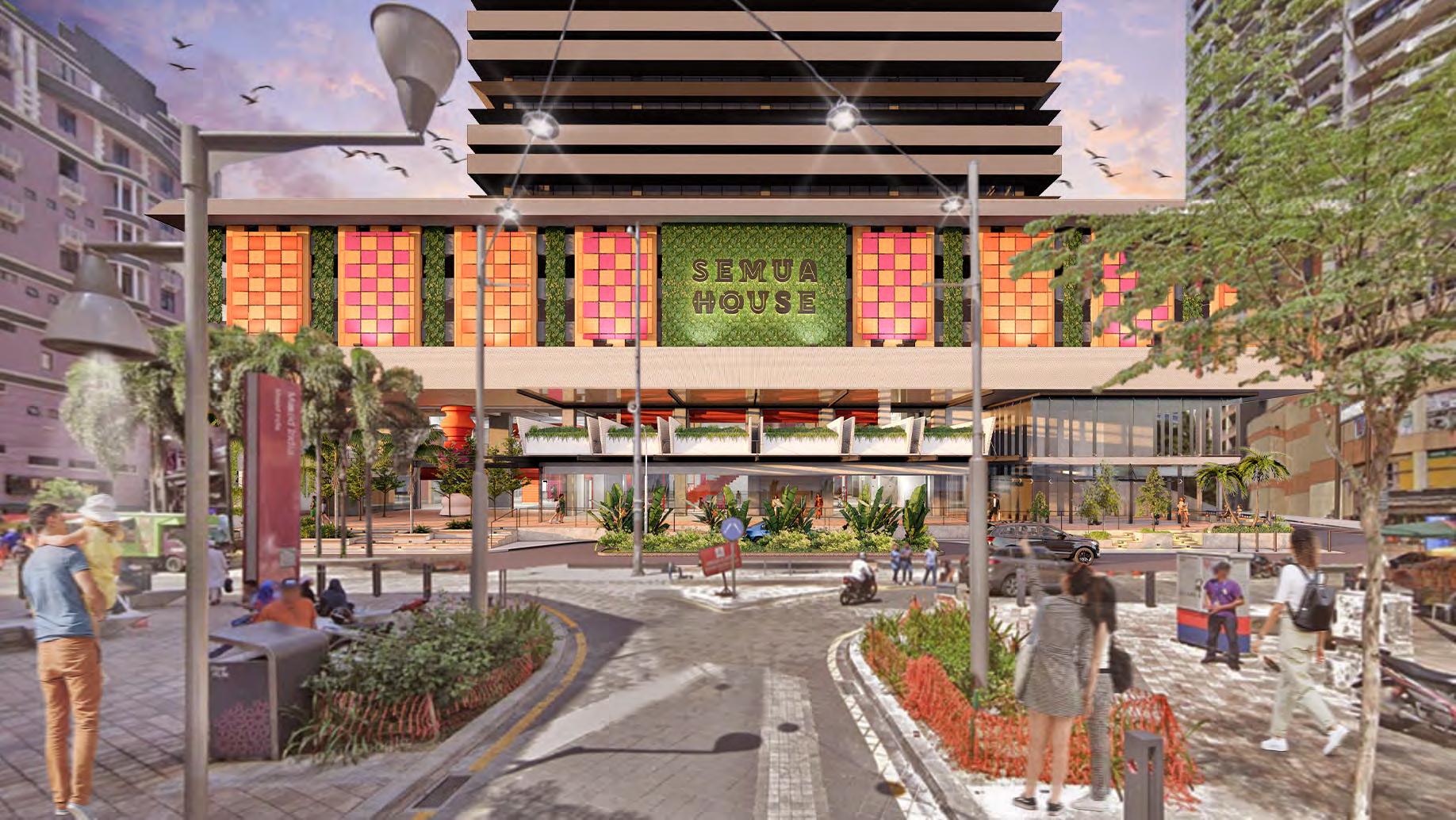
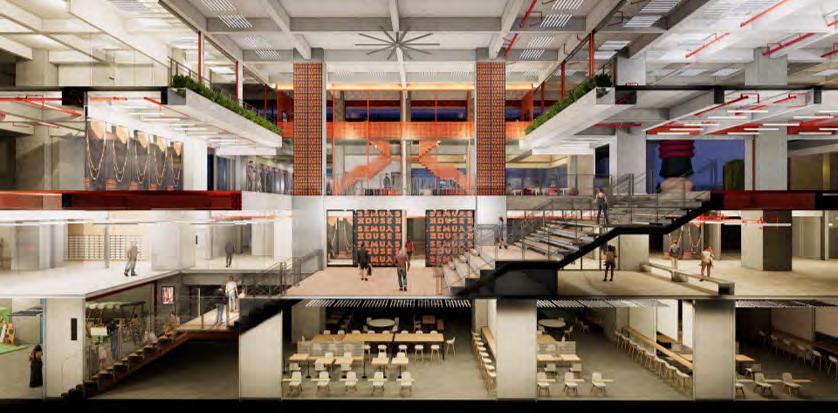
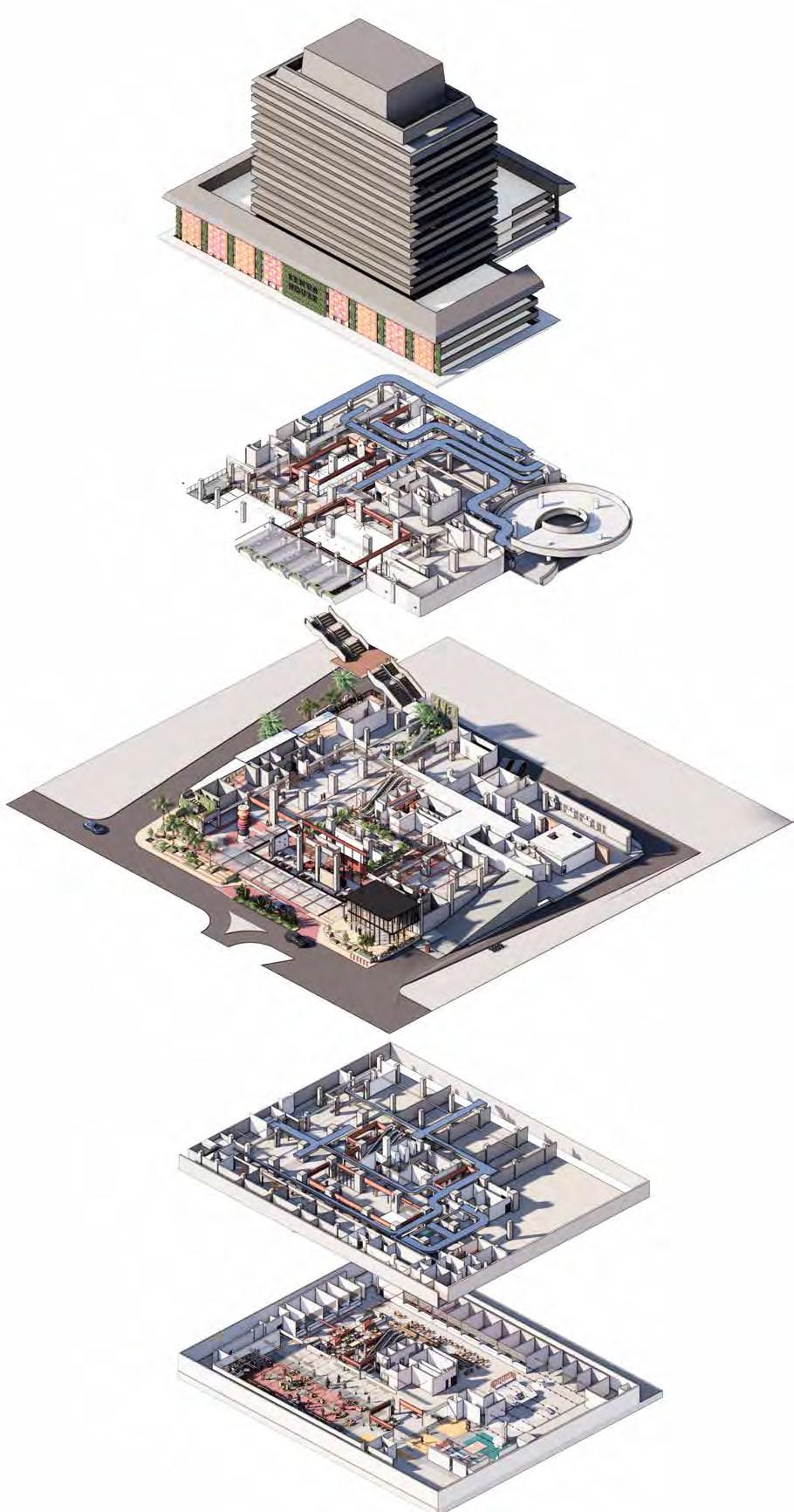
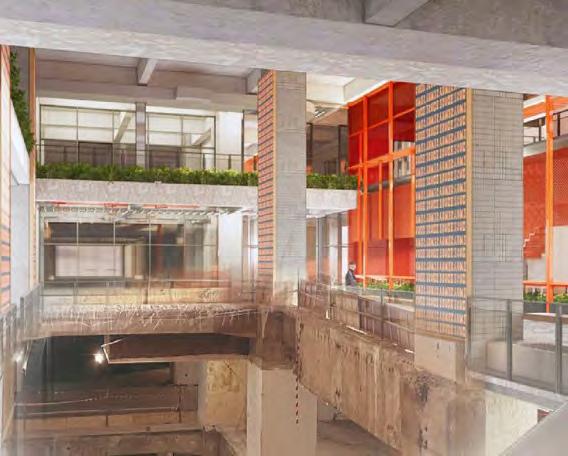
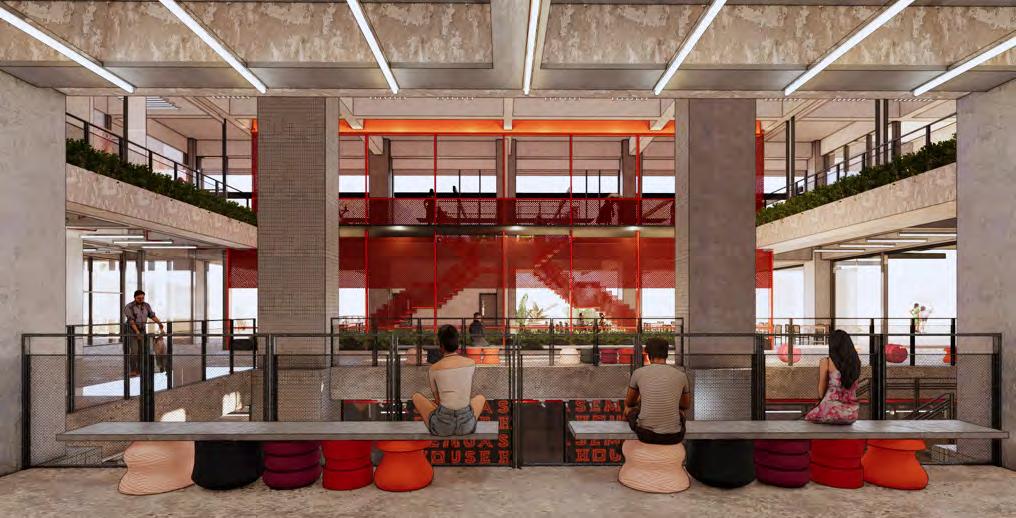
THE FIVE BLOCK D
Year: 2022-2024
Project type: Adaptive Reuse
Location: The Five, Damansara Heights Kuala Lumpur
Role: Lead Concept Designer
Assistant Detail Development
Team: Shin Tseng, Immesh Nantha, Angie Lee, Muhammad Haziq
Phase: Submission Approval
A redevelopment of the old HELP University building block into an ‘urban living room’ in the heart of the retail masterplan of The Five, Damansara Heights. 50% of the space was demarcated as public space, which informed the striking removal of 50% of the façade and Level 1 floor plate, allowing a porous entry across the entire space. While a series of lush tropical plants have been thoughtfully placed throughout, immersing visitors in a serene tropical paradise. In the voided corner of the building, a hanging ficus tree is suspended in the centre, vivaciously growing with the space.
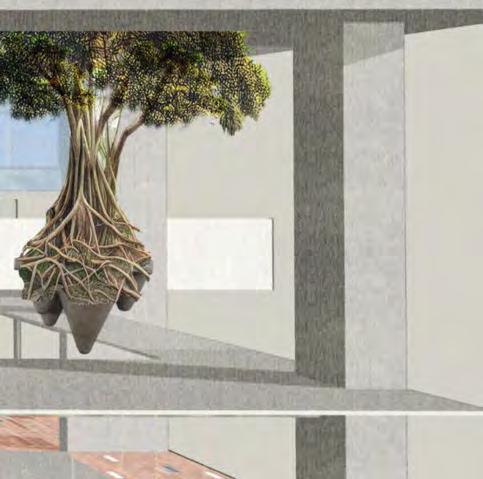
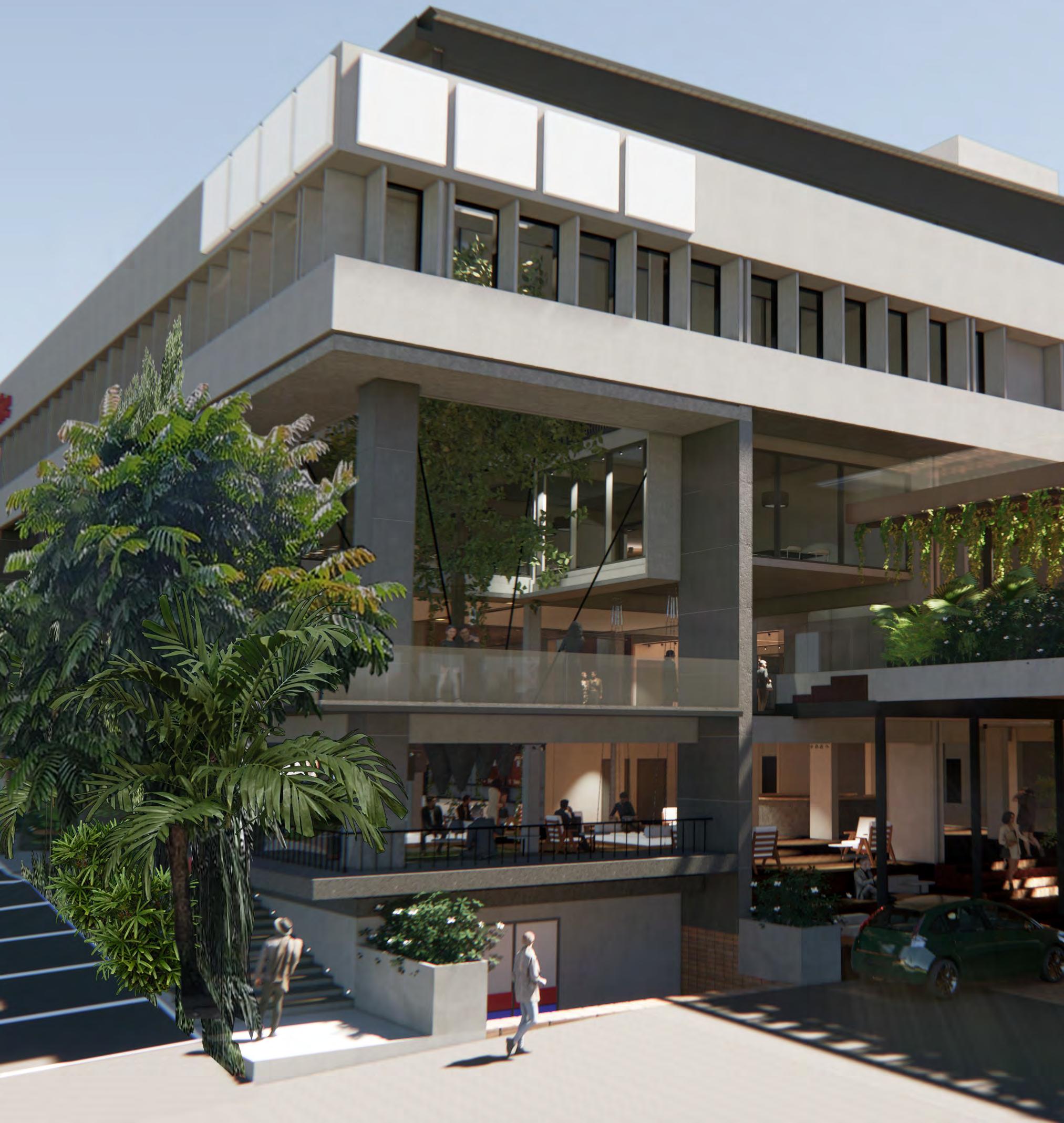
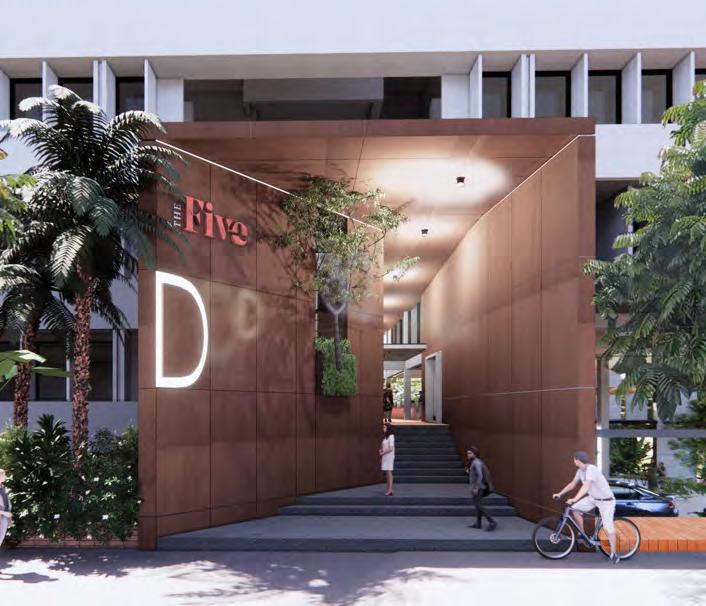
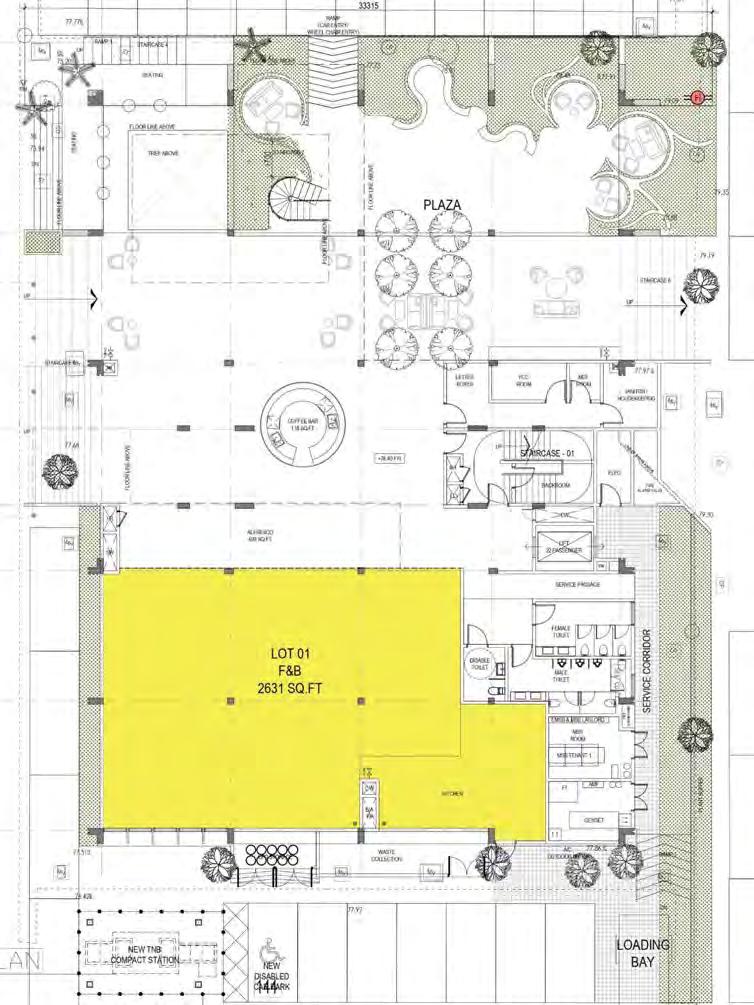
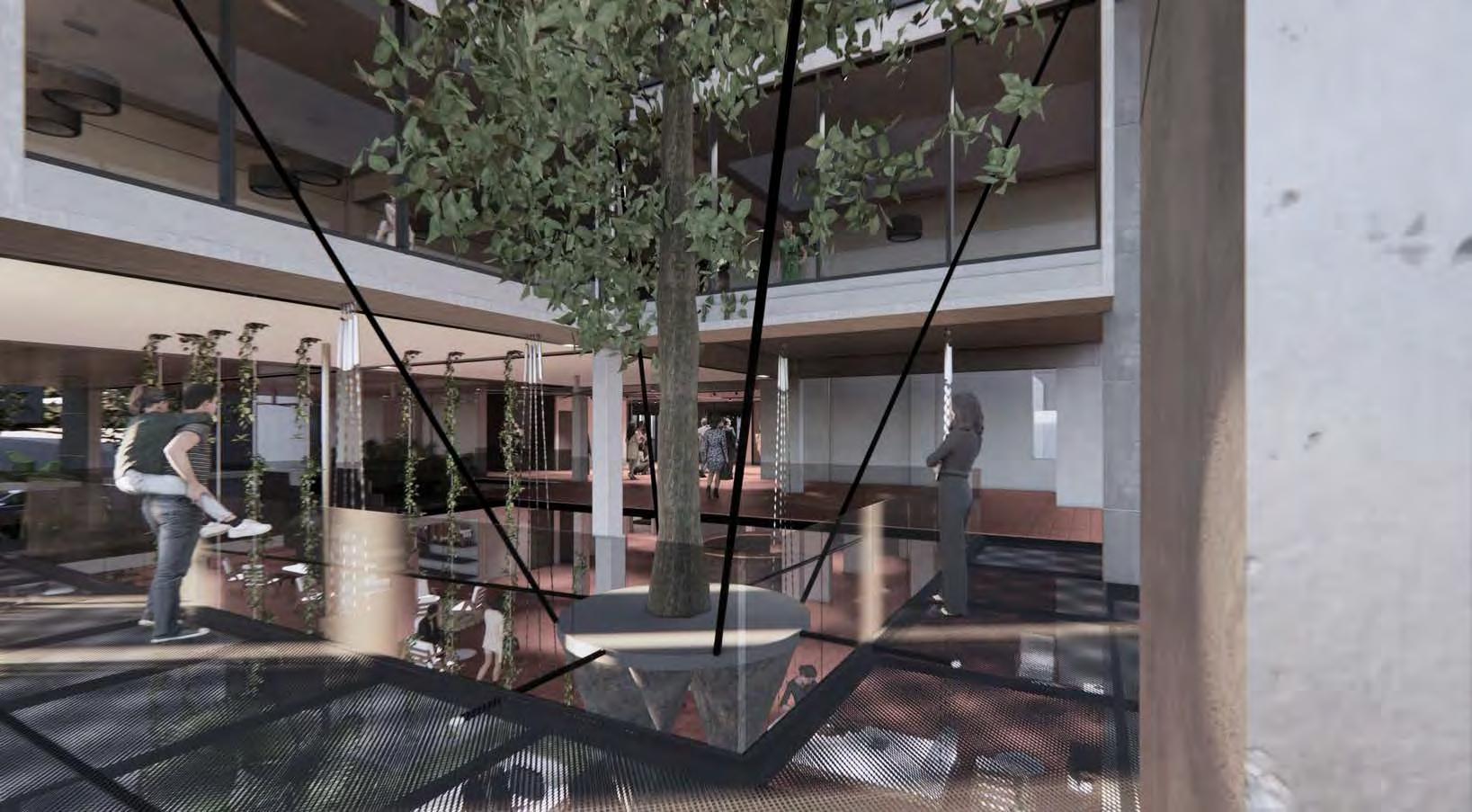
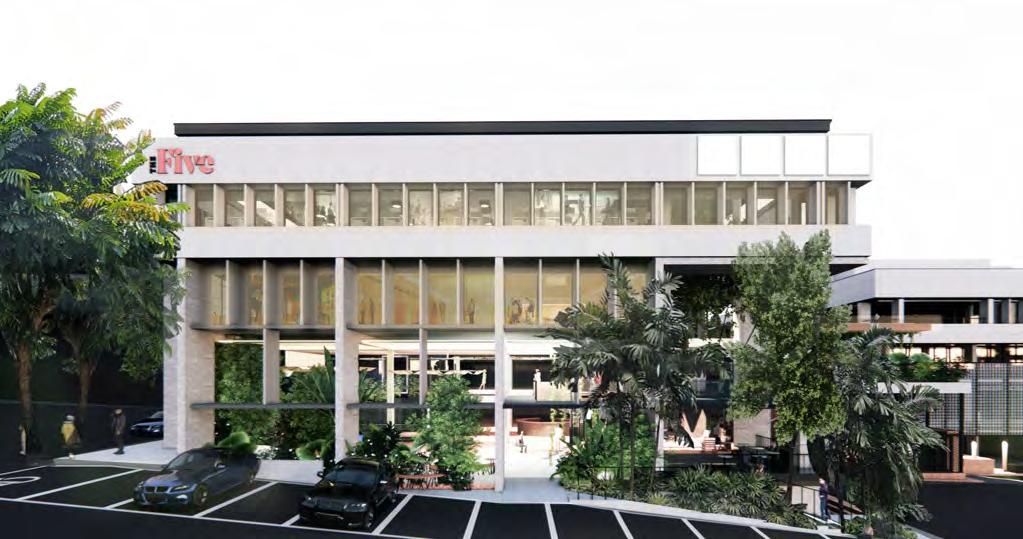
POINT FIFTEEN
Project type: Adaptive Reuse
Location: SS15, Subang Jaya, Kuala Lumpur
Role: Design Architect
Lead Concept Designer
Lead Detail Development
Team: Shin Tseng, Angie Lee, Muhammad Haziq, Muhammad Hazman
Phase: Detail Development
A major redevelopment of the old Taylor’s College located in the hustle and bustle of SS15, Subang Jaya, retrofitting the iconic campus into a retail life stylehub, consisting of curated F&B services, wellness services, and co-living.
A focus on improving the access and circulation while maintaing as much of the existing structure, creating a new ground floor as well as double frontage throughout the building is emphasized, While cleverly combining landscape design , to provide a retreat and as a point of meeting for the folks of SS15.
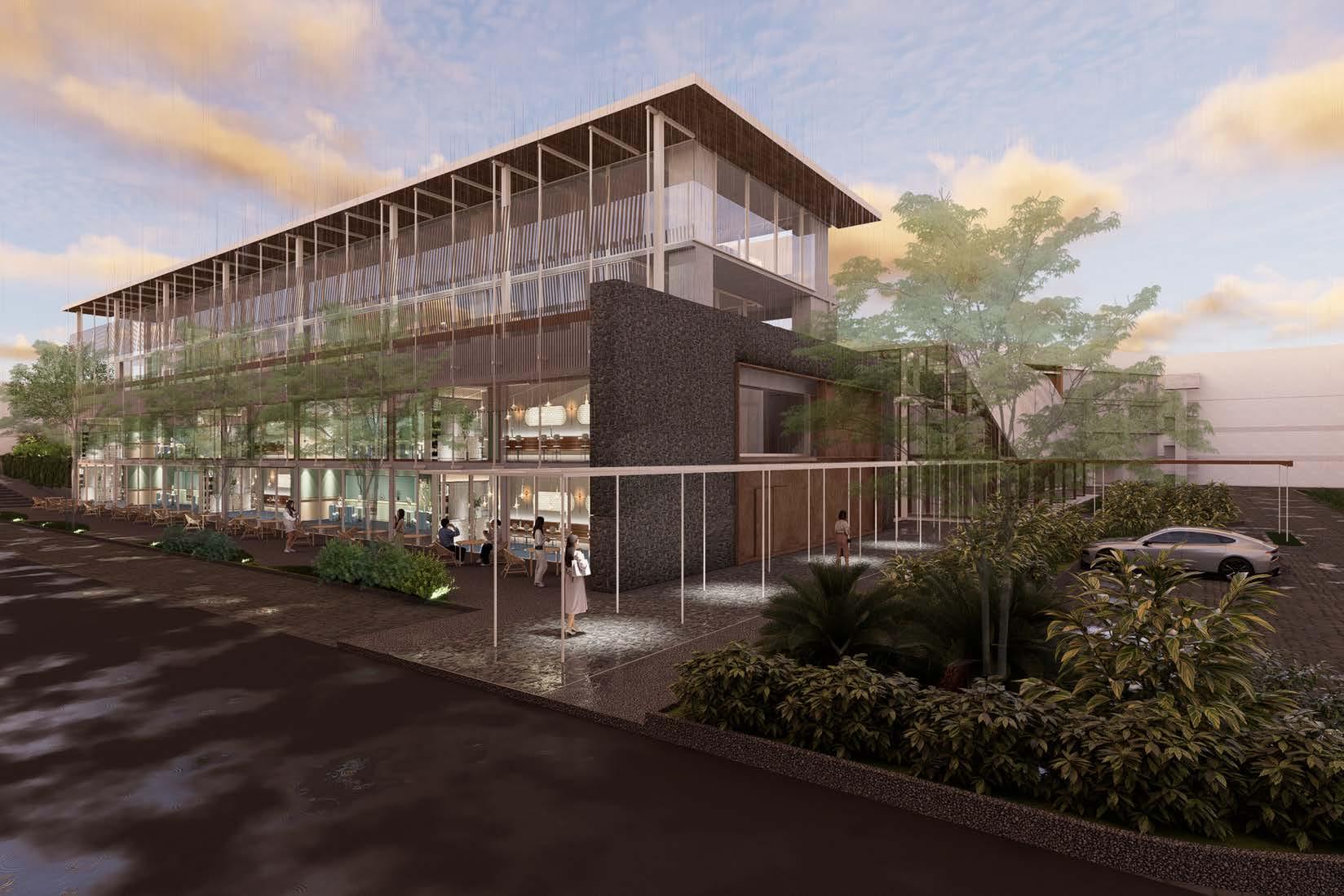
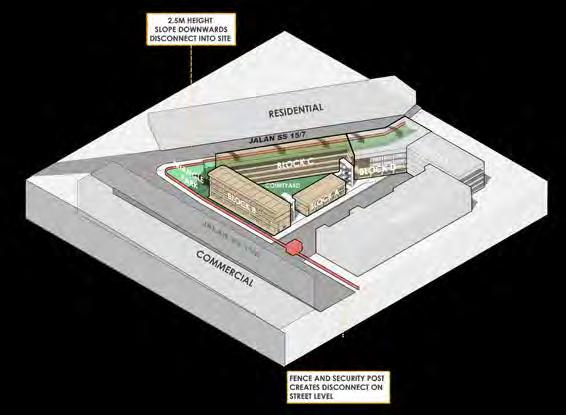
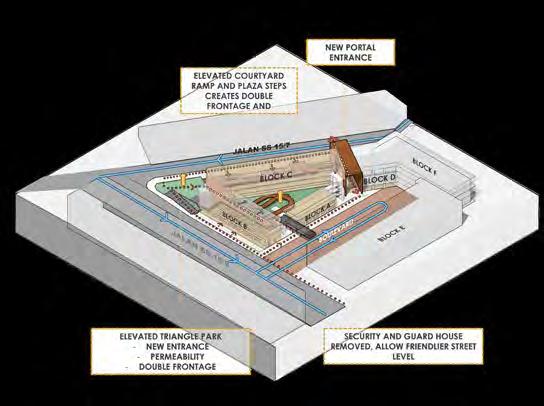
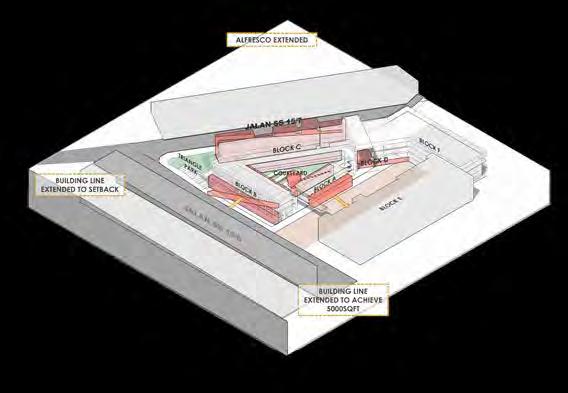
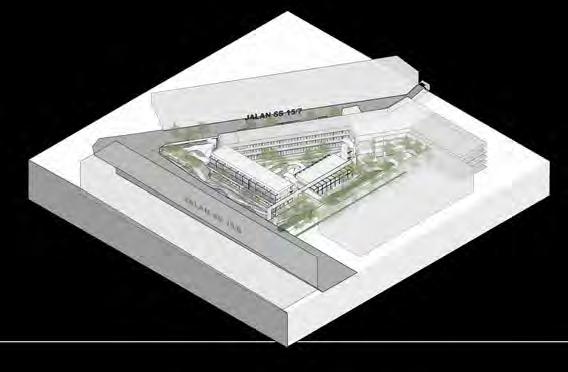
GROUND FLOOR
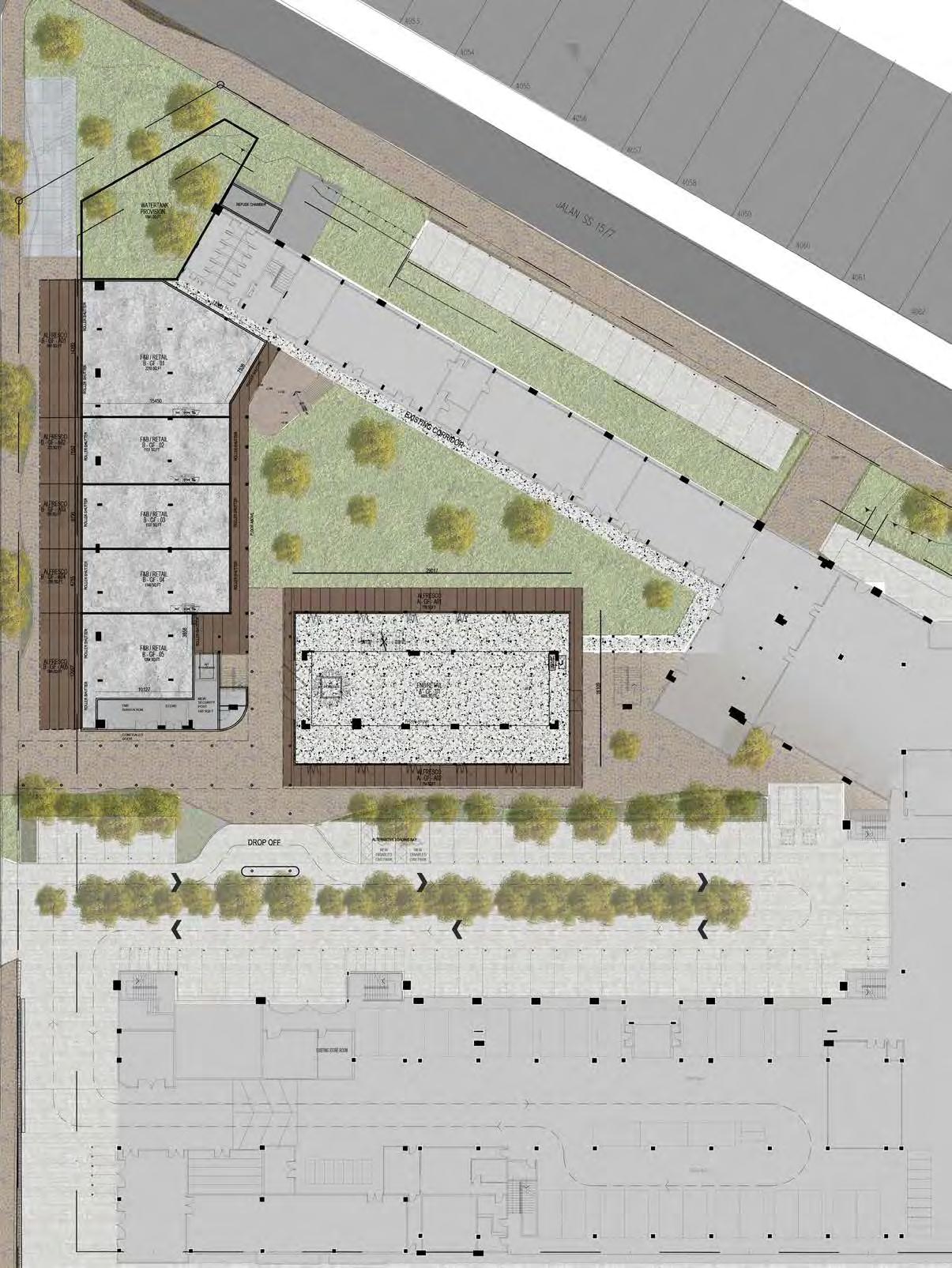
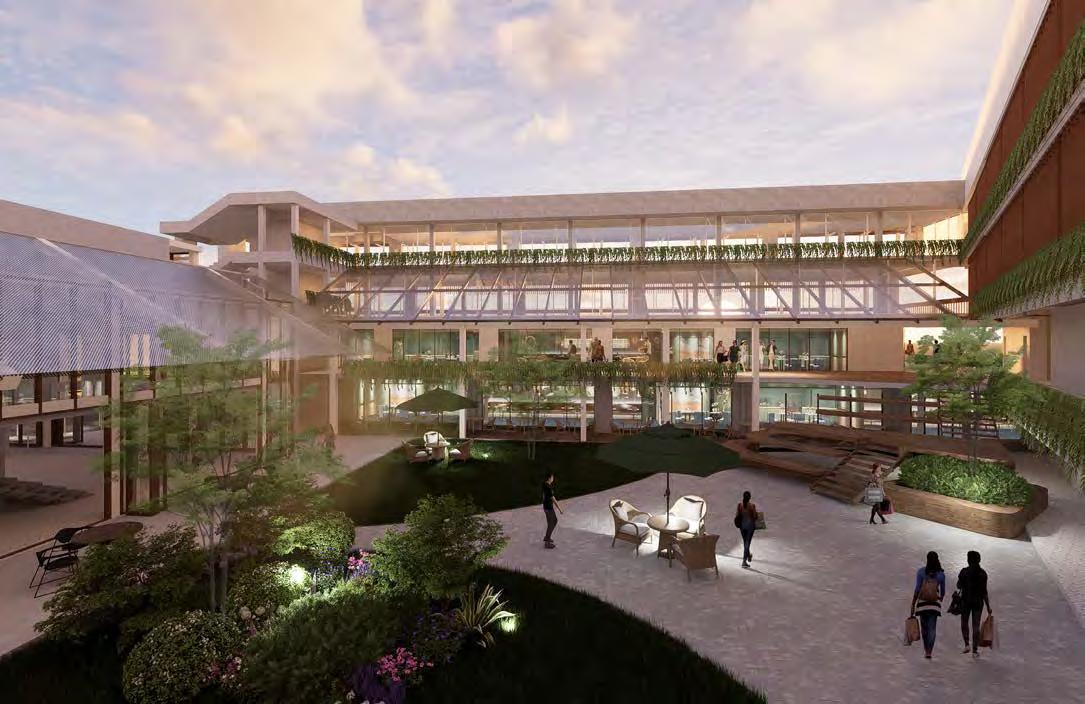
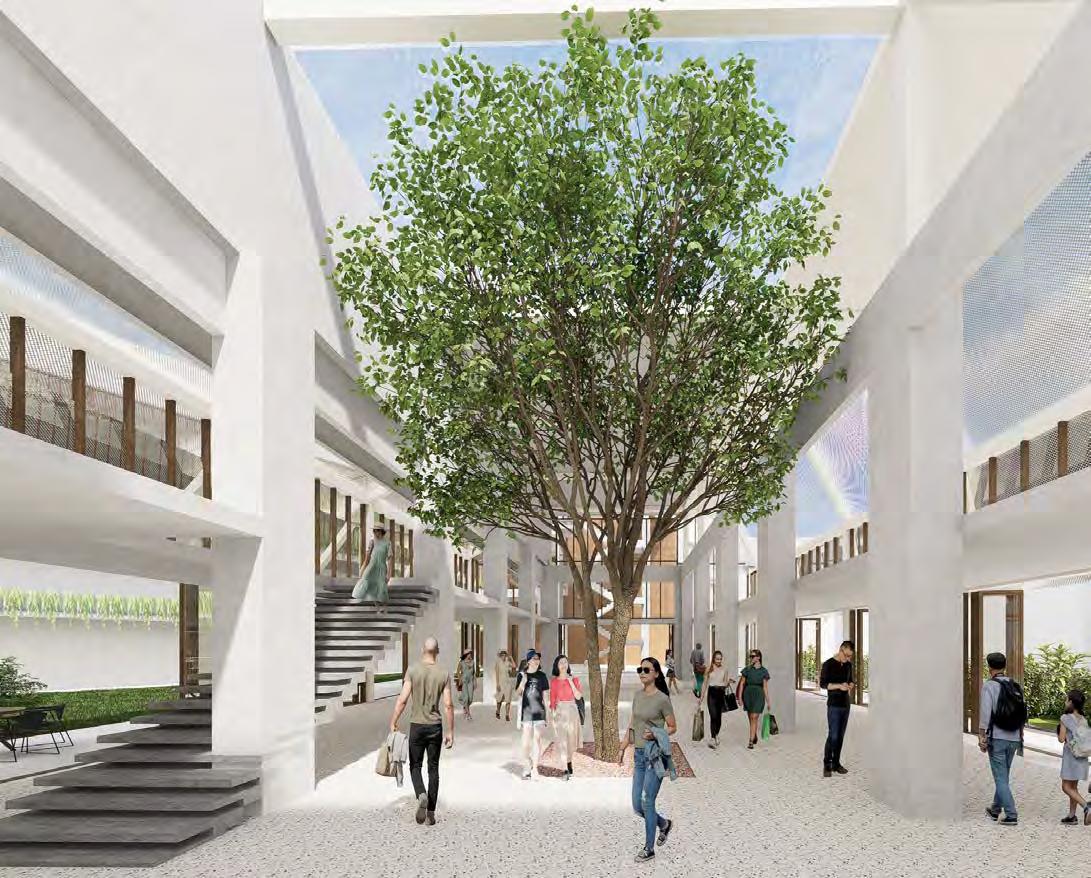
THE STAR / KL
Location: Kuala Lumpur
Year: 2021
Role: Design Assistant
Team: Jun Ong, Ronald Lim, Sunil Raj,Angie Lee, Viktor Zeidler
Phase: Completed
FISSION, FUSION & FACETS
In 2015, “Star” was born in the quiet, industrial town of Bu tterworth, Penang. It then dissolved and disappeared into dormancy. In 2021, at the tail end of a pandemic, a phenomenon takes place in the heart of Kuala Lumpur. A starburst. Its new host, known as the Air Building, is a composite of raw concrete and shards of metal situated on the threshold between nature and city. Moulded by time, materials and energy, the new “Star” takes on a starburst form created by an accelerated fusion of various surrounding elements. As a result, intense trajectories of light are formed, extending beyond its host and onto the textured, cultural tapestries of the city. Throughout its time here, “Star” will learn, adapt and provide us with new facets of thinking as terrestrial, cosmic and human beings. Like all organic matters, the decay of “Star” is celebrated. Over time, its illumination is reduced and after 122 days, “Star” dissipates and lives on in hyperspace till it finds a new host.
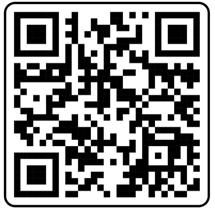
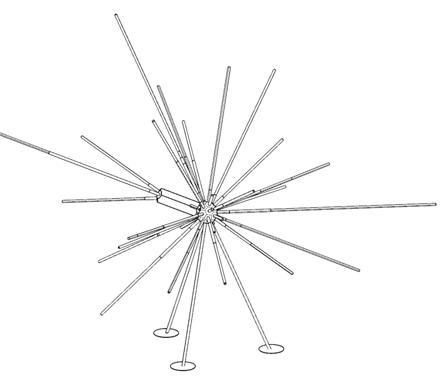
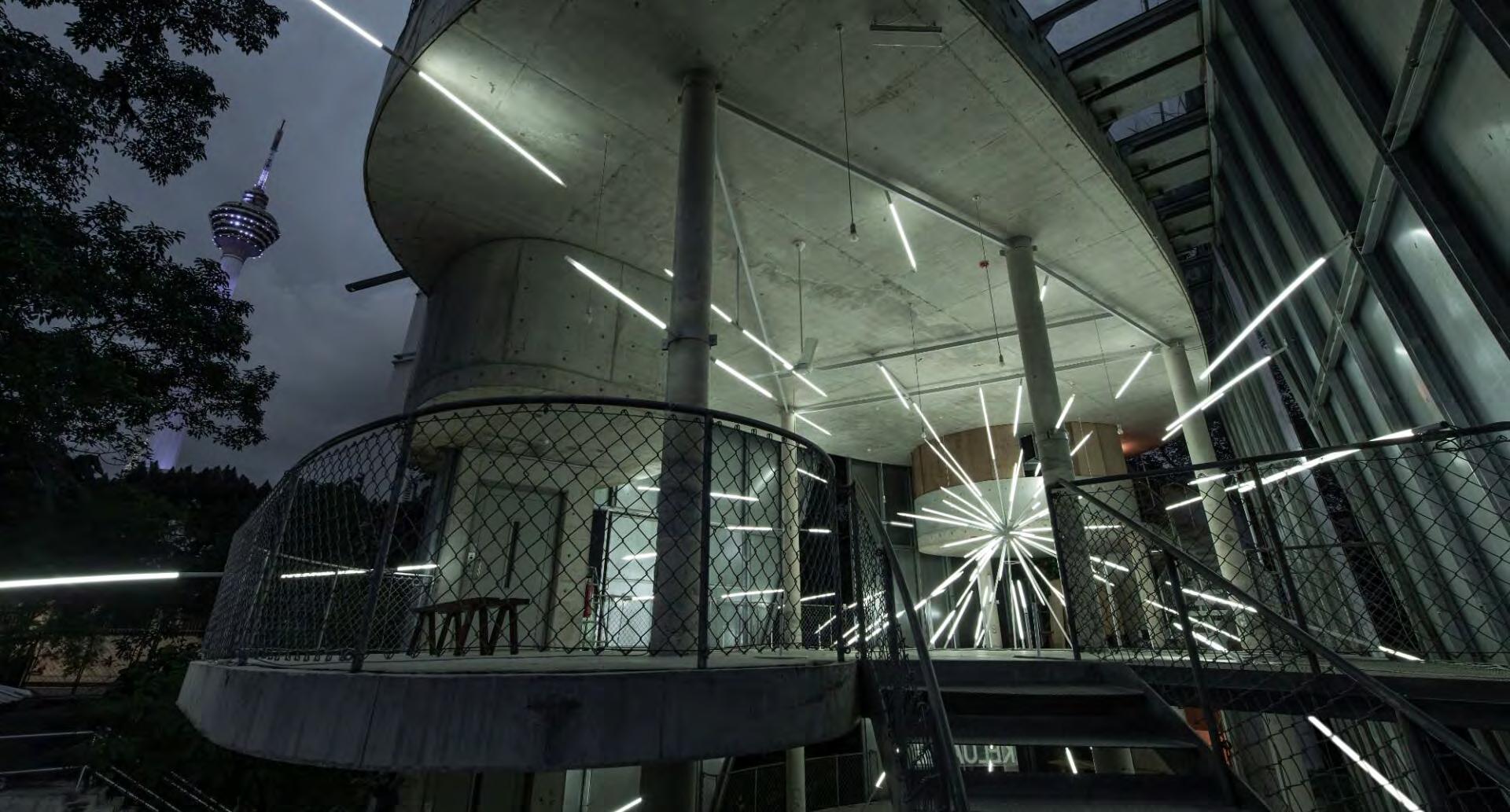
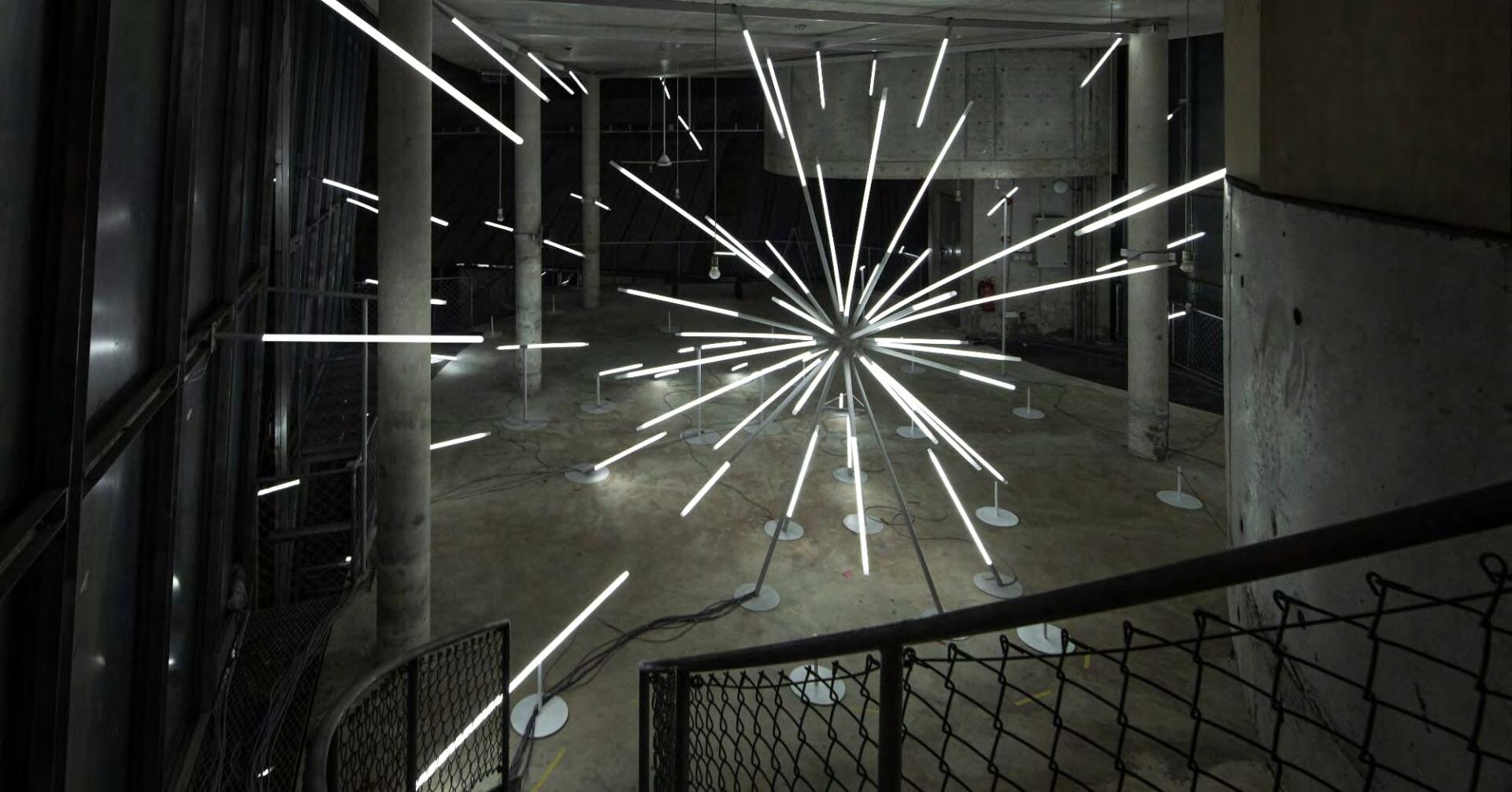
VIDEO
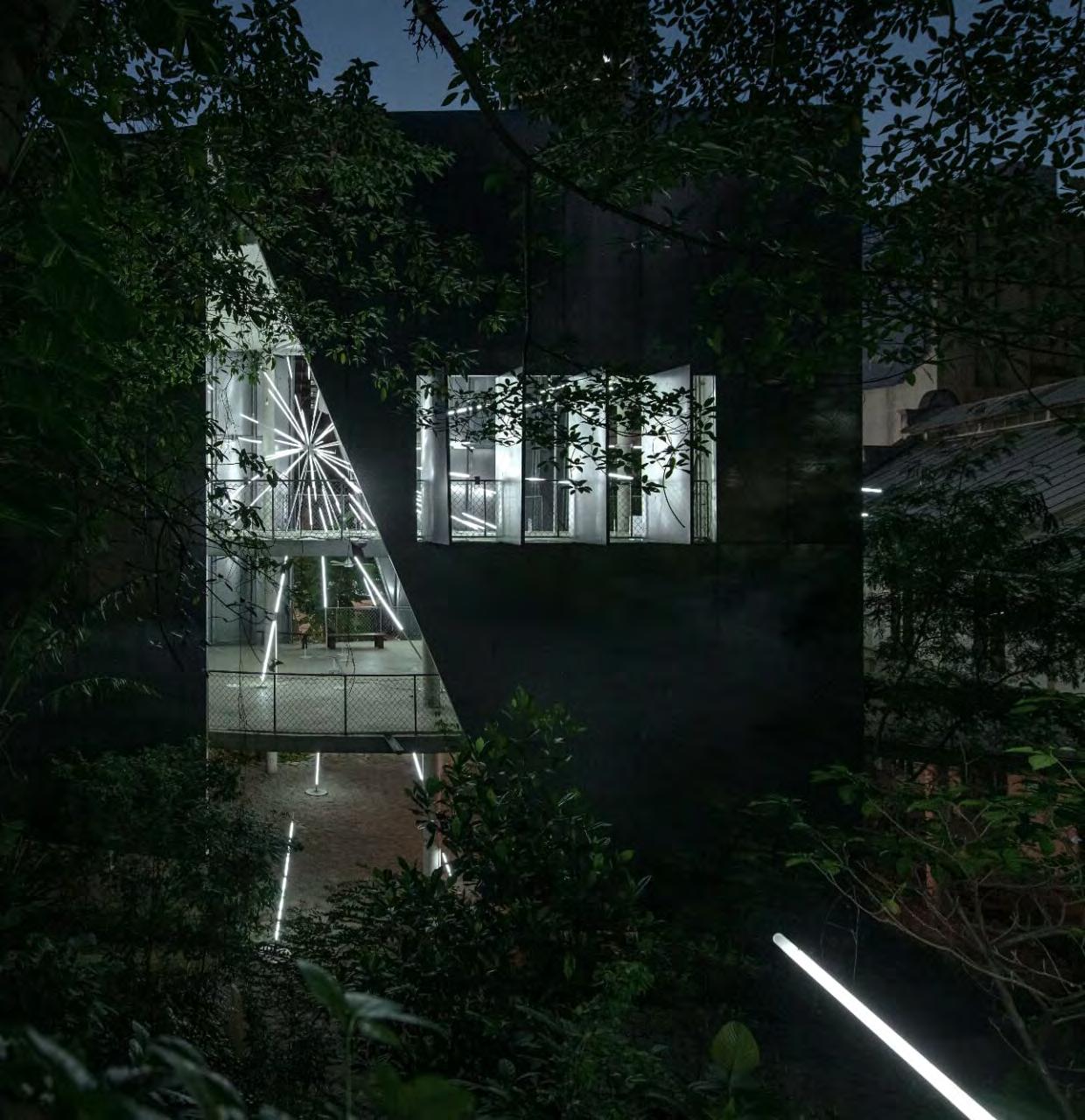
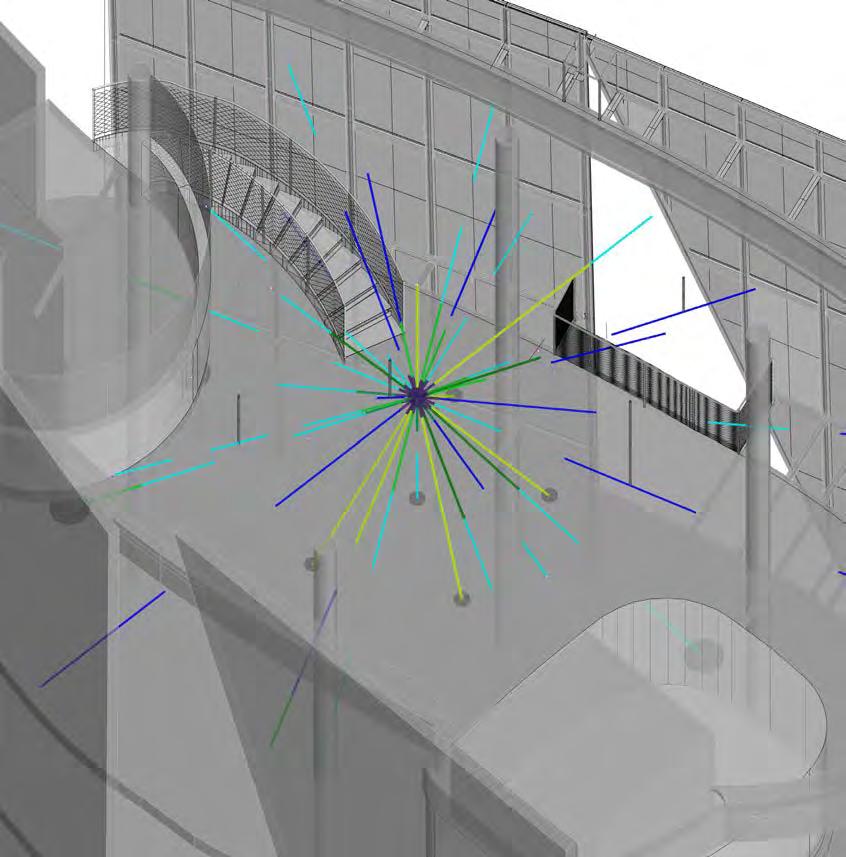
OVERALL AXONOMETRIC
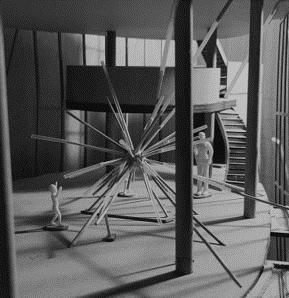
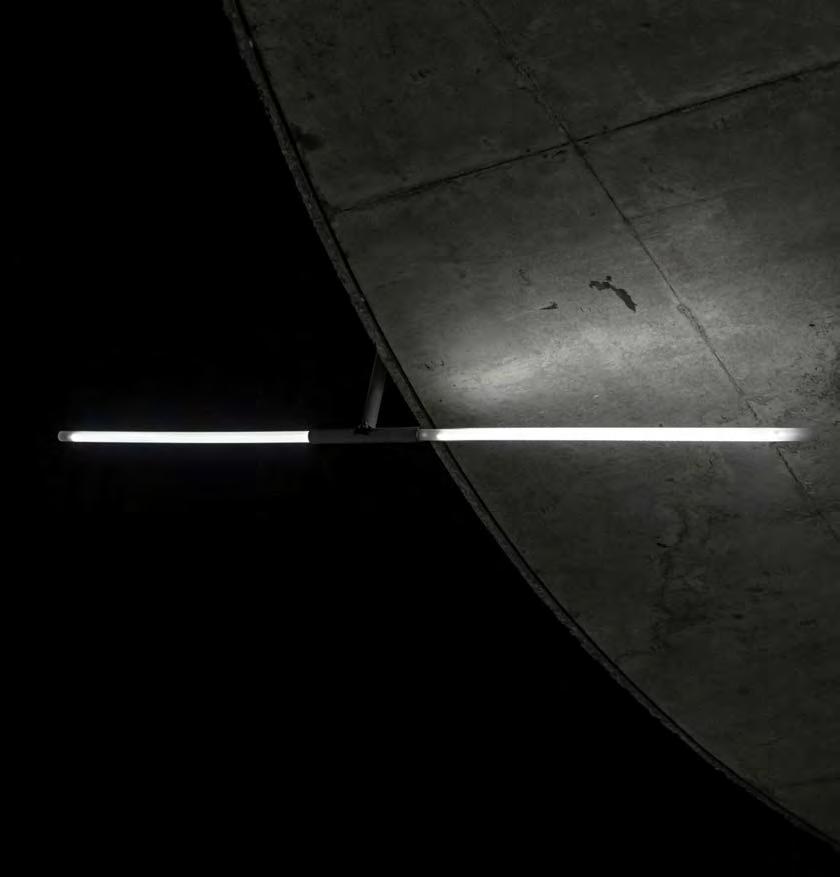
TUBE JOINTING DETAILS

11 RED SMOKE
Location: Jakarta
Year: 2023
Role: Detail Designer Site Management Filmography
Team: Jun Ong, Angie Lee
Phase: Completed
‘BROWNIAN MOTION’
Consisting of 150 metres of light tubes and 500 metres of ropes and strings; the installation is inspired by the smoke imagery formed by the “Brownian Motion.” This phenomenon is known as the uncontrolled or erratic movement of smoke particles due to their constant collision with other fast-moving molecules.
Bursting through the “AirDrop” crates, a singular particle flashes across the void, leaving behind its complex, glowing red trajectories.
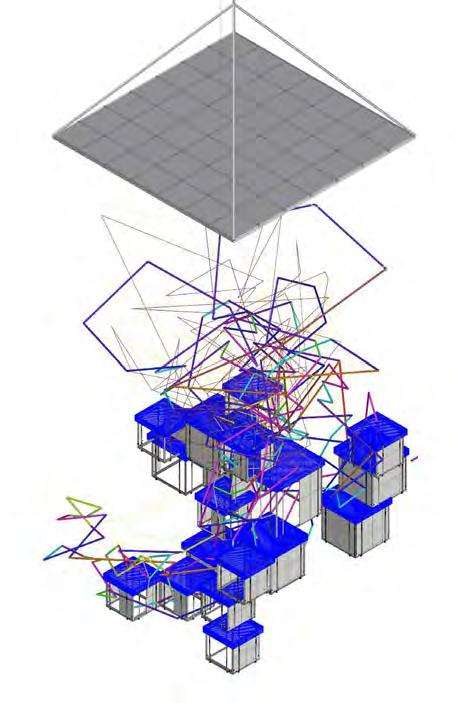
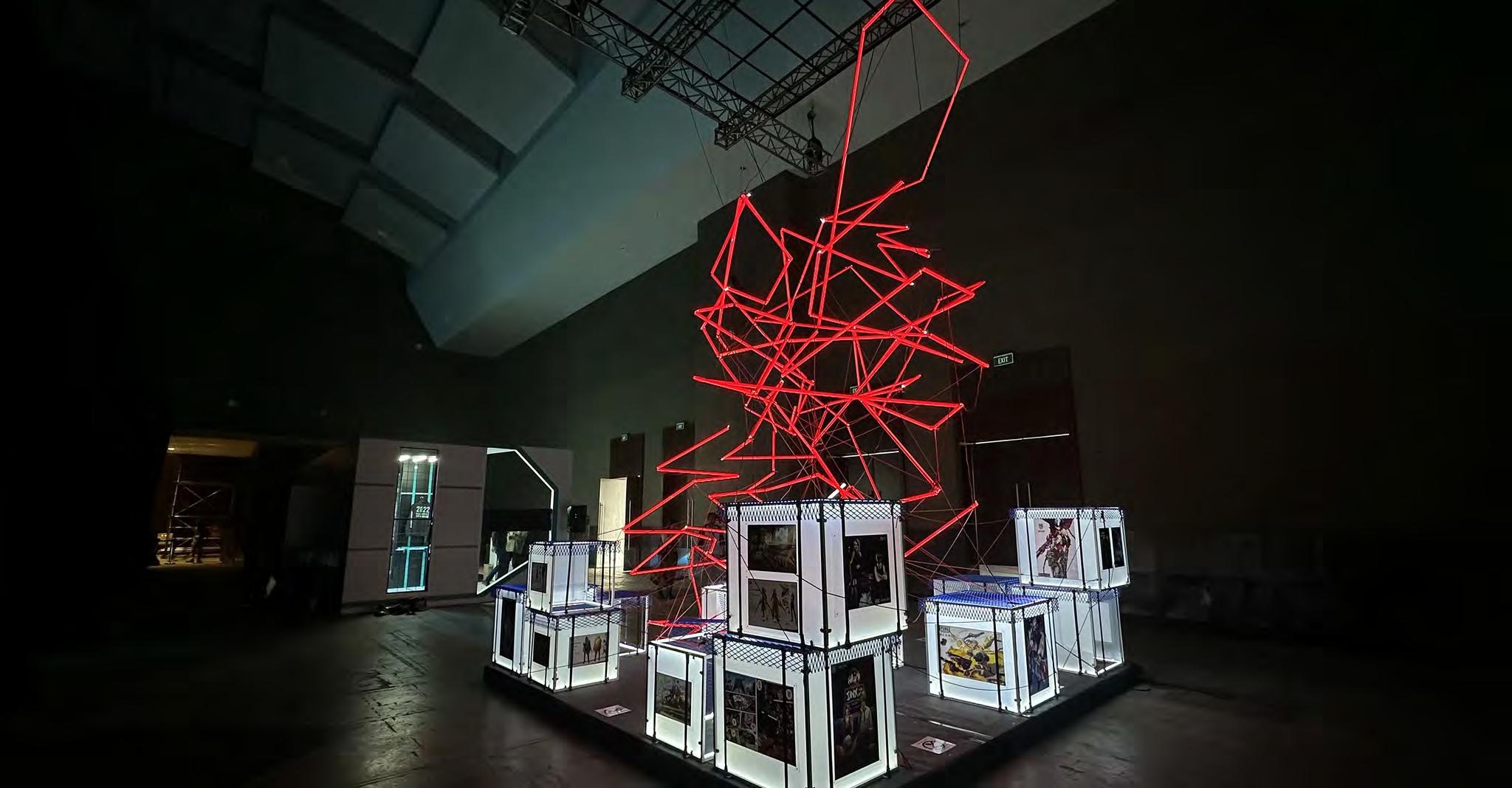
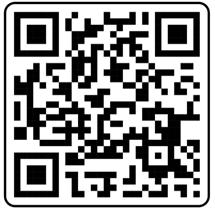
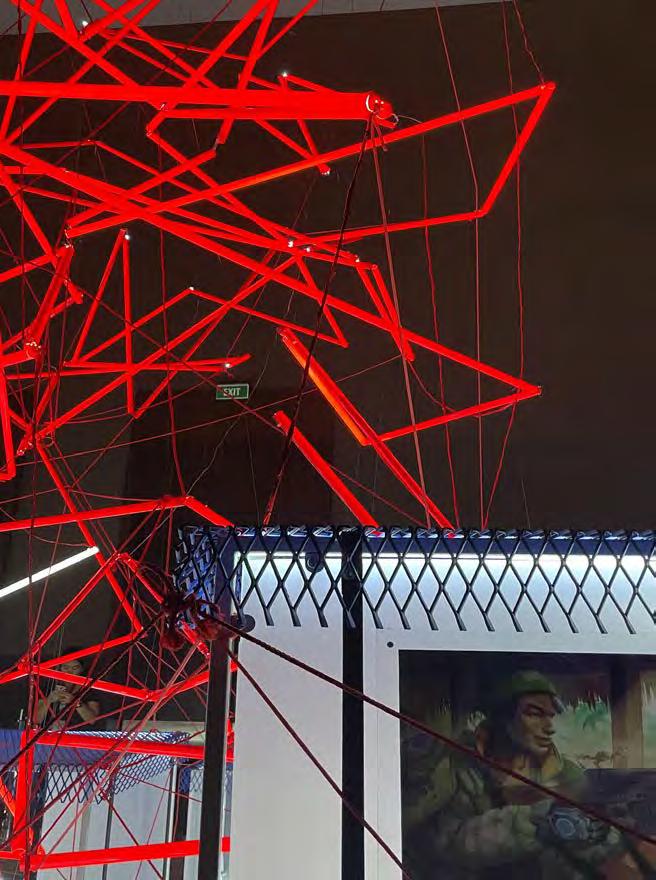
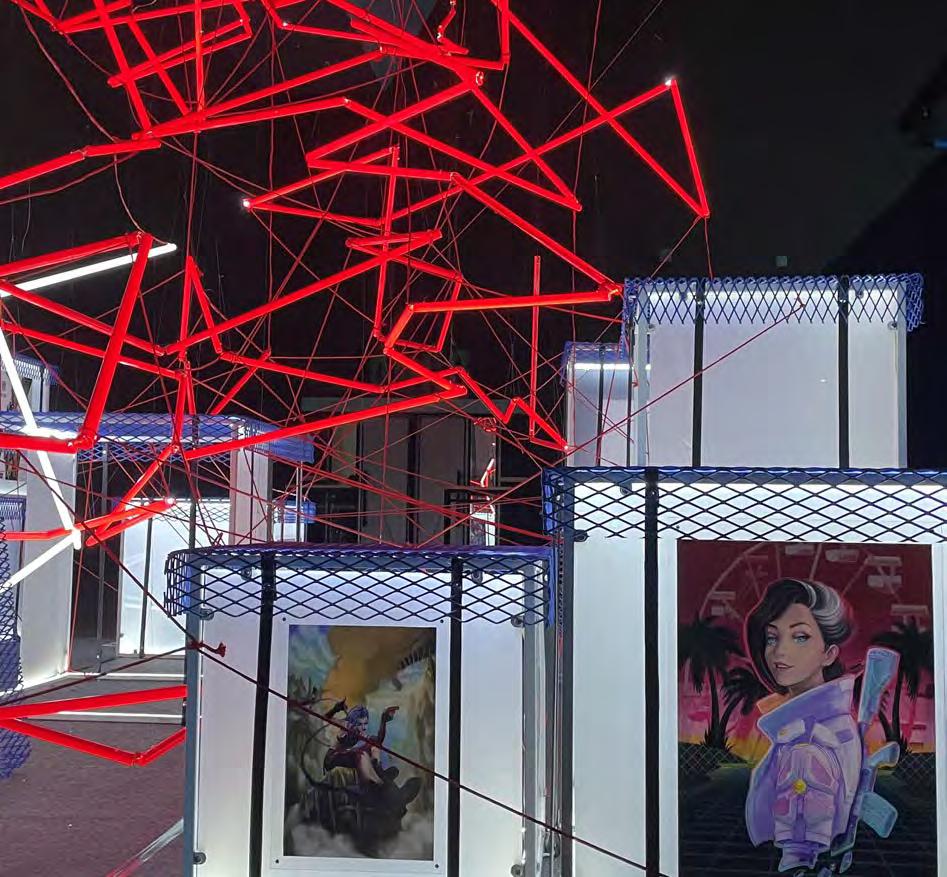

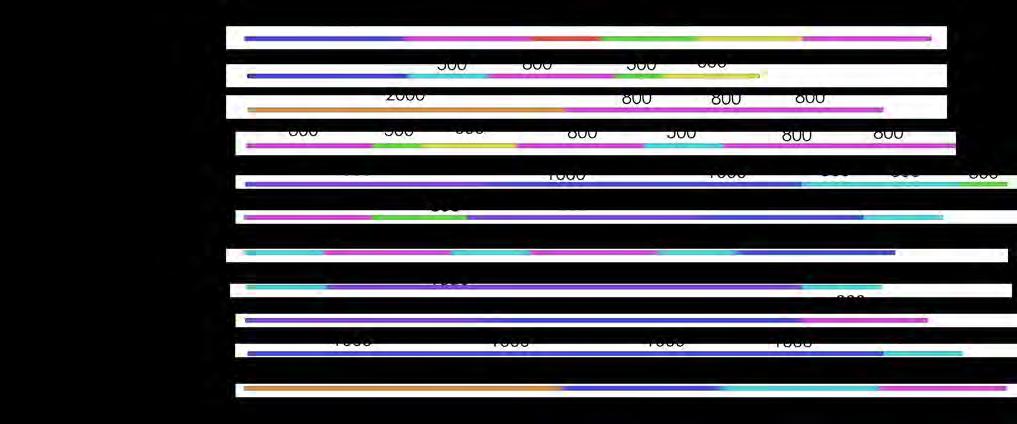
ACRYLIC TUBE DETAIL PACK
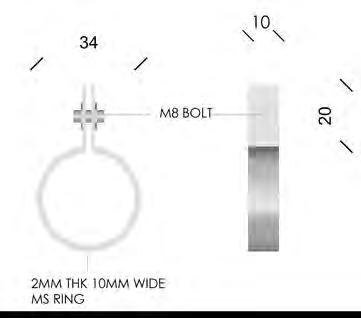
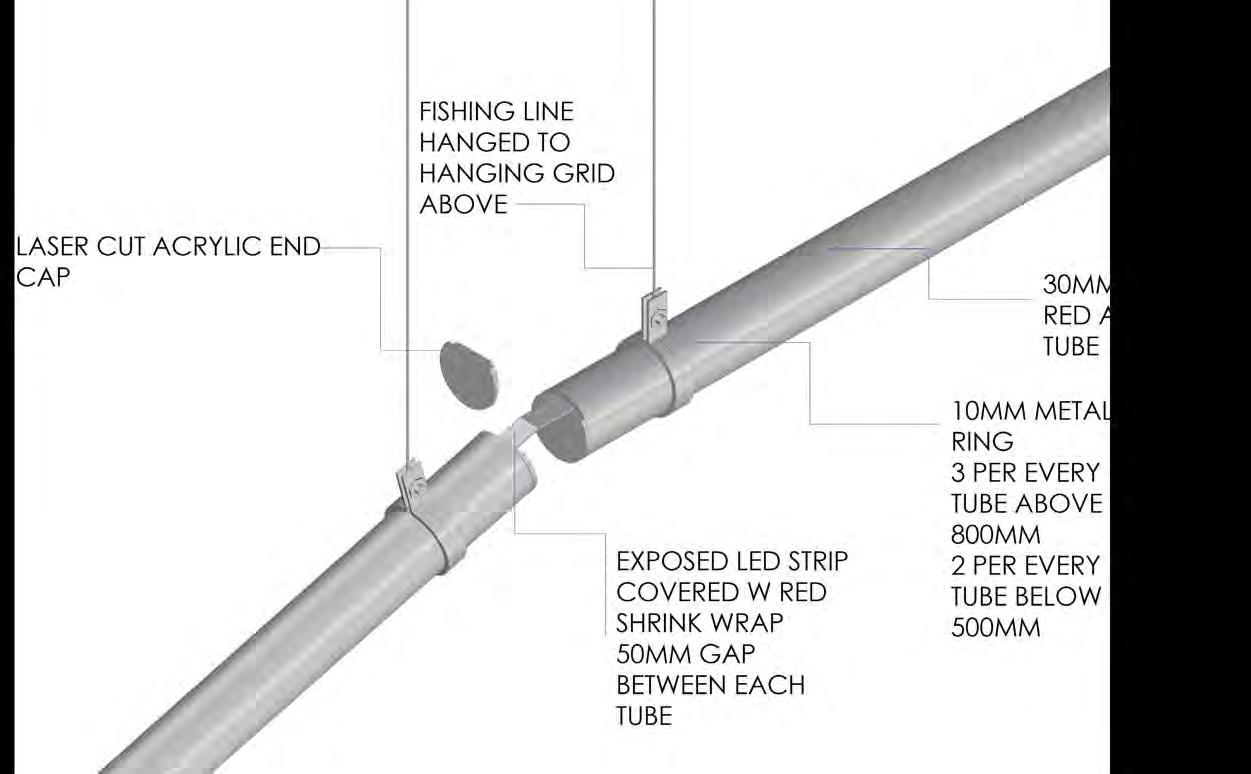
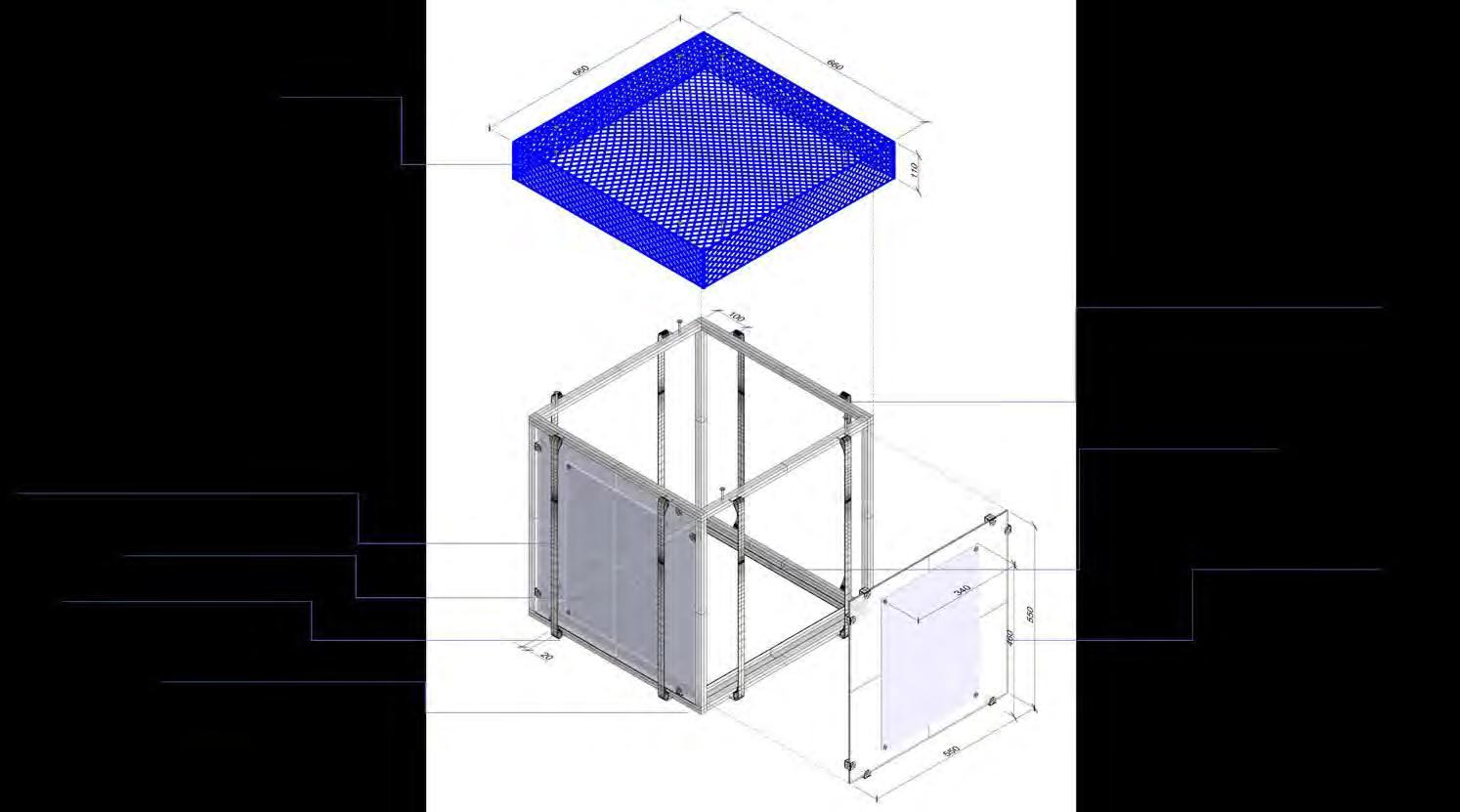
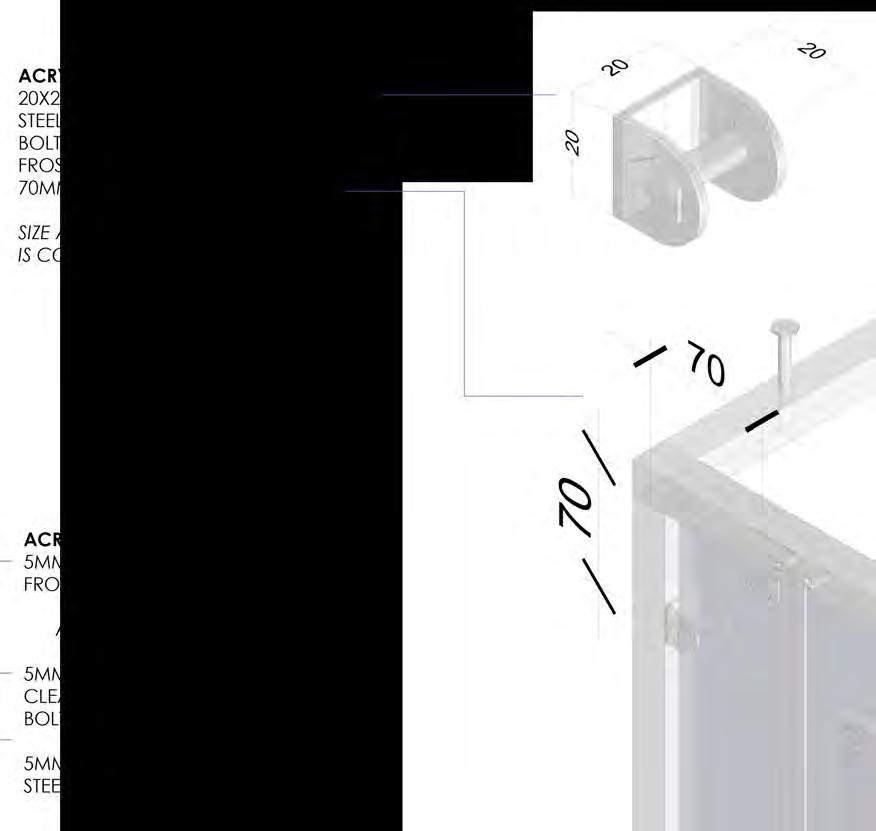
ACRYLIC TUBE TYPICAL DETAIL
ACRYLIC TUBE QUANTITY
CORALS
Location: Kuala Lumpur
Year: 2023
Role: Core Design Team
Prototyping
Material Procurement
Fabrication
Installation
Team: Jun Ong, Ng Xiao Lan, Angie Lee, Wong Yee Roe, Dexter Ng
Phase: Completed
Like corals engulfing a bridge, the installation is an immersive geometrical reef composed of a web of wire modules. These hand-bent icosahedron wire modules are adorned in a spectrum of folded coloured surfaces, evoking the vivid textures of corals. By day, this installation harnesses the sun’s rays to cast ever-shifting patterns of coloured shadows. At night, they come to life with an immersive, underwater-like glow, enveloping visitors in an ethereal oceanic aura.
